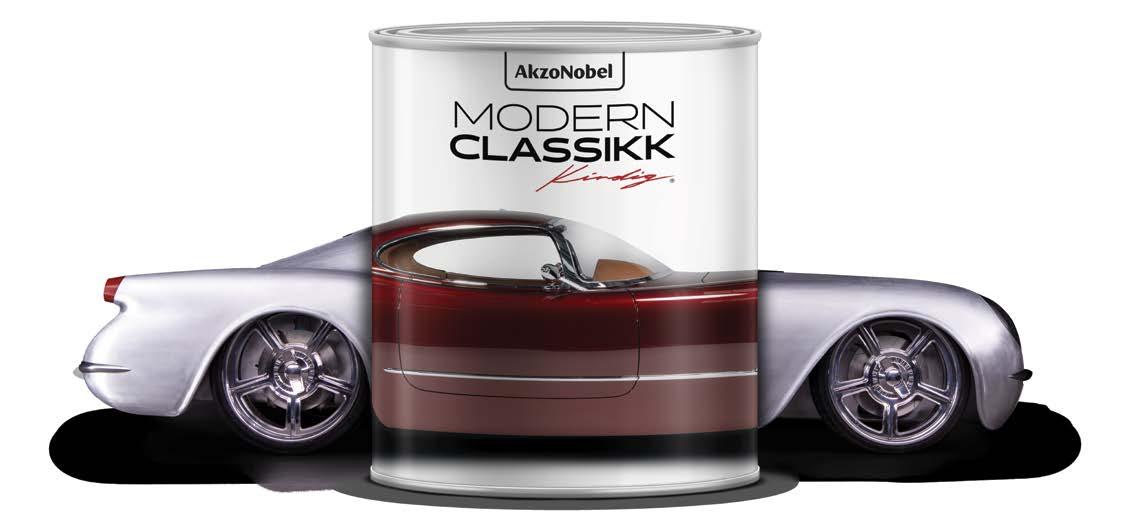




By John Yoswick Autobody News
Collision repairers say there’s still a long way to go before current systems that can help automate some aspects of estimating are able to produce something closer to the repair plan shops need, but some see the systems still offering some potential time-savings for shops.

Darrell Amberson of the LaMettry’s Collision chain of shops in Minnesota said he’s seen improvement in the systems that help repair planners locate the necessary OEM repair procedures for a given job. But he’d like to see so-called “AI-enabled” estimating systems get closer to creating detailed repair plans rather than just the automated preliminary estimates they do today.
“There’s a whole bunch of operations that you have to know about to look for that are not included or that may require some judgment,”
Amberson said during a Future Disruptions Committee discussion at the Collision Industry Conference (CIC) this summer. “At what point could we get more and more of those automated?”
The current photo-estimating systems, he said, primarily automate only the “write what you see” portion of what’s needed, which is likely more helpful for insurers than shops.
“I use the analogy of an egg in the bag,” Amberson said. “If you put an egg in a bag and I smash it, and I’m going to write an estimate on it, I can see it needs a bag, but really, I know it needs an egg, too. Couldn’t we get to that point that the initial estimates could recognize that as well?”
While not disagreeing that current automated estimating systems aren’t perfect, some collision repairers see them as potentially useful within their shops.
Andrew Batenhorst, manager of Pacific BMW Collision Center in Glendale, CA, recently offered a demonstration at an industry meeting of how his shop uses Mobile Jumpstart in the CCC ONE app to quickly create initial estimates.
“They have a lot of data in their system that they can use to identify some of the low-hanging fruit to let us make a very quick determination of what a repair cost might be,” Batenhorst said. “It requires taking only a handful of photos, and a few keystrokes on your phone.”
By Brian Bradley Autobody News
Legislation to establish a right to repair working group within Maine’s state government took effect Aug. 9.
The new law tasks the working group with developing recommendations for a bill that will form an entity to ensure car owners and owner-authorized independent repair facilities have cyber-secure access to vehicle-generated data for maintenance, diagnostic and repair purposes.
As the study group labors to propose a right to repair oversight board, it will be important to clarify the future body’s ability to draft and enforce rules, and receive funds to
implement those activities, Maine Attorney General Aaron Frey wrote in a July 3 letter to state Sens. Chip Curry and Tiffany Roberts
“Consideration could also be given to privacy and cybersecurity concerns relating to potentially sensitive motor vehicle information,” Frey wrote. “Accordingly, I have decided to proceed with creating the study group … before designating an independent entity.”
It has been a slow process to implement an underlying right to repair law approved by Maine voters in November. That law mandates car manufacturers make their vehicles’ onboard diagnostic systems accessible to car owners and
l CONTINUED ON
A New York man who owned several auto body shops in East Islip was sentenced in June for grand larceny after admitting to sales tax fraud, Suffolk County District Attorney Raymond Tierney announced.
Brian Soltan, 62, of West Islip, pleaded guilty in September 2019 to a felony charge of third-degree grand larceny. He admitted to failing to report about $2.8 million in sales between January 2011 and November 2015, resulting in $245,000 in unpaid sales taxes.
The sales were from several businesses Soltan owned in East Islip, including Long Island Auto Body, Inc., Long Island Auto Collision, Inc., Long Island Towing & Auto Body, Inc., Long Island Towing & Collision, Inc., East Islip’s Auto Collision, Inc., East Islip Collision, Inc., and High End Collision, Inc.
Soltan was required to pay $250,000 in restitution before his sentencing.
A second New York business
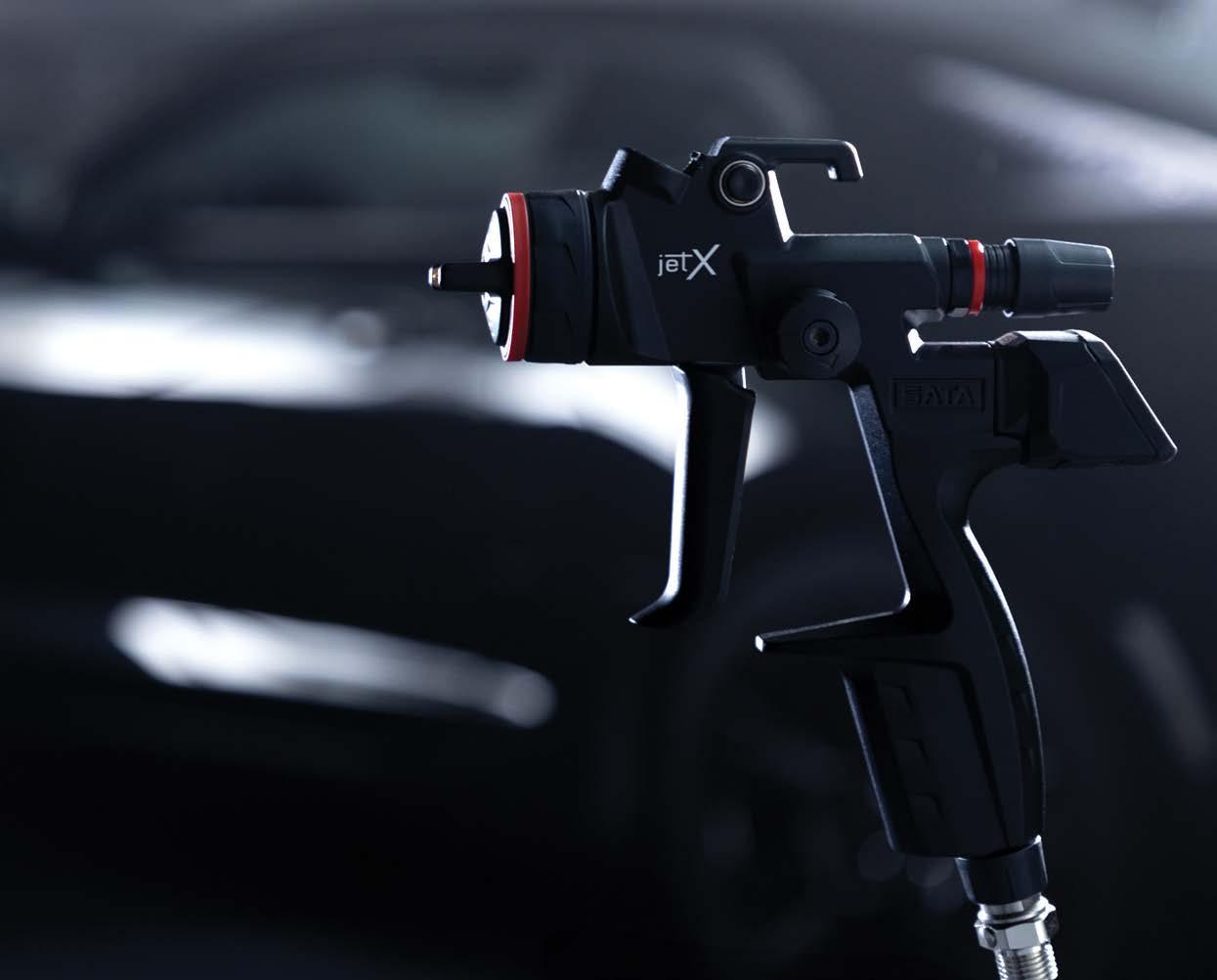

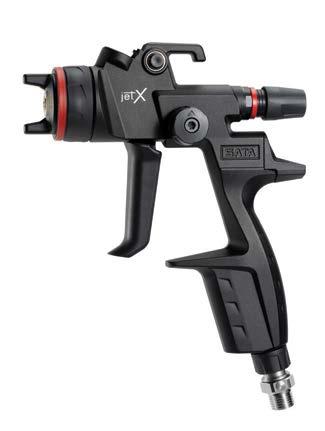


Mike Anderson
Shops, Insurers, OEM Parts Wholesalers Need to Understand Each Other’s Perspectives 24
Abby Andrews As Vehicles Evolve, So Too Must the Insurer-Collision Repair Relationship 38
Is Your Shop Overlooking Potential ‘Hidden’ Profit Centers? 63
Maximizing Collision Shop Profitability: Key Strategies for Financial Growth, Labor Efficiency 4
Porsche Technology Apprenticeship Program Celebrates 25 Years of Tech Training Excellence 42
Solving Your Shop’s Talent Shortage: Tips for Recruiting, Retaining Techs 16
Brian Bradley AI in Collision Repair: Applications, Challenges and Efficiencies 34 Maine Takes Key Step Toward Implementing Right to Repair Law 1
Elizabeth Crumbly Legacy Shops May Be Fewer, But Specialization Can Help Preserve Tradition 6
Holman Celebrates Century of Automotive Excellence 50
Honda North in Danvers, MA, Celebrates 50 Years of Excellence 54
New York Auto Body Shop Owner Sentenced for Tax Fraud 1
Pennsylvania Veteran Receives
Donated Vehicle from NABC Recycled Rides 48
ASE Awards 2024-25 Michael Busch Scholarships 10
Autel Releases Guided ADAS 44
CCC Payroll Revolutionizes Shop Management 60
CEO of Caliber Collision to Emcee MSO Symposium 54
Paul Hughes
Retiring Shop Owners Exit Industry for More Than Just Consolidation or ‘It’s Time’ 18
SEMA Garages Offer ‘Playground’ for Automotive Aftermarket Companies to Research, Develop, Test 8
Stacey Phillips Ronak
Blockchain Can Secure Data for 3D Printing in Collision Repair 30
Build Your High-Performance Team with Strategies from Collision Advice Coach Sheryl Driggers 22
Leona Scott 5 Reasons Auto Body Shops Are Bringing Their Glass Operations In-House 20
John Yoswick
Automated Estimating Seen as Far from Perfect, but Potentially Useful for Shops 1
Blending Process More Complex, Variable Due to Several Factors 12
Acme Nissan 31
ACT Automotive Staffing 58
Acura of Westchester 24
AkzoNobel 64
Anest Iwata 7
Audi Devon 60
Audi Wholesale Parts Dealers 57 Axalta 14
Biener Audi 42 Biener Ford 42 BMW Wholesale Parts Dealers 45
Brown-Daub Kia ����������������������������������������� 47
Cadillac of Mahwah 37 CARSTAR 15
Central Avenue CJDR 17 Certified Automotive Parts Association 56
BMW 59 Classifieds 62 Colonial Automotive Group 25 Courtesy Mitsubishi 47 CPS Products 56
Potsdam, NY, First Responders Learn Latest Vehicle Extrication Techniques 52
Queens Auto Repair Shop Pioneers Women’s Automotive Education 10
Tesla Receives Green Light for Massachusetts Store with Condition 52
U.S. Navy Vet Receives Refurbished Car to Support Family, Fellow Veterans 46
DePaula Chevrolet-Ford 36 Dover Dodge-Chrysler-Jeep 60
By Abby Andrews Autobody News
Until recently, Walk Link was a division vice president for Gerber Collision & Glass, overseeing nearly 200 stores in the company’s West division.
Link joined Cole Strandberg, host of The Collision Vision podcast, driven by Autobody News, for the first episode of its new series, “Operational Excellence: Shop Strategies for Success.” Link talked about financial management and growth planning, as well as his newest professional pursuits — including an innovative new tool he thinks will help shops address their labor shortages.
After serving four years in the U.S. Navy, Link was looking to transition to civilian life. In 1997, he opened a collision repair center with a business partner. A few years later, Link sold his share of the business to his partner and then worked for different companies in the Atlanta area.
In 2019, he joined Gerber Collision & Glass, first as a regional vice president in Florida, then in Atlanta. In 2022, the company was restructured and Link was promoted to division vice president in the South. In November 2023, he moved to that same position in the West.
“It’s been a really good career for me,” Link said. “This business is a diamond in the rough.”
The overall health of a company is based on its bottom line, or earnings before income, taxes, depreciation and amortization (EBITDA.) “Topend revenue is for rookies,” Link said. “EBITDA is where the professionals play.
“I’m not trying to minimize what top-end revenue can do for you in your business,” Link said. “I’m just suggesting it’s how a person manages all the facets of their business that leads to higher EBITDA dollars.”
Link said there is a “sweet spot” where a shop’s indirect costs get to a point when top-end revenue starts ticking up, but getting there requires adding more employees to handle more vehicles.
In his experience, Link said, a shop doing around $275,000 in top-end revenue makes as much in EBITDA dollars as one doing $450,000.
“I can prove that all day long, because you cannot stretch people out so thin, you’re going to start losing out on CSI,” Link said. “I’m not
saying that you can’t grow organically and go from $275,000, but you do need to be prepared that your bottom line is not going to start actually seeing the rewards of that increase in top-end revenue until you get to that $475,000, even $500,000 mark. Then you’re going to start seeing a significant improvement in your EBITDA dollars.”
When creating a budget, Link said the aim is see organic growth year over year. The goal amount will vary from shop to shop, whether it’s 1% or 10%.
“Financial growth is not always about the top line,” Link said. “It is my humble opinion that bottom line growth is way more important.”
The bottom line — or EBITDA — shows the strength of the company’s leadership in managing its employees, and represents how much an owner can reinvest into the company.
Owners need to be aware of indirect costs, like overtime for employees who support the company’s sales but don’t directly contribute to them, like the general manager, production manager, estimators, CSRs, porters and parts coordinators.
“Managing their overtime can be an absolute EBITDA killer,” Link said. “Don’t get me wrong. There is good overtime, in every business. But how you manage that and those indirect costs most likely will be the difference between being EBITDA positive or negative.”
“Labor efficiency” is based on the number of hours a tech can turn compared to the number of hours they are on the clock. Link said as a shop general manager or owner, he likes his techs to be around 200% — meaning if they are on the clock for eight hours, they can flag 16.
A tech’s experience level affects how repairs are distributed, because that plays into their labor efficiency.
“You don’t want your most junior technician performing the most difficult repair that you have or vice versa, and that’s why we have categories, A tech, B tech,” Link said.
“Labor is by far the No. 1 place that can have the most significant impact on our gross profit, because it has the highest margin opportunity,” he added.
Parts are another important line item in a shop’s budget. Link said while it is important to build and maintain good relationships with vendors to ensure your shop is getting the best discounts, sometimes it also pays off to shop around.
“People love to talk to the same [parts] people because they think
they’re going to take care of them,” Link said. “I am not saying that they won’t take care of you if you ask them to give you a better discount, but I certainly would call around and just make sure, because the margins on parts keeps lessening and you need every dollar you can get.”
Parts coordinators also need a tight system for following up on parts credits.
Shops need to make sure they’re charging for everything they do to restore a vehicle to pre-accident condition, Link said.
“I’m not talking about inflating repair costs just to make a profit,” he said. “But you do need to make sure that your team is educated on what our insurance partners allow us to charge for. That changes all the time, due to the ever changing ways that vehicles are being repaired.”
Just adding stores for the sake of upping your store count isn’t a healthy strategy, Link said.
Location is important, which includes making sure the market can support another collision repair shop. Look at population growth projections for the next several years. Having the right team before expanding is also key.
“I would say there can come a point where you may lose focus on whether growth is just going to be a win for your owners or your shareholders, or whether it’s just going to be a win for your employees’ bonus structure,” Link said. “I’m not suggesting that financial responsibility gets negated when people look at growth. But you gotta have discipline.”
Company leaders should keep up with professional development and keep an eye on industry trends, like the impact of OEMs’ new production methods on being able to repair them after a collision, which can require new tools and training for techs.
Link said there is strength in numbers — a larger group of repair shops can have a more influential relationship with insurance companies on how repairs should be performed and what they should be paid for.
“I personally believe private equity has a has a huge role in what we do,” Link said.
He said in addition to the big five consolidators in the U.S., another segment should grow: “Maybe 20 or even 30 more private equity companies that get 100, 150 stores,” Link said. “I think there would be
some strength there. And again, I am not suggesting that it’s us against the insurance companies. It’s absolutely not. We need to figure out a way to be partners.”
Link said the top trend in collision repair is work in progress (WIP) levels.
“I think that the biggest trend that anybody needs to accept is that we are going to go down to 2019 claim counts,” Link said.
“We’ve spent the past three years enjoying the highest level of claim counts and WIP levels that we’ve ever seen in this industry, and for whatever reason, people are hitting the panic button now,” Link said. “And I understand why. We’re just now getting back to pre-pandemic levels of work.”
As ADAS evolves to prevent more collisions, it will also contribute to a degradation of claim count.
“But don’t forget the severity of claims has gone up tremendously,” Link said, as parts prices have increased and ADAS needs to be recalibrated.
“Maybe we really don’t have a tech shortage,” Link said. “Maybe we are just not utilizing the techs that we have the most efficient way.”
Link said he is developing a “tech share” product, called Bolt, that will allow a shop to bring in a body technician, paint technician or estimator to work during their downtime at another shop.
“What if there was a system that could utilize all that downtime that we all know technicians have and that they are going to have here moving forward, with the claim counts going down? What if there was an app or a website where you could utilize that as tech share? Think about the savings in terms of benefits, in terms of payroll taxes, all of those things.”
Link said he is introducing Bolt to the industry at the 2024 SEMA Show in Las Vegas. People can visit bolt. com to see what’s coming when the product launches in November.
“I’m going to show everybody how tech share is going to revolutionize our industry,” Link said. “It’s the gig industry,” he said, comparing it to Uber.
Link said he is also talking to a private equity firm about investing in acquiring some collision shops and building more, so he can operate them the way he sees fit.
“I can’t tell you how excited I am about that,” Link said. “I got to do it
Tailored systems, unmatched precision, crafted for your shop.
Technician
Companion


By Elizabeth Crumbly Autobody News
Kevin and Meredith
Bradshaw
were K & M Collision. Kevin started the business at 20 years old and bootstrapped it with one employee and his wife by his side as the couple raised five children. Now, four of their boys work in the business in some capacity, and the couple has taken a step back into retirement. It’s their sons’ turn to service the luxury owner clientele that seeks out K & M above other shops in the region.
Passing the family business down through generations is the dream many small business owners entertain when they get things off the ground, but it’s one that’s becoming more unusual.
“I think a lot of parents are not encouraging their kids to be in this business,” said Josh Kent, executive director of the Carolinas Collision Association. “We’ve been in such a buying market for the past few years. I see a lot of guys just throwing the towel in and selling their shops.”
The question, though, is why is the legacy shop dwindling?
The COVID Factor
The frequency of situations where children buy shops outright from parents or pay a percentage to founding family members and take over after functioning as managers in training is decreasing, explained Kent. Today, it’s more common, he asserted, for chain organizations to buy privately owned shops.
It’s a trend he saw intensify after the pandemic. The rush that ensued after businesses began opening back up contributed to a lot of shop sales.
“We saw a mad rush of vehicles after COVID — like shops had been busier than they’ve ever been in their history,” he said. “Because shops were so busy — and I mean it was just chaos — I think they (chains) felt like it was a great opportunity to get in there.”
On the flipside of that equation are shop owners’ shortcomings.
“A lot of people were not prepared for COVID,” Kent said. “A lot of shops had been running their businesses like they’ve been running them for the past 20 years, and so, when COVID hit and shut down everything, a lot of people went broke and didn’t have the funds.”
An ongoing lack of education across the board and a shortage of employees has continued to contribute, he contended. And structure can be an issue— businesses often don’t have the setup to bring in
new people or to administer proper training.
“A lot of shops have the old school mentality, and that old school mentality is ‘Stick a broom in their hand and see if they stick,’” he said. “I’ve talked to several shops who start off some of these new employees as a detailer, and I understand keeping them there for a very short time because most people don’t want to be a detailer. They find that they’re getting stuck in a position that they feel may go nowhere. They’re going to leave.”
‘He Had This Vision’
Mindset shifts in an industry that’s experienced massive change since K & M opened more than three decades ago seem almost mandatory. Kevin

Bradshaw touched off a spark in 1991 that he painstakingly puffed into a fire he could hand over to his sons. But it wasn’t until that second generation joined the business that things truly blazed.
Kyle Bradshaw is currently the company’s director of fixed operations, and he also serves as president of the CCA. His brother, Michael, got involved in the family business right out of high school nearly two decades ago. Michael brought to the endeavor an analytical nature and a love of reading.
“He just did a lot of reading through trade publications … (He) had heard about the certification route and decided to talk my dad into investing some money into some equipment. I think my brother was 18 at the time and actually approached our local Volkswagen dealer to ask them if they would sponsor us for the Volkswagen certification program,” Kyle recalled. “That’s really when our business took off. He had this vision to kind of grow it.”
Today, the business serves luxury and higher-end clientele, and despite its comparatively out-of-the-way
location in Hickory, NC, an hour north of Charlotte, the decision to go niche has gone a long way. Covering a whittled-down market allows the shop to reach significantly beyond its physical location, serving customers within a four- to five-hour radius. Pick-up and delivery, Kyle said, play in significantly. The business has about 130 vehicles on site at a given time and processes around 100 of them each month.
Kyle, 32, is now director of fixed operations; he joined the business after pursuing football and business studies at Wingate University in Monroe, NC. Michael is vice president, and two younger brothers, Beau, 27, and Aaron, 25, work as technicians. Kevin and Meredith are semi-retired now — they’re involved, but not on a day-to-day basis.
The business staffs 30 employees, and there are imminent plans to increase the shop’s footprint by 25,000 square feet to include a calibration center.
While the situation has worked out for the Bradshaws, it’s come with significant hurdles. Working closely with siblings daily, Kyle admitted, can be a challenge, and the physical work and long hours can be unattractive to those who came up with an inside view of the business.
“Growing up, because of how hard I saw my dad work, I was like, ‘Well, if you’ve gotta work like that all the time, that’s not for me,’” he recalled. “Dad did this really from the time he was 16 all the way up until about 50, and so his body has certainly decayed, and he’s certainly feeling the effects of how hard he’s worked his whole life.”
Like Kent, Kyle sees the oncoming wave of industry consolidation.
“I don’t think it’s the norm anymore,” he said of the family owned shop. “I think it’s pretty rare right now. And I think that’s going to become even more rare year by year for our industry because of the consolidation that’s going on.”
Ementi Coary, executive director of the newly formed Florida Auto Body Association, saw the oncoming wave of multi-shop operations buying up single shops when he was working in the Midwest nearly a decade ago. Some of those MSOs, he pointed out, were mom-and-pop organizations themselves, but lots of others were large corporations.
“The MSOs came into the Midwest and just started gobbling up shops left and right,” he said. “Instead of building new facilities, they were just buying ones that were already there,
and a lot of those were legacy shops.”
Difficulties like profiting plague legacy shops, he said. He often sees longtime owners cut deals to community members by doing the job right at a cost that goes beyond what insurance can pay. Shop owners, he said, can end up eating that cost. However, the upside of occasional favors is that customers return, he said, and legacy shops often develop reputations for doing the work correctly per OEM standards and with a more involved level of customer service.
And the upside of making sure the legacy trend survives is there’s room for a new generation of techsavvy, hungry entrepreneurs. It’s just important that the next generation finds a way to consistently charge for what the work is actually worth, Coary said, adding it behooves new industry members to find a niche.
He compared the typical MSO to a Walmart atmosphere where generalization is the norm. Private shop owners, he said, can excel by concentrating on a single corner of the industry like the Bradshaws have.
“One way of doing that is your paint company can do a report for you, or if you have a decent management system, they can run a report for you to tell you what the cars are that you mostly work on,” he said. “And then, take those top three cars and specialize in that brand and only work on that brand.”
Partnering with dealerships for brand certifications can be helpful in positioning too, he pointed out, as dealers will sometimes pay for the certification process.
The biggest challenge for Kevin and Meredith Bradshaw right now, it seems, is getting used to their selfimposed step back from a business they worked for so long to keep off the ground.
“That’s what they did every day for the last 30 years,” Kyle said. “I’m sure there were weeks where they weren’t sure if they were gonna be able to pay bills.”
Decades in, K & M, in several ways, embodies Coary’s recommended steps toward innovation and stability. For now, the endeavor seems well positioned to grow with the next wave of Bradshaws at the helm and in the trenches, thanks in large part to one couple’s commitment to the hard work of running a family owned collision shop.
“They, in my opinion, did the hard part,” Kyle said, “which is really laying the groundwork.”

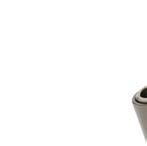
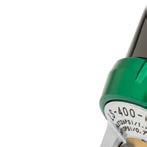
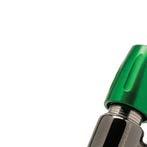

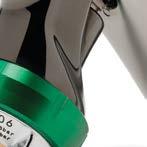




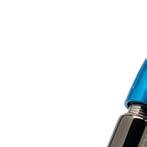

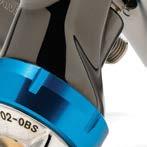
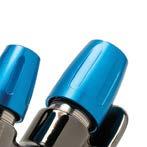
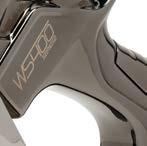
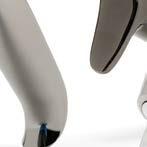


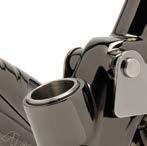

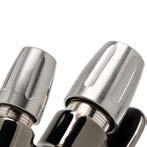
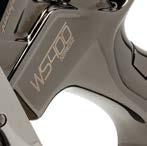
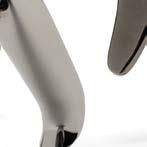

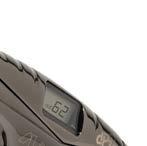
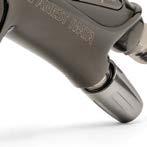




By Paul Hughes Autobody News
“We cut a two-year process to four months,” said Mike Spagnola, CEO of the Specialty Equipment Market Association (SEMA) about work at its SEMA Garage in Diamond Bar, CA.
The “process” is the one in which manufacturers’ products can get tested and certified by CARB, the California Air Resources Board, which monitors and improves air quality in the state.
He describes a previously extensive, expensive, complex — and at times confusing — testing process with “few labs doing the work.” And when “you did get the work done, it could take a year to get certification.”
SEMA “worked with CARB to streamline paperwork,” then built a team to help manufacturers fill out those forms. Testing space at the garages host the research and development legwork.
The Diamond Bar facility is one of two such SEMA labs; the other is in Plymouth, MI.
California is big, ruthlessly regulatory, and a locus of car culture where people year-round “drive up the coast.” In Michigan, they still make a lot of cars, and sweet stuff for them.
SEMA spent $25 million building the two sites over the last 10 years. Michigan’s facility is 45,000 square feet — an acre of space and four times larger than California’s site — and includes an Advanced Driver Assistance System (ADAS) product development area.
“It’s for manufacturers to grow their business, making more things to sell and finding more people to sell them to,” Spagnola said.
SEMA includes some 7,000 member companies. An internal study it did last fall said specialty equipment adds about $337 billion to the U.S. economy, and bolsters 1.3 million jobs.
Developing products “before they hit the market” — think outside developers working with Apple to craft accessories for coming laptops and smart phones — “was the genesis of SEMA Garage,” Spagnola said. It’s “research and product development,” he said, “helping our manufacturers get through compliance, and understand the effects of modifying a vehicle.” SEMA also works on industry legislation and provides data from garage research to members.
So, sites do “behind-the-scenes” work, preparing products for market,
with two crucial efforts being CARB and ADAS work.
CARB has developed a rep for hardnosed regulatory moves, especially through the 1970s and ‘80s, when smog infused the California sky, darkening the California dreamin’, and air quality was a daily element of weather reports on local news.
It took flak for this but, based on results, seems to have stuck the landing — at some cost.
Whatever one’s view, it’s business reality here.
For CARB, “No” is a complete sentence. On the other hand, so is “Yes.”
If makers can make it there, they can make it anywhere. Get a CARB nod in Cali and you’re good to go. It has OK’d both Garage sites for certification-level automotive exhaust emissions testing.
Spagnola added the EPA accepts CARB certification as the Golden State’s gold standard of emissions.
Only a dozen other U.S. sites, as of early this year, offer similar testing, according to SEMA.
A decade ago, ADAS wasn’t even part of SEMA’s plan for the sites. Growing vehicle complexity prompted adding it, and SEMA put $1 million into the effort.
Its ADAS arena can test “stock” specifications and variables one day, fine-tune post-repair calibration the next. What are the effects on ADAS, for instance, of modifying vehicle height? What changes when fixing damage where system sensors sit?
Automotive technology changes rapidly, said SEMA Director of Vehicle Technology Luis Morales
He tracks and responds to industry-wide shifts — ADAS, zeroemission vehicles, overall equipment evolution, along with internal combustion engine work. A third of SEMA members make products for that ostensibly old-school platform, he said.
“Part of my job is to identify the challenges, see what’s changing, what you should be aware of, and how it will affect your specific product,” Morales said. People still “want to modify and personalize, but how they did it five years ago might not be how they do it five years from now.”
His portfolio also includes advocacy at the legislative level as new technology becomes normalized.
“The industry and the federal government are on a path to standardize features,” Morales noted.
“Right now, some ADAS [elements] can be turned off. Once it becomes a federal standard,” that’s not so.
He cited blind spot detection and automatic braking as two ADAS elements likely soon to be law for new cars.
Rehearsal
In May 2023, with Michigan’s ADAS space as in-development as the research it now hosts, Mark Gentile Jr. got an inside look.
“It was sort of a glorified tour,” Gentile said. “We didn’t perform any calibrations but wanted to see the tools.”
Spagnola said as SEMA built its ADAS space, it talked with body shops about their work “to put vehicles back into compliance … what do you need to calibrate?”
It found many shops weren’t calibrating at all. “They were replacing sensors but not recalibrating systems,” Gentile said. SEMA does some training on this, working with local body shop associations.
“One of the frustrations is that ADAS isn’t new,” Gentile said, “some forms have been around for a long time. But so many shop owners don’t put any weight on it.”
He is part of Gentile’s Collision, a fourth-generation body shop founded by a great-grandfather in 1941. It has 16,000 square feet and 24 employees, and sees 100 cars a month.
The business includes a separate, 4,200-square-foot calibration facility, Premier ADAS, which Gentile runs, with work on 50 to 60 cars a month. Both facilities are in Shelby Township, MI.
Premier is licensed through Car ADAS Solutions in Salt Lake City, UT, giving it some competitive cachet in serving collision centers in metro Detroit.
The SEMA Garage visit, well, “it was like a playground in there. They’ve got two labs that are just immaculate [and] tools from countless manufacturers.”
Gentile said even if shops can’t get to the Garage — work is mainly with manufacturers — it “showcases the technical equipment, and puts the weight and importance on calibration, that it should be taken seriously.”
Gentile also covets the research data, and hits the SEMA Show “to look for new tools and technology.” But it’s not about being a gear nerd or tapping trends.
“I put it another way,” he says. “You want to fix cars correctly.”
In TV western town terms, SEMA Garages merge the general store and the blacksmith. They combine commercial entrepreneurial ego and effort, aspiration and achievement: people plan a product that might sell, but first, we work.
In some ways, “Product optimization doesn’t change much,” Morales remarked wryly. “A wheel’s a wheel. You change materials, maybe the aesthetics, but you’re not going to drastically alter it.”
Same time, there’s variety in ADAS. Different makers use different sensors, some go with cameras, and they don’t put them in the same place on cars. As a collision center, you remove and replace the bumper, and now you’re dealing with that sensor. And what if next year the carmaker moves the sensor itself?
Even on a wheel that hasn’t fundamentally changed in... ever, “now there are sensors on the wheel assembly.”
Via the Garage and tech transfer — that Apple-like sharing of data so companies can come up with new stuff — “members get a look at” new model year vehicles. Reverse engineering is also part of the mix “for sure,” Morales said.
The work pulls in SEMA members, vehicle manufacturers, state and federal agencies and lawmakers, and, down the line a bit, and especially on ADAS, the body shops.
Which doesn’t mean there won’t be “shifts in strategy and product development” by vehicle makers, such as Ford’s moves over the last year to decelerate production on EV batteries and its F-150 Lightning electric truck.
“SEMA is a trade organization,” Spagnola said, “so our goal is to help our members grow and prosper, to get through any sort of compliance that’s needed.”
About 500 of those members are developing products related to engine performance.
Other manufacturers can pay to use the testing facility, as Eugene Turkov did. Turkov is a lifelong car guy, whose family emigrated from Ukraine when he was 6.
“My parents worked their way up the ladder,” he said, and “when it came to me driving, if the car broke,” he fixed it himself — in the days well before YouTube.
There were many missteps — replacing a power steering pump without a jack, crumpling the porcelain trying to change spark
SATA GmbH, Kornwestheim-based specialists for wet coating technologies recently introduced a new lineup of products at Automechanika in Germany.
The new product that attracted the most interest was the jet X premium spray gun. And rightly so: even at first glance, you can see that it has a new look: what stands out is the simple, elegant exterior in matt black with red accents.

It is safe to assume that the jet X will create interest in the industry. According to SATA, the most important innovations are of a technical nature. An innovative nozzle technology is intended to set new standards in atomization: The labyrinth system invented by SATA guides the air in the nozzle so that it exits free of turbulence and pulsation. This ensures that the material is atomized extremely fine and homogeneously. The spray pattern is said to be particularly easy to control with optimized material distribution and clearly defined fade-out zones.
The jet X also has several other clever features, such as a trigger that can be removed in no time at all and without tools, with an integrated wrench for the fluid tip. The jet X is ergonomic and lighter weight than ever before. And with fewer components the maintenance is quick and easy.
There will be four options to choose from to fit your needs. Initially the jet X Basic and jet X Digital Ready will be available in the US in October, with the jet X Digital and jet X Digital Pro coming later pending approvals.
The jet X nozzles are available in two fan shapes: The “I” or “Control” nozzles produce a longer spray pattern with an even material distribution. They have a slower application speed but offer maximum control. The “O” or the “Speed” nozzles have an oval fan shape with a larger fade-out zone and a wetter core, which results in a higher application speed. This means ever painter can choose the nozzle system that suits their own preferences and application technique.
Regardless of which nozzle type is selected, the respective fan dimension remains constant across the different nozzle sizes. Only the material output changes linearly with the size.

The second major innovation with the SATA logo was perhaps not as eagerly awaited - but it is equally exciting: LCS, the Liner Cup System from SATA. Although it is by no means the first on the market, it has a decisive advantage: It fits all SATA spray guns with a QCC cup connection - and without an adapter. This improves the weight and center of gravity of the gun and makes cleaning easier. Other product benefits include high-quality materials, particle-free screens that click into place. A quadruple bayonet lock on the lid, which shows at-a-glance that it is closed correctly. A complete and detailed scaling system in addition to an upside-down scale showing the remaining quantity during painting.
owner, Gerald McCrystal, 51, of Dix Hills, was sentenced for a felony charge of fourth-degree grand larceny for a similar crime.
McCrystal failed to report nearly $9 million in sales between February 2008 and November 2015 from his Farmingdale-based furniture stores, including Levetz, Inc., Roma Fli Corporation and Roma New York, Inc., resulting in $745,000 in unpaid sales taxes. McCrystal was required to pay $745,000 in restitution.
“The deliberate theft of tax dollars is a serious offense that undermines the integrity of our tax system and places an unfair burden on lawabiding citizens and businesses. Both defendants collected sales tax from customers, fraudulently underreported taxable sales on dozens of returns, and then failed remit that money to the New York State Department of Taxation and Finance,” said Tierney. “These cases serve as clear reminders that tax fraud will not be tolerated, and those who attempt to cheat the system will be held accountable for their actions.”
Great Bear Auto Repair, a cornerstone of Flushing, Queens, NY, since 1933, today not only continues its tradition of exemplary service but also leads an innovative educational outreach for women.
Founded by Audra Fordin’s great-grandfather, the shop has evolved under Fordin’s leadership to become a sanctuary of learning and empowerment in an industry typically dominated by men.
From a young age, Fordin was immersed in the world of automotive repair, learning the trade alongside her father. Her deep connection to the family business and her inherent understanding of vehicles set her on a path to leadership, eventually making her the first woman to run the family business.
“You know where you’re little and your mind is like a sponge? You naturally absorb whatever’s going on in your environment. And it just kind of made sense
for me,” Fordin told WABC-TV New York.
Recognizing the challenges women face in understanding automotive terminology and maintenance, Fordin spearheaded the creation of Women Auto Know. This organization aims to demystify car mechanics for women, providing them with the knowledge and confidence to handle automotive issues.
“I have a way of communicating about the car, relating it to things people understood,” said Fordin. By breaking down complex mechanical concepts into relatable terms, she has made automotive care more accessible.
Women Auto Know conducts workshops that offer both technical knowledge and hands-on experience. “You don’t know what you don’t know and if nobody told you, well then you need a resource where you can get that information,” Fordin said.
Michael Busch Scholarships
The ASE Education Foundation honored Jose Santos-Medrano of Reading, PA, and Dayne Van Dyke of Iowa City, IA, with the prestigious Michael Busch Memorial Scholarships for the 2024-25 academic year. These scholarships are awarded annually to collision repair students who demonstrate outstanding academic achievement and leadership in their schools and communities, in memory of Michael Busch, the son of Jim Busch, a former collision shop owner and ASE board member. Michael, an automotive technology student, tragically passed away after a battle with cancer.
Santos-Medrano is currently studying at the Automotive Training Center in Exton, PA, while Van Dyke attends Kirkwood Community College in Cedar Rapids, IA. Their academic excellence and leadership qualities set them apart from many other worthy candidates, according to Mike Coley, president of the ASE Education Foundation.

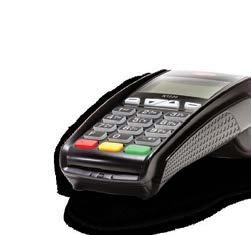





By John Yoswick Autobody News
While body shops, insurance companies and even the estimating system providers aren’t all seeing eye to eye on the issue of blending for color match, a recent panel discussion offered one point of agreement: blending is not the same now as it was decades ago when the prior formula for establishing blend times was developed.
“It does make you realize that things have changed,” Michael Lastuka of State Farm said at this summer’s Collision Industry Conference (CIC) of recent paint company training on blending his company has sent staff to, which he called “enlightening.”
a technical manager for AkzoNobel. “You really only had a range of some solid toners, a couple metallic toners, and at one point there was only one pearl on a mixing machine. We started out with just a white pearl. As the years went by, we added a couple more.
“And then in the 1990s, we started expanding into having a couple more different effects on mixing banks,” Brown continued. “The introduction of some different silver dollar type of aluminums, some different things started making colors more complex. But we really never adjusted anything [related to blending] from that time. Each of these things made refinishing a car slightly more difficult. And we’ve only added to that over time.”

The CIC Parts and Materials Committee hosted the panel discussion on the topic about a year after CCC Intelligent Solutions announced it was giving users more flexibility to determine blend times and eliminating “50% of full refinish time” formula. Audatex made a similar change some months later. Mitchell has not changed either its default nor P-page guidance relative to the 50% blend formula, but does give users the ability to adjust the percentage used.
Part of what triggered estimating companies to reexamine the blend formula was a 2022 study conducted by the Society of Collision Repair Specialists (SCRS) that the association believes demonstrated that blending takes more time than a full panel refinish, rather than less.
During the panel discussion at CIC, several paint company representatives discussed things that have made blending more complex and variable today than in the past, including the wider variety of vehicle finishes.
“Not that many years ago, we only had about 42 to 46 toners on a mixing machine,” said Ryan Brown,
might prove to be a difficult blend? You might need to use a little bit more space or room.
“The location of the repair: If the repair is located eye line or higher, it generally becomes more visible,” Jahnke continued. “Something down lower you can kind of shade and trick and work your way around a blend in a smaller area than you may need up higher on a vehicle. We’re seeing smaller and smaller cars. A bedside on an F-150 is a pretty big area for a blend versus a small quarter panel on a Mazda 3 or a Mazda 6 that’s only a foot-and-a-half or two feet long and makes for a really challenging blend to keep within the panel.”
The age of a vehicle also can impact blending, Jahnke said.
“The average age of vehicles in the U.S. now is 12.6 years, so for every new vehicle coming off the line, there’s a car that’s about 24 or 25 years old still on the road,” he said. “Coatings age over time. A car in Florida is going to have a different degradation of that finish versus a car in the Pacific Northwest. Each is going to have a specific characteristic on that coating that needs to be addressed prior to the blend operation. A lot of times we need to restore that condition to OEM standard or as close as we can prior to refinishing, or we’ll have a mismatch of the blend panel.”
shape, contour, position and color” — many of the same variables the paint company representatives at the meeting pointed to as well.
This is the kind of information, Schulenburg said, shops should consider when determining blend times on a given vehicle — and can point to when discussing those blend times with insurers or others. He acknowledged he’s talked to shops who have done this successfully, and others who have had less success moving away from the prior blend formula that no longer exists within CCC and Audatex.
“But if you’re saying ‘It’s simply a matter of what the study says,’ I think that leads to a less productive outcome.”
AARON SCHULENBURG SCRS
Mixing machines today, he said, often include 90 or 100 toners or more.
“On any standard mixing machine from any manufacturer, you’re going to have a range of glass flakes, colorshifting pigments, a lot more highly chromatic, solid toner pigments that we didn’t have before,” Brown said. “We’re now dealing with nano translucent pigments to get more chromatic colors, more transparency, get that kind of candy-looking effect. It greatly changes how we prepare the car, how we spray them, how we apply them. And it adds more time to the operations as well.”
Mark Jahnke, a technical coordinator for Axalta Coating Systems, said there’s more that contributes to variation in the time required to blend than just changes to refinish materials.
“The panel location and size of it plays a big factor in the blend,” Jahnke said. “Also the shape of the vehicle. Does it have a lot of body lines, style lines, shaving in the vehicle, or is it a big flat panel with less contours that

Paint protection film or ceramic coatings also may need to be removed prior to a blend, he said.
SCRS’ Aaron Schulenburg, who chairs the CIC Parts and Materials Committee, said these types of variables are part of why the CCC and Audatex estimating systems no longer have a set formula for blend times. In a 2022 response to a Database Enhancement Gateway (DEG) inquiry, Schulenburg said, MOTOR Information Systems — which develops the underlying database used by CCC — noted its refinish times take into consideration “variables such as panel size, material,
“From my perspective, it is the difference in the conversation that leads to the difference in outcome,” Schulenburg said. “So there are some repairers who I’ve spoken to who lean heavily on the types of material [about variables related to blending] that we looked at today, and others who simply lean heavily on just the results of the [SCRS blend] study and say, ‘Well, the study says…’ “I think the study was always intended just to create conversation that motivated the industry to rethink the process and the technology and things along those lines. But if you’re saying ‘It’s simply a matter of what the study says,’ I think that leads to a less productive outcome.”
State Farm’s Lastuka also participated in the panel discussion.
“I was at another industry event, and I got to meet Jeff [Wildman of BASF], and we struck up a conversation and he said, ‘You know, things have changed dramatically,’” said Lastuka, OEM and auto industry liaison for State Farm. “He was kind enough to come to our vehicle research facility in Bloomington. There was such a demand for him to come back because the information was so new, so fresh, so enlightening that we even taped the segment so it could be viewed many times. And then he was kind enough to invite us out to his training facility, and we just got another invite from another paint company. And we’re going to take full advantage of that because it does open your eyes, it does make you realize that things have changed.”




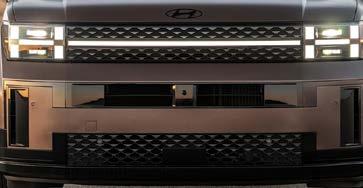






plugs — but it’s how an aficionado is made.
Eventually YouTube caught up to Turkov. He started making car repair videos, and doing mobile auto repair focused on enthusiasts — “people who care how the work is done.”
Enthusiast Auto Care is in Concord, CA, fixing Nissan and Infiniti models. Turkov has a specific focus — for the enthusiast’s enthusiast, let’s say — on the VQ37VHR engine, for which he makes, sells and installs a twin turbocharger and other products.
Concord body shop MakrMetalFab makes parts that go into the kit — a kit for which in California, Turkov needed CARB certification to be street-legal.
Turkov tested his concept at SEMA Garage in Diamond Bar in summer 2022, and began selling his approved kit in spring 2023. The work involved engineering design, testing and simultaneous CARB submission.
Even after the product passed — and not on the first try — honing work continued.
“They give a lot of information and are genuinely there to help,” Turkov said.
Turkov is “looking long-term” at more new products that will also require CARB’s blessing. “I don’t see California phasing out smog checks any time soon,” he said.
Spagnola and Morales look to continue their work, as well. As long as there are innovation and improvements, parts makers will need a “playground” to try them out.
Spagnola grew up in Southern California. He recalls his opera singer mother rendering the National Anthem at Dodger Stadium, where the family had season tickets, and “bringing pasta to Tommy Lasorda” as a kid.
Like Turkov, he dates his love of cars to the first grade. Then he “spent my life in manufacturing and product development.”
He was a SEMA member, making and selling stuff for other car folk. He sold his last company in 2013, then came to the association to start the Garage work.
Morales said, “ADAS is essentially all the functions that make driving easier” — and people want them.
Body shops will benefit from the work, particularly on ADAS and the research. “It’ll be key to their success.”
Mitchell, an Enlyte company, announced it is teaming up with PAVE to automate vehicle inspections and conditioning. Using Mitchell’s cloud-based appraisal solution, comprehensive data and open platform with PAVE’s proprietary artificial intelligence (AI) and guided image capture application, U.S. and Canadian organizations will be able to generate graded condition reports from uploaded photos. These reports will identify the vehicle damage and include estimated costs for parts, labor, repair or replace operations, and regional taxes.
PAVE will be the latest AI innovator to integrate its machinelearning and computer vision models with the Mitchell Intelligent Open Platform, which powers the company’s full suite of intelligent solutions. Designed to provide flexibility and scalability, the platform enables organizations to use Mitchell’s technology with their own AI, Mitchell Intelligent Damage Analysis, or AI developed by a third-party provider.
once when I came right out of the Navy, and it has been a goal for me to get back to that point.”
Claims counts and WIP are going down, and with them, top-end revenue. Evaluate the impact it’s having on your business and consider offers from consolidators, private equity groups or other independent owners looking to acquire your shop.
“This is not a scare tactic. This is just real talk here,” Link said. “This is probably a pivotal point in whether or not you want to sell now or wait. And I would say that every month that goes by, it is going to have a negative impact on the valuation because of how we, as consolidators, look at evaluating that business.”

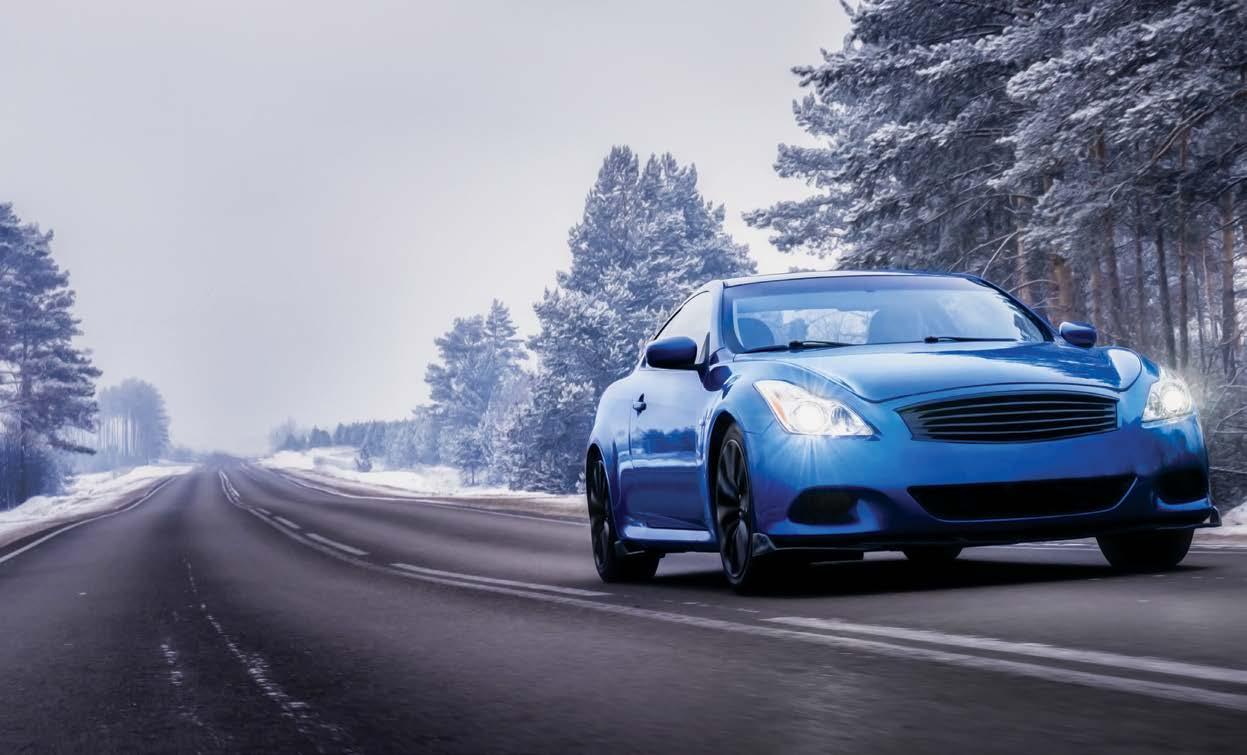



Being a part of CARSTAR means more than fixing cars; it’s also about fixing lives. Hosting our annual Soaps It Up charity car wash during Shine Season benefiting both the Cystic Fibrosis Foundation and our local cheer team reflects our passion for making a positive impact. At Ken’s CARSTAR North, we’re not just repairing vehicles; we’re making a difference in our community and beyond.
- Jamie White, owner of Ken’s CARSTAR North
By Abby Andrews Autobody News
Jay Goninen is a co-founder and president of WrenchWay, an online community dedicated to promoting and improving careers in the automotive and diesel industry. He also now owns his family’s repair shop, and hosts the Beyond the Wrench podcast.
He joined Cole Strandberg, host of The Collision Vision podcast, driven by Autobody News, for an episode of the “Operational Excellence: Shop Strategies” series to talk about how to hire, retain and develop a world class team for your collision repair shop.
Goninen said many owners are taking steps to understand why some techs are leaving, and why other people who may have considered working in collision repair are deciding not to.
“I think as we’re getting a better understanding as an industry, you are starting to see shops adapt and get better at this, be a little bit more intentional about recruiting in general,” Goninen said.
Goninen said he sees comments on social media that paint the industry in a negative light – which are seen by young people who might be considering career plans and their parents — so shop owners need to be “taking care of our best and brightest and making sure that they are really, really happy.
“It’s not an easy job. It’s very labor intensive. It takes the right mindset,” he said. “Until we’re able to get our best and brightest to speak glowingly about the industry, we’re going to continue to struggle.”
The industry as a whole must invest in building a pipeline to bring in new talent, Goninen said.
“I think a lot of shops in the past would look at it and say, ‘OK, we’re not getting an immediate ROI on this, so we’re just going to completely ignore it,’” he said. “We need for shops to be active in their schools and really supporting them at a program level, not just a student level.”
Only supporting a local school to hopefully eventually employ a new graduate isn’t the way to go about it.
“We need to be supporting that program. That ultimately is the one that’s going to be the engine that’s going to be able to push out more skilled labor. You’re not going to get that immediate ROI, but you have a
sustainable pipeline for the future that will produce that consistency that I think everybody is looking for,” Goninen said.
The first step is to call or email the school to get connected with the people who are part of the collision repair education program. Be persistent, Goninen said.
“That can be kind of a struggle, because maybe you’re talking to an administrator. Some teachers honestly aren’t the best at getting back to us when we do reach out,” he said.
Once you’ve connected with the right people, follow through on any promises you make.
“If you offer to go and speak to a class, make sure you get up there and get it done,” Goninen said. “Make sure that it’s planned out. Have an idea of what you’re going to talk about.”
Don’t just talk about your own shop, Goninen added – educate students on the industry as a whole and all the opportunities it offers.
“I think as you get more and more involved, you do become more passionate about that program,” Goninen said. “You do have a vested interest in seeing that program have success.”

Shops need to “be a good place to work,” Goninen said. To get there, managers need to be honest with themselves about what needs to change, and make it happen. They should also ask for feedback from existing employees.
He suggested a shop’s leadership team meet at least monthly to discuss what they’re doing to become a better employer and recruit more technicians.
Improving job descriptions can be difficult, but it pays off. Collision tech job ads tend to all look the same.
“We get frustrated as shop owners when all the technician is looking at is money,” Goninen said. “The reason why they’re looking at money is because they can’t see anything else.”
Goninen suggested trying AI tools like ChatGPT to help spruce up job descriptions. “It can make it sound a little friendlier, or a little bit more
attractive,” he said.
Most good techs are already working, Goninen said. Branding can help a shop stand out enough to convince a tech to switch employers.
Shops should also clean up the hiring process. “Make it easy to apply with you or at least have a conversation,” he said.
He suggested adding a “careers” page to the shop’s website. “Data shows if they are serious about looking at a job in your organization, they are going to research your website,” Goninen said. “Make sure that there’s a clean place for them to hit the ‘apply now’ button.”
Goninen said he bought his family’s independent collision repair shop in early 2024, so he has been able to put those tips to use and see firsthand how well they work.
“They already had a pretty good culture at the shop,” Goninen said. “I’ve been able to add a lot of the stuff that is intentional around recruiting.”
When a talented technician who was working at a dealership came in for an interview, the shop’s leadership took him out to lunch, rather than do a traditional sit-down at the shop. After lunch, they walked him through the shop and introduced him to the team. He ultimately came to work for Goninen’s shop.
While the shop is currently fully staffed, Goninen said, he recently hired a 16-year-old apprentice, to develop the next generation.
Now the shop just needs to keep its foot on the gas, he said. Having managed shops before, Goninen has seen how quickly a fully-staffed shop can suddenly be understaffed.
“We had one [shop] where we rebuilt the staff and we were in a great spot. We’re just sitting back like, ‘Hey, yeah, we did it. We’re in good shape,’” Goninen said. “Well, over the course of the next few weeks, I think we had one technician who left to go work for their family business. Another technician got in a car accident and had some medical issues where he was going to be out for nine months.
“We went from being really happy with what we had to scrambling to try and take care of all the work,” Goninen said.
That experience taught him to take advantage of when a shop is fully staffed to work on relationships with local trade schools, or perhaps send a text to a tech who interviewed with the shop before just to check in with them.
WrenchWay’s “Voice of the Technician” survey showed a lot of
good techs are constantly looking for more training, especially as technology in cars evolves.
They also want to see a clear career path, with the steps they’ll need to take to earn a raise or promotion. The lack of a path can create anxiety and drive a good tech to look elsewhere. So too can a lack of communication from shop leadership, Goninen said. “If they’re in the back and they don’t hear much other than what they need to be doing on their daily agenda, they’re not going to feel great about where they’re at,” he said.
“It all comes down to listening to that person,” Goninen said, adding he prefers one-on-one meetings to understand what his employees want out of their career. Then he can figure out what he can help them with – like arranging training to earn certain certifications – to set a path. He also suggested meeting with employees regularly to review their progress.
It’s also important to talk to your shop’s team about how the shop is performing financially, as growth enables the shop to offer more opportunities to its employees, Goninen said.
“You don’t have to show them all your books, but be able to have good KPIs that you can show to the team and have open dialogue about that,” he said.
“Let’s grow together,” Strandberg added. “Let’s make opportunities with each other, alongside each other.”
Goninen said his shop has four fulltime techs, so when one leaves for training, it reduces productivity by 25%. That can be tough to absorb, but if a shop doesn’t allow its techs to keep up with training, it will be left behind.
He suggested making a plan in the last quarter of one year, or at the beginning of the next, to map out training for all of the shop’s techs for the coming year.
“Once you lay out a plan, register for the classes, pay the money,” he said. “Once you’ve paid for them, then you feel obligated to send your person.”
Make recruiting a priority. “Even when things seem great, you’re not coasting. You’re constantly trying to get better,” Goninen said.
Build relationships with local schools. “You can get involved by just simply making a phone call, sending an email,” he said.
Clean up your hiring process. Add a careers page to your website.

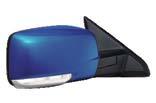






By Paul Hughes Autobody News
Jim Moyer expected to close on the sale of his body shop Aug. 28. He’s retiring, and he’s not alone.
He and his collision center comrades countrywide are linked by the work and that they’re exiting the industry. The comparison ends there, and then it’s all contrast.
Running a body shop is personal: multi-generational care and craftsmanship defined by relationships.
Leaving it is just as heartfelt. Individuals who sell, do so for highly individualized reasons.
Moyer’s Auto Body is in rural Clearfield, PA, pop. 12,000. Moyer was mayor for 13 years.

He’s worked at the shop more than 47 years, running it two-thirds of that time. Of former employees, one had 42 years’ experience, two had 29 apiece, and the “rookie” had 14. The top veteran retired; the youngster’s gone to seek his fortune in heavy construction.
“In Central Pennsylvania, we have one helluva time trying to find techs,” he said.
Meanwhile, Frank Hodulik’s exit in June was a bit of a “honey-do” — his wife Debra Hodulik wanted it.
“She turned 65 in April and I said, ‘What do you want for your birthday?’ and she said ‘to retire,’” Frank Hodulik said.
The duo co-owned Frank’s Auto Body for 40 years; they sold their two locations in Henderson, NV, in June to Brightpoint Auto Body Repair, a growing MSO in Memphis, TN.
Frank Hodulik, also 65, has been in the industry for a half-century — he ran the body shop for a Delorean dealership in New Jersey, out of trade school. Health issues were also involved in selling, but the main driver was loving his wife.
“I made her a lot of promises over the years; I said when you’re done I’m done. I couldn’t do it without her,” he said.
Brian Patton co-owns American Collision and Hail Repair in Wichita, KS, with Paul Blissett and Keith Hellyer. They bought it from seller Aaron Lonergan earlier this year, who Patton said was shifting to a more recreational lifestyle.
“He has some land, about 160 acres,” near Mulvane, KS, Patton said. “He built a big pond, sold his house, moved into his fifth wheel.” Lonergan now runs a “Jeep club” where people pay monthly dues for access to the land, to camp and fish.
“When he told me he was ready to sell, it was to do what he wanted to do,” Patton said.
Patton has done paintless dent repair for 29 years and co-owned body shops over the last 10. He’s adding 3,200 square feet to the 8,000 already there, and plans to get to three or four shops in the market.
Bill Beckett’s been in body shops all his life. “I was born into it.”
His granddad founded Chestnut Auto Body — “it used to be on Chestnut Street” — in North Attleborough, MA, in 1952.
Beckett’s dad moved the shop in 1978. Beckett began work there in the 1980s, inheriting it last year, on his father’s death. But he can’t run it anymore. A health scare for Beckett, 59, was a catalyst.
“Doctors gave me an EpiPen,” he recounts. If he needs an EpiPen to stay in the game, “I’m not staying.”
But regulatory restrictions and insurance company constraints were the nail in the shop’s coffin. Local labor rate reimbursement in Massachusetts runs $40 an hour. Nearby Rhode Island gets $75 to $80.
Acquirers are active in New York, New Hampshire and Maine, but “no real consolidators are pushing here,” Beckett said.
So Beckett is selling his shop — but not as a shop.
He’s expecting possible warehouse interest in two buildings totaling 9,000 square feet. There’s also a chance for the proverbial “highest and best use” of the two acres of land.
“Real estate’s really big here,” he said. “New condos are going for $550,000.”
At one point he thought a buyer who’d won $15 million in a state lottery would bite. “He wanted a place to store his cars,” Beckett said. “His wife said no.”
Plenty of others are saying yes, at least to selling.
After 20 years of big consolidators getting the high hat from Hodulik, Brightpoint bought his Henderson shops.
“Boise’s a great market for us,” Williams said.
Autobody News also found retiring owners selling shops in Bozeman, MT, Bremond, TX, and parts of Michigan. Consultant Laura Gay has helped sell shops for hopeful recreators in, for instance, Arkansas.

Moyer agrees with Williams and Hodulik — “it’s hard, dirty work” — and found consolidators didn’t want to do it either.
“We were looked at by an MSO but they said, ‘We’re not coming to Clearfield,’” Moyer said.
“Guys with 40-plus years in the industry are moving on,” said principal Paul Williams, whom Hodulik knew.
“Time is more valuable than money when you get older,” said Hodulik, whose daughter still works at Frank’s.
Brightpoint has also bought from pre-retirees in Idaho. It has two locations now and plans four by yearend.
The shop had nine working bays and a paint booth, expanded four times in 47 years, and “did a large volume.” It’s been closed a year for lack of staff and is getting ready to re-open.
“I have a couple from New York City coming to buy it,” Moyer said. They look to be in their late 30s or so, and the man “worked in a body shop; that’s all he’s ever done.” Now he wants to own one.
The best part?
“They’re bringing a couple employees with them.”


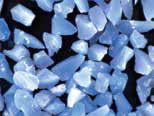

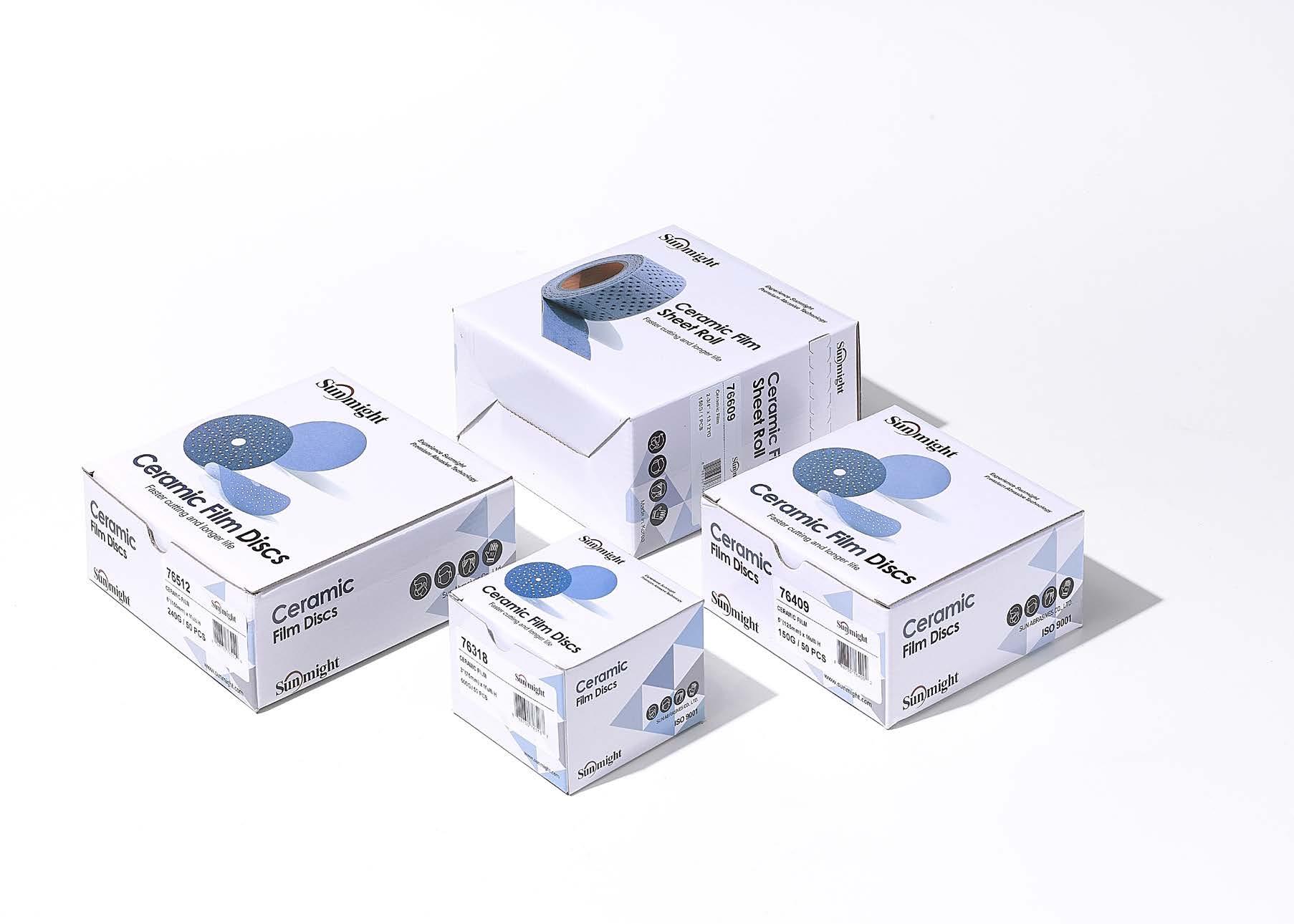


By Leona Scott Autobody News
Staying competitive in collision repair means adapting to industry trends that improve workflow efficiency and customer satisfaction while reducing costs. One growing trend is bringing glass operations in-house, a move that collision repair shops find beneficial for multiple reasons.
With insurance companies limiting what they’ll cover, downtime impacting profitability, and the control over quality becoming a critical issue, it’s no wonder body shops are taking matters into their own hands.
In this article, we’ll explore five key reasons body shops are opting to bring their glass operations in-house, featuring insights from industry experts like Shauna Davis, president of Kaizen Glass Solutions in Hutto, TX; Lupe Gonzalez, owner of C and S Body Shop in Buda, TX; and Carlos Manzo, owner of U First Auto Body Shop LLC in Austin, TX.
One of the biggest frustrations for collision shops relying on third-party vendors for glass replacement and repair is the delay in service. These delays increase the overall cycle time of a job and negatively impact customer satisfaction. Gonzalez experienced this firsthand at his shop.
“We’d have a vehicle in the shop for 15 days, and when we needed a glass vendor to come in, we’d have to wait two to three days just for them to remove the glass, then another two or three days for them to reinstall it,” Gonzalez explained. “This meant a five- to six-day delay in completing jobs, and all that downtime was hurting our business.”
By bringing glass operations inhouse, Gonzalez was able to eliminate this bottleneck and speed up repairs. “Within the first few days of doing glass replacements in-house [after our training], we were able to do five jobs right away, saving us both time and money,” he said.
Manzo brought glass operations inhouse to improve his shop’s cycle times and enhance quality control. “Before we made the switch, it could take up to a month or more to get a vehicle back to the customer because of delays with the glass vendor. Our turnaround time is two weeks since we handle it inhouse,” Manzo said.
“That’s why we would have many delays…having to wait on multiple vendors and, on top of it, finding out it didn’t pass the scan because more things were wrong with the vehicle. This
would constantly cost us in time going back and forth. Now, having everything in-house assures us we know everything in real-time,” said Manzo.
Another pain point for body shops is relying on sublets. When a thirdparty glass vendor breaks something during the installation, the body shop often absorbs the cost, said Gonzalez. Plus, insurance companies
By training their technicians to handle glass repairs, body shops can ensure the work is done to their exact specifications, avoiding costly issues down the line.

typically only cover the windshield replacement itself — not the additional labor involved in removing and reinstalling it. This leaves shops footing the bill for tasks that cut into their profits.
According to Gonzalez, paying for these mistakes was frustrating. “We were getting charged twice: once for removing the glass and again for installing it. It was costing us around $150 for each service,” he said.
Shops can avoid these additional costs by controlling their glass operations, maintaining better control over their expenses, and improving their bottom line.
Quality control is another crucial reason shops are moving their glass operations in-house. When outsourcing glass repairs, shops have little control over the materials and techniques used by thirdparty vendors. Poor workmanship can sometimes lead to additional problems, such as water leaks or windshield failures, which can tarnish a shop’s reputation and result in costly rework, not to mention liability. Davis emphasized the importance of maintaining control over the quality of work. “When you handle glass repairs in-house, you have full control over the quality of the materials and workmanship,” Davis explained. “You can ensure that the products being used meet your standards and the job is done properly according to mandatory safety standards.”
The financial upside of bringing glass operations in-house is hard to ignore. While there’s an initial investment in equipment and training, the return on investment (ROI) can be realized quickly. For example, the cost of auto glass training through companies like Kaizen Glass Solutions is relatively low, starting at $1,895 for basic auto glass training and $3,500 for both auto glass and ADAS calibration training. In addition, specialized toolkits for glass repairs can cost around $2,195. Although there are initial costs, the long-term financial benefits are substantial. According to Davis, the average shop can recover its investment after completing eight windshield replacements. To illustrate how quickly shops can begin to profit,
let’s say you make an average of $300 per job. After factoring in reduced cycle times, lower labor costs and eliminating sublet fees by keeping the work inhouse, the savings add up fast.
Bringing glass services in-house benefits the shop financially and improves the customer experience. Today’s consumers value convenience, and offering a onestop solution for collision repair and glass replacement fosters loyalty. Customers who don’t have to visit multiple locations or wait for thirdparty vendors to complete their repairs are likelier to return and recommend the shop to others.
For many collision repair shops, bringing glass operations in-house is a no-brainer. Not only does it reduce cycle times, avoid unnecessary costs, and increase profitability, it also ensures better quality control and enhances the overall customer experience.
As the industry continues to evolve, more shops see the value of offering inhouse glass services and invest in the tools and training necessary to make it happen. Whether you’re a small shop or a large operation, taking this step could be a game changer for your business.








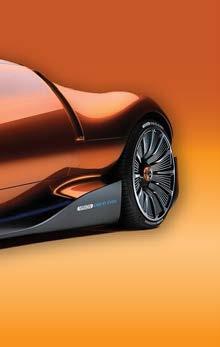

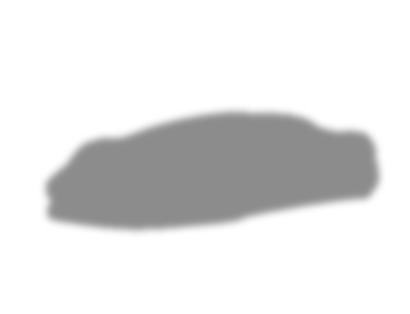
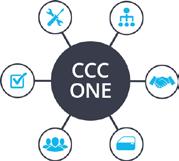






There’s a common misconception many business leaders have, according to Collision Advice Coach Sheryl Driggers: to influence someone, you have to be in control of them.
“What I learned over the years is that the more you try to control people, the less influence you have,” said Driggers, a certified coach and trainer for John Maxwell’s organization, Maxwell Leadership, and a Maxwell certified behavior analysis trainer.
Over her career, Driggers has shared the stage with best-selling author Chris Voss and is a contributing author to Voss’s latest book, “Influence and Impact.” Her chapter focuses on the four pillars she recommends to build high-performing teams: Inner Work, Outer Impact; Know and Grow Your Team; Unify & Clarify; and Persevere with Purpose.
During the Car ADAS Solutions Business Owners’ Summit in August, Driggers talked about the four pillars in her presentation, “From Influence to Impact: The Path to High-Performance Teams.” She provided insight on how to become a leader people want to follow and the importance of building leaders within the organization.
As the co-owner of a Tallahasseebased collision center that grew to include three locations and was later sold, Driggers said she spent many years with the mindset of “I’m the boss; you’re the employee.”
“We did not get consistent results from that type of leadership,” she said.
Driggers found it can lead to burnout because of the weight on the leader’s shoulders trying to control and do everything. “When owners and managers engage and start developing team members and providing resources to help them grow, they become engaged,” she said.
Otherwise, Driggers said, businesses end up with disengaged employees who can drain the business of its life and energy.
Driggers noted the range of toxic leadership styles and said whatever is inside each of us will inevitably manifest itself externally.
“Have you ever worked with someone who was a perfectionist and demanded perfection, even though that’s not a reality?” she pointed out. “Or someone with anger issues or
who doesn’t like conflict?”
When leading from those mindsets, Driggers said leaders don’t produce high-performing teams.
“We have to do the hard work to become the person people want to follow,” she emphasized.
or gravitate towards building relationships. Driggers said leaders need to be effective at both.
“It’s not one or the other; however, people are always the priority,” she said. “Relationships fuel results.”
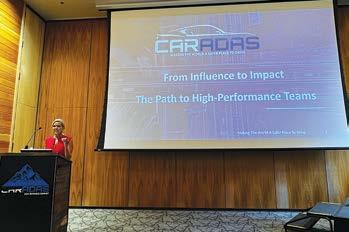
To build high-performing teams, Driggers recommends getting to know employees and empowering them to grow. To do this, she advocates taking time to understand their strengths, needs and potential, and then providing the resources and support they need to flourish.
“Our team members want to be known, heard and valued,” she stressed. “We have to be intentional and listen to understand, as well as build trust.”
3. What do we do?
4. How will we succeed?
5. What is our current SMART (Specific, Measurable, Achievable, Relevant and Time-Bound) goal?
As a result of her team answering the questions, they created the company’s “why,” and Driggers said they no longer micromanaged staff.
Driggers advises leaders to work with teams to remove distractions. She also suggests breaking down silos to create a culture of collaboration.
“We win together and we lose together,” she said. “Align your leadership team and organization by unifying around a common vision and creating crystal-clear clarity on roles, goals and execution.”
Driggers explained that outer impact means cultivating self-awareness when you start seeing yourself through the lens of other people.
Driggers advises leaders to regularly engage in self-reflection exercises to assess how their actions and words impact others. She also suggests inviting people you trust to reveal your blind spots and embrace their feedback openly rather than defensively.
“Hurt leaders hurt teams and insecure leaders infect those around them,” she said.
To help determine the impact leaders have on team members, Driggers recommends asking the following questions:
1. How did my actions and words impact my team today?
2. Did I notice any changes in team morale or productivity based on my behavior?
3. Were there any moments where I could have approached a situation differently for a more positive outcome?
4. What can I learn from today’s experiences to improve my leadership tomorrow?
“As leaders, we should be growing,” she said. “When the leader gets better, everyone gets better.”
Over the years, Driggers has found leaders typically focus on systems, processes and outcomes — key performance indicators (KPIs) —
One of the best ways Driggers said to find out if you have trust issues is to conduct employee engagement surveys.
She also shared an exercise she learned from Patrick Lencioni, author of “The Advantage,” to get to know employees. It involves asking three questions:
1. Where are you from?
2. How many siblings do you have and where do you fall in the order?
3. What is the most challenging or difficult thing you had to deal with growing up?
“It sounds so basic, but I remember sitting in that room with people I had known for over 10 years, and I learned so much through those three basic questions,” she said.
To be successful, Driggers encourages leaders to ensure everyone in an organization is rowing in the same direction with an understanding of what success looks like.
She suggests creating clarity within the organization so everyone understands the vision, mission and values. “What success looks like for you might not be what they have in mind,” she pointed out.
While running her collision repair facilities, Driggers said they developed a Universal Collision Playbook to help create their vision and mission and ensure everyone was on the same page. She worked with the leadership team to answer the following questions from Lencioni’s book:
1. Why do we exist?
2. How do we behave?
Driggers pointed out businesses and individuals face adversity every day. “We need to create a mindset of solutions, focusing on what we can control versus the things that we cannot,” she noted. “We have to persevere with purpose.”
In January 2015, Driggers joined Business Networking International. As part of her membership, she met with a member who happened to be an eye doctor.
“I remember walking in thinking I was going to have a networking conversation, but I walked out with a diagnosis that would change my life forever,” she recalled. “She did some imaging and found that I have a rare genetic disease that’s causing me to go blind. That was a punch in the face.”
Driggers said at some point in life, everyone will get punched in the face. In response, she recommends developing the mindset, grit and resilience required to lead through adversity, break down barriers, foster collaboration and maintain a steadfast commitment to your mission no matter what the challenge is.
Driggers also recommended leaders encourage team members to find solutions to problems.
“If you as a leader are the only person in your organization finding solutions, you will burn out quickly,” she noted. “In our businesses, we have to cultivate a resilient mindset and foster a culture of people being solution minded.”
To order “Influence and Impact,” visit a.co/d/gK8jeQP.

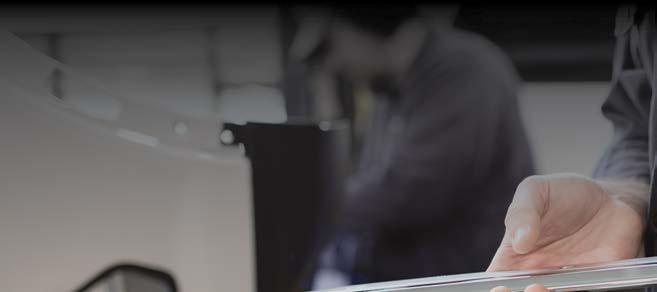
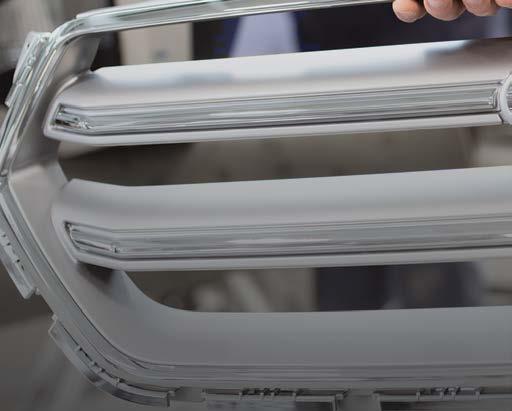
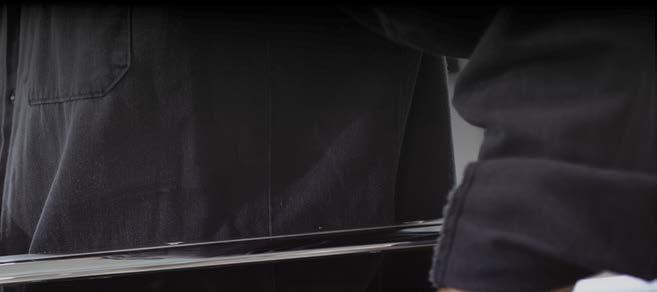



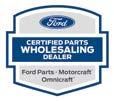

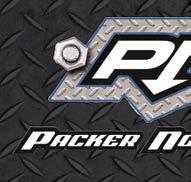

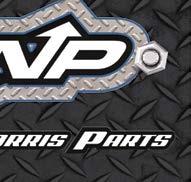
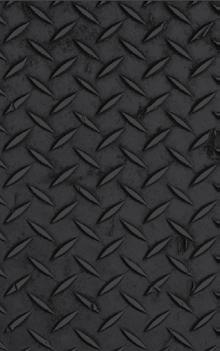


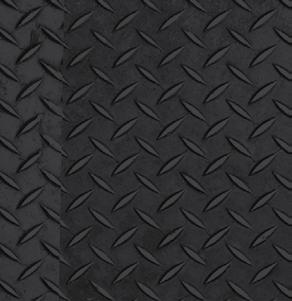





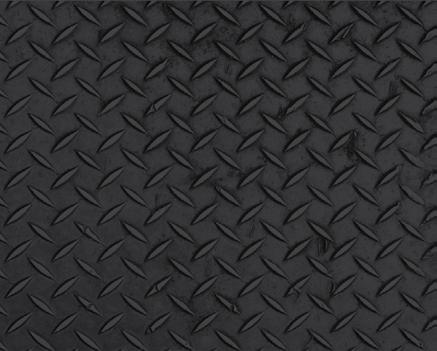

Over the past year or so, I’ve conducted 14 meetings across the U.S., bringing together collision repairers with corporate representatives, district managers and regional wholesale parts managers for one of the automakers. There was one goal for these meetings: to better understand each other’s perspective, and to share information with one another that would give all of the participants a clearer understanding of how the parts processes work between the various stakeholders.
These men and women, these wholesale parts vendors, deserve to have their voice heard — and the purpose of my next few columns is to share their insights, their concerns, their pain points. Importantly, I hope to convey why hearing their voice should matter to all the other stakeholders.
When I first starting thinking about how to convey their voice through this column, in addition to all the various other perspectives I was hearing in those meeting rooms around the country from the shops and the other attendees, I wasn’t sure it could be done. There seemed to be so many important messages.
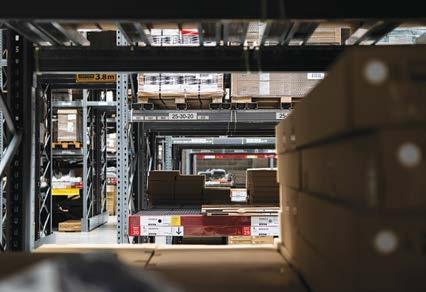
It has been a bit surprising to watch as the meeting attendees start to realize just how much they didn’t understand about what’s going on for companies on the other side of their day-to-day transactions. But it’s also been very satisfying to see them gain a whole new appreciation of how they can each be a better business partner to one another.
One of the things I realized through these meetings was that when we have industry events, we generally hear the voice of the OEMs, the voice of the shops and MSOs, the voice of the information providers, and sometimes the voice of the insurers.
But the voice of one industry stakeholder we do not generally hear is that of the wholesale parts distributor: the men and woman at dealership parts departments who deal with last-minute rush orders, who deal with price-matching pressures, who deal with multiple electronic parts ordering systems, who deal with shops that do not pay their bills on time or large MSOs who want payment terms that sometimes stretch out beyond 60 days — and so much more.
Shops were saying what they are looking for from their parts dealers — and in some cases coming away with a better understanding about which of those expectations were realistic and which were not.
Parts wholesalers were saying what they would like in terms of collision repair wholesale customers — and realizing why shops may be coming to them with unrealistic expectations.
Both sides were seeing why insurers are currently pushing for even harder than in the past for better cycle time and lower severity.
And it all made me realize insurance companies need to understand the potentially bad outcomes that could have for shops and parts vendors if things do not change.
So rather than trying to capture all this in one column, Autobody News has agreed I can devote the next several columns to examining some of the key issues related to the role of parts in the industry. I promised meeting attendees I would try to report the key messages they had for their counterparts in other segments of our industry.
My goal for these columns is to relay the perspectives of each of the industry stakeholders: wholesale parts vendors, collision repairers, OEMs, insurers — and ultimately, the consumers we all serve.
In addition, I will share insights
gained through our quarterly Collision Advice “Who Pays for What?” surveys in regards to electronic parts software utilization.
If there’s a wholesale parts vendor reading this column and you’d like to share your insights, please reach out to me through my assistant, Tiffany Driggers , at tiffany@collisionadvice.com.
For now, I will close out this article by saying this: because the voice of the wholesale parts vendors is so rarely heard, shops and insurers may not realize those parts vendors are under tremendous pressure on their margins, with the increase of delivery driver wages, having to subscribe to multiple software electronic ordering platforms, etc.
It’s important to understand: if we do not listen to their voice, you may see dealerships getting out of the wholesale business if it no longer pencils out. This is not good for any stakeholder in our industry. This should
be a wake-up call to the industry. An aftermarket or recycled parts vendor may think this is good for them, but they will not be able to supply all of the parts we need. Insurers may not be thinking about the downside, but if we have fewer dealerships involved in the wholesale business, we will see cycle time actually increase rather than decrease. We will see consumers getting frustrated — and a ton of other negative ramifications.
It is time we re-think parts in our industry, and I hope you will be open-minded as you read my upcoming articles.
Next up: I’ll focus on what we’ve heard from collision repairers about what they are looking for in a best-inclass OEM wholesale parts vendor. Then we’ll change perspective and help shop owners understand makes them a good customer for a dealerships’ parts department. I’ll also focus on what shops and their parts suppliers can do together to each improve their business.





































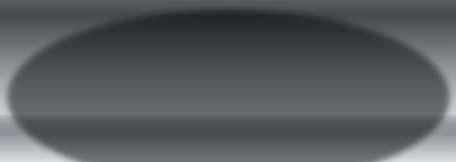


























































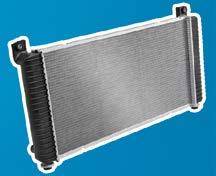

















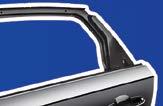

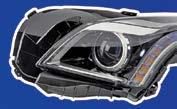
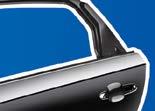
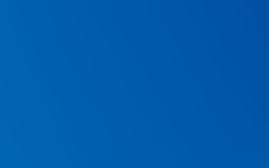






Our knowledgeable and helpful parts professionals want to earn your business and will provide you with the highest level of customer friendly service.



• We stock over $2,000,000 in collision & mechanical parts
• We stock over $2,000,000 in collliision & mechanical parts 0
• We deliver throughout Massachusetts, Rhode Island and New Hampshire ever y day
• We deliver throughout Massachussetts, Rhode Island and New Hampshire ever y day
• Our reputation is built on providing you the best SERVICE
• Our reputation is built on providing you the best SERVICE














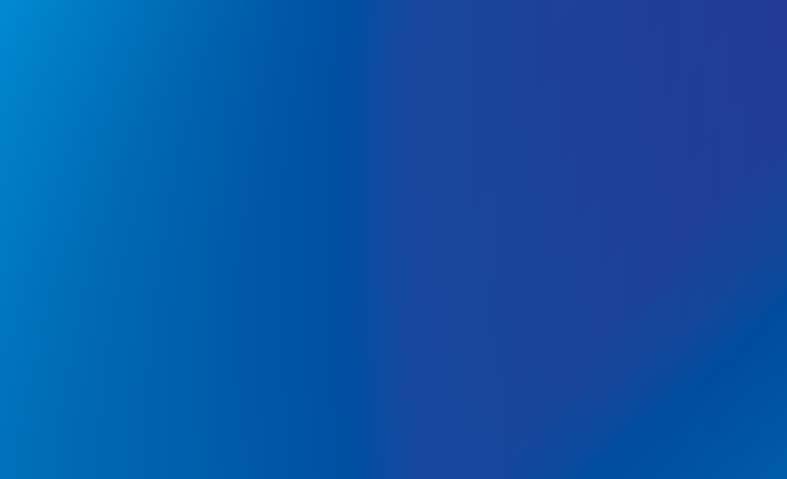
• Save time, improve profits and keep your customers loyal
• Sav a e time, improve profits and keep p your customers loyal

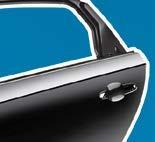


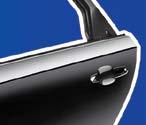
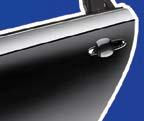



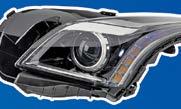



• Place any order on line with our parts order form at buycolonial.com
• Place any order on line with our parts order form at buycolonial.com
• Join our growing list of satisfied customers
• Join our growing list of satisfied customers


Colonial Ford
147 Samoset St., Plymouth, MA 02360
Ph: 800-233-8109 / Fx: 508-830-1658
Hours: M-F 7:30-5; Sat 7:30-4
Colonial Ford of Marlboro
428 Maple St., Marlborough, MA 01752 wtrottier@buycolonialfordmarlboro.com
Ph: 888-617-3599 / Fx: 508-460-3464


Colonial Volkswagen
89 Turnpike Rd. (Rte. 9), Westborough, MA 01581
Ph: 888-322-6570 / Fx: 508-616-0445
Hours: M-F 7:30-5:30; Sat 7:30-4
Colonial VW of Medford
Ph: 781-475-5208 / Fx: 781-391-3506
Hours: M-Th 7-7; F 7-5; Sat 8-4
340 Mystic Ave., Medford, MA 02155 nmedeiros@vwmedford.com
Wellesley Volkswagen
231 Linden St., Wellesley, MA 02482
Ph: 800-228-8344 / Fx: 781-237-6024
Hours: M-F 7:30-5; Sat 7:30-4
wellesleyvwparts@aol.com

Contact: Dan Bettencourt / Wholesale Parts Manager


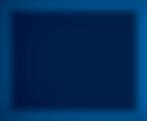


• Daily shipping available throughout New England and the Northeast
• Daily shipping available throughout New England and the Northeast






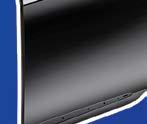







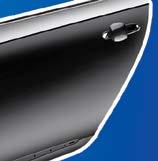

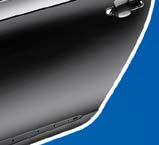




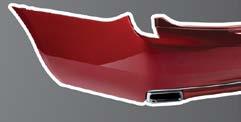

Nissan
Ph: 781-395-3025 Fx: 781-475-5063 104 Mystic Ave. Medford, MA 02155 Hours: M-F 7:30-5 Sat 8-4

North End Mazda
747 Chase Rd. (Rte.13) Lunenburg, MA 01462
Ph: 800-322-1241 Fx: 978-582-9841
Hours: M-F 7:30-5:30 Sat 8-4



225 State Rd., Dartmouth, MA 02747
Toll Free: 888-240-2773
Parts Dir: 508-997-2919 Fx: 508-730-6578
jdelcolle@buycolonialhonda.com





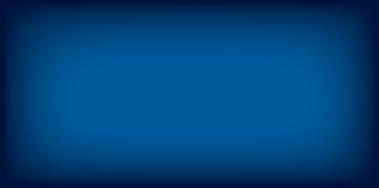
www.hondapartswholesaledirect.com
Cityside Subaru
790 Pleasant St., Belmont, MA 02478
Ph: 617-826-5013 / Fx: 617-489-0733
Hours: M-F 7:30-5:30; Sat 8-4


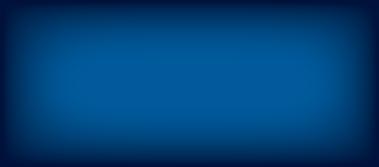

Hours: M-Th 7-7; F 7-5:30; Sat 8-4:30 Colonial Honda of Dartmouth parts@citysidesubaru.com
757 Chase Rd. (Rte.13), Lunenburg, MA 01462
Ph: 888-686-4387 / Fx: 978-582-9843
Hours: M-F 7:30-5:30; Sat 8-4 North End Subaru
parts@northendsubaru.com www.northendsubaru.com








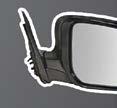






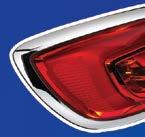













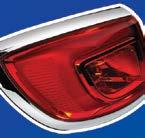


































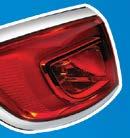



















Colonial Chrysler-Jeep-Dodge-Ram
24 Coolidge St. (Rte. 62), Hudson, MA 01749
Ph: 978-568-8000 / Fx: 978-562-1213
Hours: M-F 8-5; Sat 8-4
www.buymoparpartsnow.com
Colonial South Chrysler-Jeep-Dodge-Ram
42 State Rd., Dartmouth, MA 02747
Ph: 508-984-1900 / Fx: 774-328-9915
Hours: M-F 8-5; Sat 8-3
parts@buycolonialsouthcjd.com www.buymoparparts.com















201 Cambridge Rd., Woburn, MA 01801
Ph: 781-935-7009 / Fx: 781-933-7728
Hours: M, T, Th, F 7-5; W 7-8; Sat 8-4
Colonial Cadillac of Woburn www.buycolonialcadillac.com
171 Great Rd., Acton, MA 01720
Ph: 978-263-3994 / Fx: 978-263-8587
Hours: M-F 7-5; Sat 8-4
Colonial Chevrolet parts@colonialchevrolet.com
Colonial South Chevrolet
361 State St., Dartmouth, MA 02747
Ph: 508-997-6711 / Fx: 508-979-1219
Hours: M-F 8-5; Sat 8-4
parts@colonialsouthchevrolet.com
Colonial West Chevrolet
314 John Fitch Hwy., Fitchburg, MA 01420
Ph: 978-503-7480 / Fx: 978-345-1152
Hours: M-F 8-5; Sat 8-4

independent repair facilities without formal authorization by the car maker. The law is designed, in part, to allow drivers more flexibility in their repair options.
For the November right to repair law to be fulfilled, the state must form the oversight group and car manufacturers must equip all makes and models sold in Maine with a data platform capable of securely disseminating all diagnostic data of a car to car owners and independent repairers. All parts, tools, software and other components necessary to complete full repair must be included and given to car owners and authorized repair shops per the November-enacted law, under a potential penalty of $10,000 if access is denied.
“We’d like to make sure that manufacturers can’t manipulate the way that this data is going to car owners, and then shared with independent repairers,” Tommy Hickey, a member of the working group and director of the Maine Right to Repair Coalition, told Autobody News.
Hickey, who is representing independent repair facilities on
the working group, stressed the forthcoming repair oversight board required by the November legislation should comprise an overall neutral membership. For example, he would like to see cybersecurity experts, independent repairers, dealerships and manufacturers represented on the board.
The more recent law, passed in April, directs the working group to recommend standards that provide
“We just want to make sure that manufacturers allow their systems to go into the full effect so that people can make full repairs where they’d like.”
— TOMMY HICKEY DIRECTOR, MAINE RIGHT TO REPAIR COALITION
open access to vehicle telematics systems, monitor car manufacturer compliance, and address the evolving use and availability of cars’ diagnostic data, while respecting privacy and cybersecurity concerns.
“We just want to make sure that manufacturers allow their systems to go into the full effect so that people can make full repairs where they’d
like,” Hickey said.
The independent repair industry has two members on the working group, including Hickey. The group also includes representatives from aftermarket parts distributors, aftermarket manufacturers, vehicle manufacturers, new vehicle dealers, consumer advocacy and privacy advocacy groups, and Maine’s offices of the attorney general and secretary of state.
The working group’s first meeting on Aug. 29, in Augusta, is expected to review the group’s statutory duties, identify action items, collect comments on a remote meeting policy, and establish a schedule for future meetings, according to the meeting agenda. The meeting is open to the public. The working group’s website, which went live Aug. 9, contains information about the working group and will be used to post public hearing notices.
The attorney general must send the legislature a report by Feb. 28, detailing the findings of the working group.

Hunter Engineering is pleased to announce it has been named the recipient of another MOTOR Top 20 Award. For 2024, the honor comes for the HawkEye® XL Commercial Aligner.
The annual awards recognize the most significant advancements in the automotive industry. Hunter has been named a winner five times in the past four contests by a panel of industry experts.
The HawkEye XL is designed for maximum speed, durability and ease of use for a wide range of commercial vehicles, providing highly accurate measurements in four minutes or less. The key component is visionary new camera technology with extra-long range and extralarge targets, expanded from the industry-leading HawkEye Elite aligner.
For more information, visit www.hunter.com/alignmentmachines/hawkeye-xl.
more peace of mind for each customer you serve.




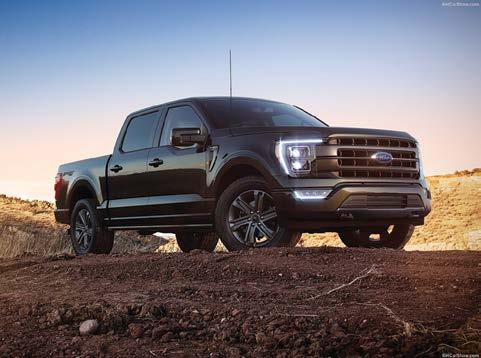

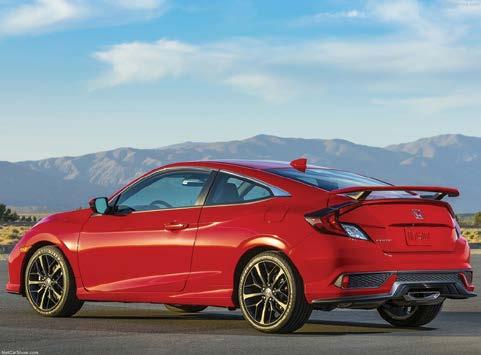
860.651.3747
860.658.6210 Fax







fmanauto.com
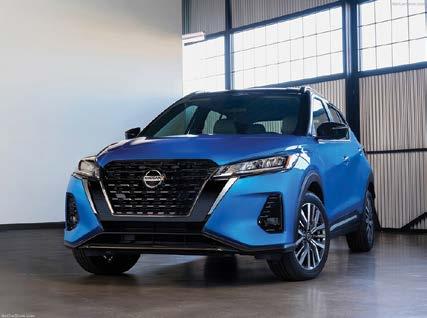
Connecticut Blvd. East Hartford, CT 06108
860.282.0191
860.290.6355 Fax
EHAudiParts@hoffmanauto.com M-F 7-5:30 Sat 7:30-3:30

Schraffts Drive Waterbury, CT 06795
860. 274.547 1
860. 274.0671 Fax
M-F 7am-5:30pm Sat 7:30am-3:30pm






860.447.5099
Nlaudiparts@hoffmanauto.com

Creating an initial estimate quickly frees up time that can be spent researching the OEM procedures for that job.
“There’s a lot of time wasted trying to get the basics on the [initial estimate], which could be better spent trying to dig deeper into those repair instructions,” Batenhorst said.
shop, he also has a junior estimator at the dealership’s service drive using the app to provide initial collision repair quotes to those customers as well.
“I think it’s really easy for us as an industry to shy away from technology because we don’t understand it or because we shy away from change,” Bradshaw said. “But this is something that anyone can use, and it’s going to save 15 or 20 minutes at the onset of each file, and a lot more time in situations when it identifies a total before you get more involved with that.”

He said it’s important to get the correct settings within your CCC profile to ensure Mobile Jumpstart works well. “But if you’re a CCC user, you already have this capability and functionality,” he said. “This is not an additional add-on module or anything.”
update on a virtual painting product the University of Minnesota was working on.
“He came back and said, ‘One day I may be wearing a tie like you
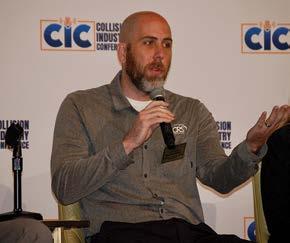
He said he’s seen some products that automate some basic welding.
“How far away are we from automating those sorts of things in the shop? I don’t think we’re anywhere near where we could be,” Amberson said.
He said automakers currently send auditors into certified shops to verify work is being done according to factory repair procedures.
“But there’s technology out there right now that can put sensors into welders and other devices that can verify and report information without a human presence,” he said. “I’d like to think one day we’re going to get there.”
He believes shops aren’t doing as much measuring of vehicles as they should be, and that, too, offers an opportunity for more automation to make the process easier and faster.
He said the automated initial estimate also can be run through the Society of Collision Repair Specialists’ (SCRS) Blueprint Optimization Tool (BOT), which can quickly audit estimates looking for missed operations or line items.
Michael Bradshaw of K&M Collision in Hickory, NC, agrees the Mobile Jumpstart app creates only an initial estimate, not the full repair plan needed once a job comes into the shop. But he’s using it to quickly identify potential total losses or when a customer comes in for an initial drivable estimate.
“We really don’t like to do those because we feel like it’s an enormous waste of time,” Bradshaw said. “And it’s not accurate because the OE research and the scans that have to take place, and all the additional damage that’s going to be uncovered once the vehicle is disassembled. So we’re kind of training our [customer service representatives] to explain to customers, ‘We’re going to do an AI-generated estimate that is extremely preliminary for you to get your claim process started,’ and then explain the process as far as a repair appointment, a disassembly, and a repair plan that’ll actually determine a proper cost of repair.”
The app also is an easy way early in the process to triage vehicles based on the level of damage, he said.
Batenhorst said his shop has also used Mobile Jumpstart when checking in a customer vehicle to quickly quote for repair of unrelated damage. As a dealership-owned
Bradshaw and Batenhorst, who both are on the SCRS Board of Directors, demonstrated the Mobile Jumpstart product during a recent association meeting. SCRS Executive Director Aaron Schulenburg said the presentation wasn’t meant to promote any particular product since there are other similar tools.
“But I think there’s a lot of resistance to things like AI, and
“I think it’s really easy for us as an industry to shy away from technology because we don’t understand it or because we shy away from change.”
as some of our board members started to utilize these resources in their business, [we wanted to] help people think about ways it can be an advantage,” Schulenburg said. “Being a repair planner is a difficult job. Can we make their life a little bit easier to let them focus on the things that are becoming more critical in their role rather than some of the more routine functions that could be replaced through some automation?”
Amberson sees such estimating tools as only one of the opportunities for increased automation in the industry. He said about 15 years ago, he sent a painter at the company he was with then to get an
are while doing my job,’” Amberson said. “And I thought, he’s right, that could happen. We’re at a point now I’m almost thinking: why hasn’t it happened? Why can’t we use robots in there, while maybe he’s sitting at some control, and [the process] is environmentally safer, cleaner, potentially more efficient? What is it going to take before we can get there, that we can automate refinishing?”
“There are just so many things that could be happening and we’re not quite there yet,” he said.


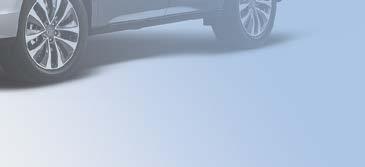





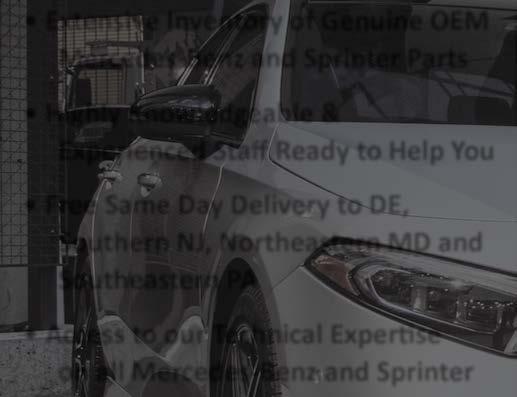

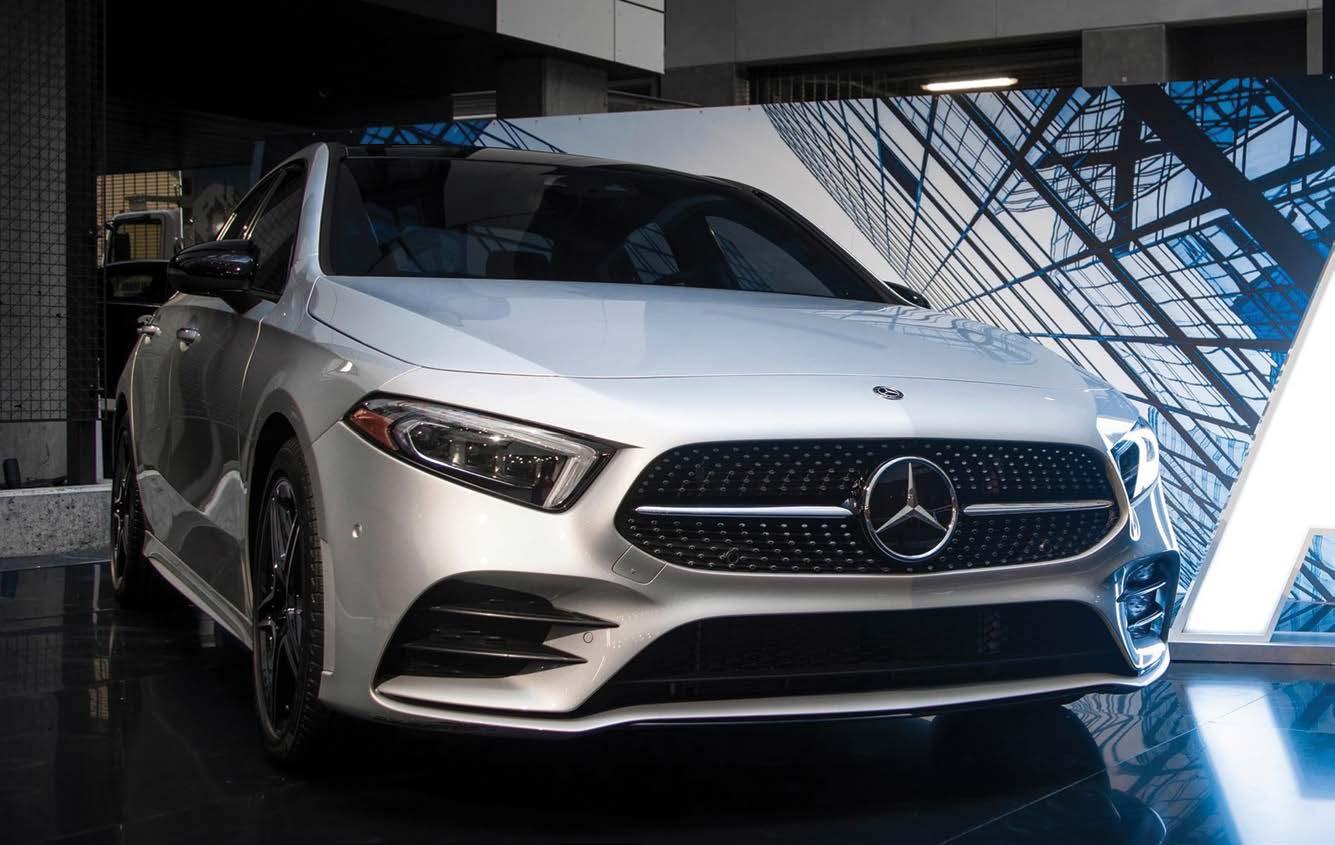










When Auto Additive was established in 2024, an important part of its mission was to work alongside partners who could help build the company’s manufacturing strategy for 3D-printed parts.
The company teamed up with Assembrix, a software technology company based in Israel.
Lior Polak, CEO and co-founder of Assembrix, is an advisory council member of Auto Additive and assists the organization in leveraging 3D-printed parts for the collision industry. Polak has more than 10 years of experience in the additive manufacturing (AM) industry, working with leading players in the market.
Polak said there are immense opportunities for 3D printing in the collision repair industry.
“For years, it has been a huge challenge to optimize the inventory so that you can serve customers on time without wasting resources on storing unused spare parts,” he noted. “While 3D printing is becoming a much more common and cost-effective technology, this is a game changer for the industry.”
Auto Additive uses Assembrix’s platform for its secure distributed manufacturing operation.
reduction by eliminating the need for massive physical inventory and making and moving physical parts.”

Polak said the company has developed the most advanced software platform in the market, enabling OEMs to remote 3D print spare parts while securing the intellectual property (IP) and fully monitor the printing process. The platform, already used by aerospace and defense customers, is entering the automotive market.
Polak said Assembrix’s platform has seamless integration into worldwide 3D printer vendors, such as EOS, SLM and HP, providing Auto Additive the advantage and flexibility to produce multiple parts from various materials.
Polak explained how blockchain is integrated with the 3D printing software.
“Blockchain technology provides
there is no data leakage and that the ‘secret recipe’ of how to print a part is fully secured.”
Additionally, he said the system records everything without any way to change the record, so the entire 3D printing process is monitored, stored and kept within a secured database.
“The future, which is already here and now, is printing spare parts inside or next to body shops,” said Polak. “This streamlines the supply process, decreases the dependency of multiple suppliers, reduces the cost and allow body shops to get parts only when they need them in a timely manner.”
He foresees Auto Additive managing the 3D printing process for OEMs.
“That means that car manufacturers permit Auto Additive to manage their remote 3D-printing activities for collision spare parts, which is a win-win model for the entire industry,” he emphasized. “It will optimize the supply and consequently, also the prices and margins for the OEMs and enable shops to have a much better and optimized supply
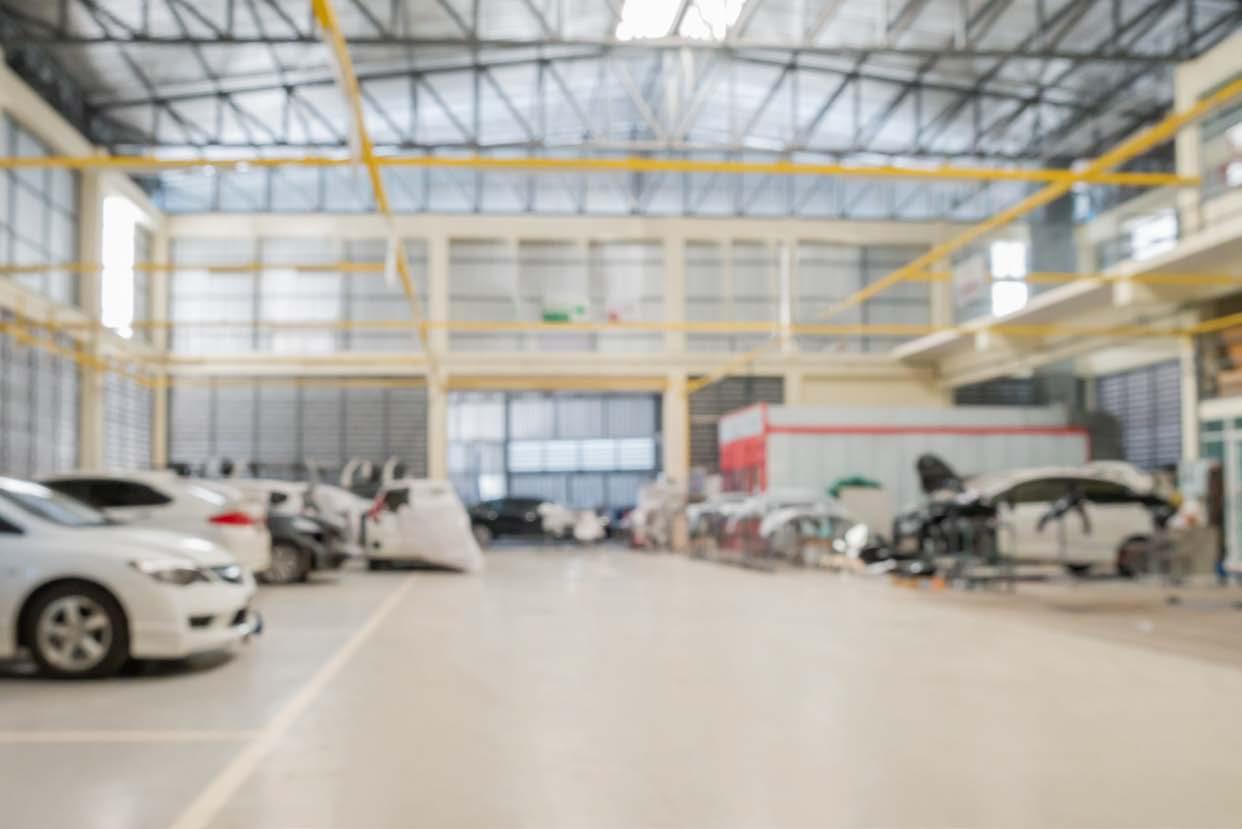






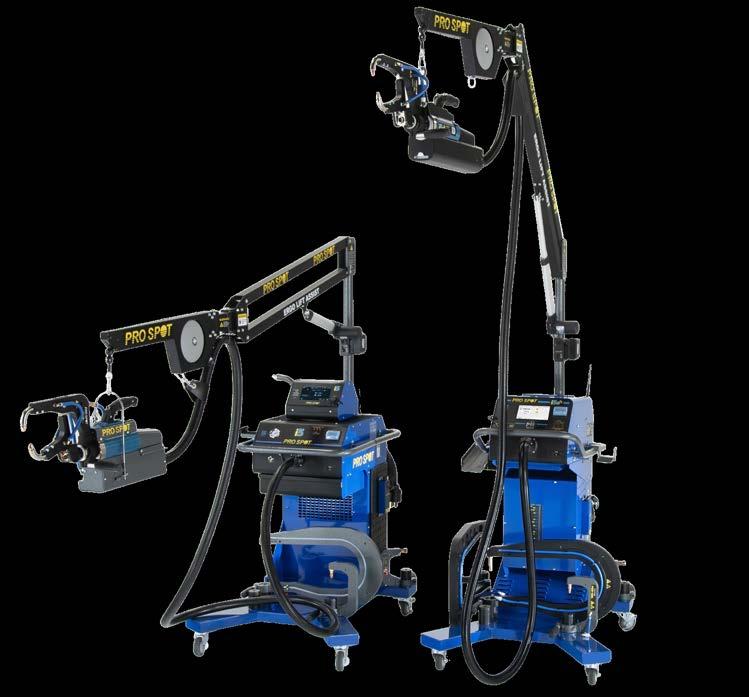
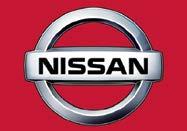
M-F 8am-5pm Sat 9am-1pm Toll Free: 800-367-0269
Direct: 732-821-9300 / 24 Hour Fax: 732-821-8295
E-mail: parts@acmenissan.com www.acmenissan.com
Now more than ever, your customers need to know their vehicle will be repaired right the first time. Depend on the factory fit, finish, and performance of Genuine Nissan Parts. Our friendly and knowledgeable staff is here and ready to serve you by phone or online.

We’re following state and local guidlines to bring you the parts you need. The health and safety of our customers is our #1 priority. These are tough times and we’ll get through them together. You can depend on us.


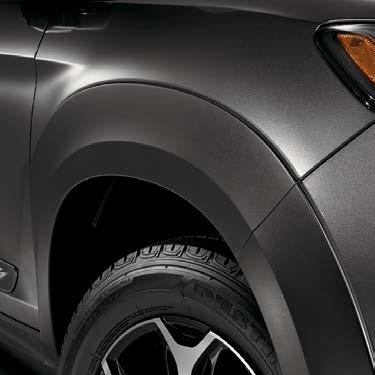
dealers for your Honda or Acura Genuine parts needs.
Nucar Honda of Norwood Norwood
833-319-6270
781-619-6791
Dept Hours: M-F 7:30-5 bh-wholesale@boch com
LIA Honda Northampton Northampton
800-369-7889
413-587-2900
Dept Hours: M-F 7:30-5; Sat 8-3 dstanisewski@liacars com
Clinton Honda
Annandale
877-657-2787
Dept Hours: M-F 8-5; Sat 8-2 abdulc@clintonhonda com
Honda of Turnersville Turnersville
800-883-0002
856-516-6262
Dept Hours: M-F 8-6; Sat 8-4 mbivario@penskeautomotive�com
Hudson Honda
West New York
866-483-6917
201-868-9500
Dept� Hours: M-Sat 8-5 mdasilva@hudsonhonda com
Acura Turnersville
Turnersville
888-883-2884
856-516-6060
Dept Hours: M-F 7:30-5; Sat 7:30-4:30 sbaptist@penskeautomotive com
Autosport Acura
Denville
973-361-3117
Dept Hours: M-F 7-6; Sat 8-4 erin@theautosportgroup com
Bill Vince’s
Bridgewater Acura
Bridgewater
908-704-0307
Dept Hours: M-F 8-7; Sat 8-4 mattn@bridgewateracura com
Madison Honda Madison 800-648-0293
973-822-1710
Dept Hours: M-Thu 7-7; Fri 7-6; Sat 7-5; Sun 8-4 jay madisonhonda@gmail com
Route 22 Honda Hillside
973-705-9100
Dept Hours: M-Sat 8-5 rt22hondaparts@route22honda�com
Scott Honda of Vineland
Vineland
800-893-3030
856-692-4449
Dept Hours: M-F 6:30-5 parts@scotthondavineland com
Sussex Honda Newton 800-842-0557
973-579-3500
Dept� Hours: M-F 8-5 realhondaparts@sussexhonda com
Ide Honda Rochester 800-462-0056 (N.Y.)
585-586-4919
Dept Hours: M-Thur 8-8; Fri 8-5:30; Sat 8-5 parts@idehonda�com
Elite Acura
Maple Shade 856-722-9600
Dept Hours: M-Sat 7:30-6 bmartinsen@eliteacura com
Open Road Acura of East Brunswick East Brunswick 732-238-0777 732-238-5466
Dept Hours: M-F 8-5; Sat 8-4 robert talbot@openroad com
Open Road Acura of Wayne Wayne 973-696-5151
Dept Hours: M-F 7:30-6; Sat 8-4 jonathan tangen@openroad com
Lamacchia Honda Syracuse 315-471-7278
Dept Hours: M-F 7:30-5:30 parts@lamacchiahonda com
Lia Honda of Albany
Albany
518-438-4555
Dept Hours: M-Th 7-6; F 7-5:30; Sat 8-5 mluciano@liacars com
Lia Honda of Brewster Brewster 845-278-4177
Dept Hours: M-F 7:30-5; Sat 8-4 cpaulson@liacars com
Lia Honda of Williamsville Williamsville/Buffalo 877-659-2672
716-632-3800
Dept Hours: M & W 7:30-7; Tu & Thur 7:30-6 Fri 7:30-5; Sat 8-5:30 mmiller@liacars com
Ray Laks Honda Orchard Park 716-824-7852
Dept Hours: M, Tu, Th 8-8; W, F 8-6; Sat 8-5 jmaybee@raylaks com
Acura of Westchester Westchester 914-834-8887
Dept Hours: M-F 7:30-8; Sat 8-4; Sun 9-4 acura parts@yahoo com
Curry Acura Scarsdale 800-725-2877 914-472-7406
Dept Hours: M-F 8-6; Sat 8-5 parts@curryacura com
Paragon Acura Woodside 718-507-3990
Dept Hours: M-F 8-6; Sat 8-5; Sun 9-4 parts@paragonacura com
Baierl Honda Wexford
818-332-7351
Dept Hours: M-F 8-5; Sat 8-4 markludwig@baierl com
802 Honda Berlin
802-223-9700
Dept Hours: M-F 7:30-5; Sat 8-Noon hondaparts@802cars com
Smithtown Acura St James 631-366-4114
Dept Hours: M-F 7:30-5:30; Sat 8-4 parts@smithtownacura com
Baierl Acura Wexford 800-246-7457 724-935-0800
Dept Hours: M-F 8-5; Sat 8-4 cameronegerter@baierl com
Davis Acura Langhorne 267-296-1000 215-943-7000
Dept Hours: M-F 7-7; Sat 8-4 frankp@davisacura com
By Brian Bradley Autobody News
Artificial intelligence (AI) is manifesting major applications in writing and verifying both insurance claims and repair estimates in the collision industry.
But while collision repair innovators believe AI increases the agility, accuracy and speed of body restoration, efforts to expand AI in the sector are ramming into an unclear policy landscape and a labor force that fears resultant widespread job loss. From venture capital to AI workforce training to virtual driving assistants, the collision repair industry is witnessing significant investments in AI that propose to increase value for independent shops and original equipment manufacturers (OEMs) alike.
Collision repair technology providers told Autobody News how they are using AI to simplify, streamline and expedite insurance and repair processes.
Because AI use cases are a broad and complex topic, this article touches on only a portion of these companies’ AI-related activities.
AI Applications in Collision Repair CCC Intelligent Solutions started its AI efforts about 10 years ago, CCC Vice President of Product Management
Mark Fincher told Autobody News. “We’re not jumping on the hype cycle with AI; we’ve been at this for a very long time,” he said.
Over that time, the 44-year-old company has seen its AI-powered software evolve from merely being able to identify damage based on photos, to being able to predict damage costs within a range, and more recently, into a platform that can convert photo inputs into very specific estimates, he said.
designed the function — which enables AI-powered creation of initial damage estimates — specifically for body shops. The human can set the app to automatically accept estimates that clear a certain threshold; for example, if the app reveals a 99% chance a bumper needs replacing, Fincher said.
Another legacy company building out its AI capabilities in the collision repair and estimates realm is Mitchell International.

The original CCC AI model allowed consumers “to take a few photos, submit those photos, and then have the AI make a prediction of … what the consumer should expect that [repair] to cost,” Fincher said. More recently, in October 2023, CCC launched Mobile Jumpstart in its CCC ONE app. CCC
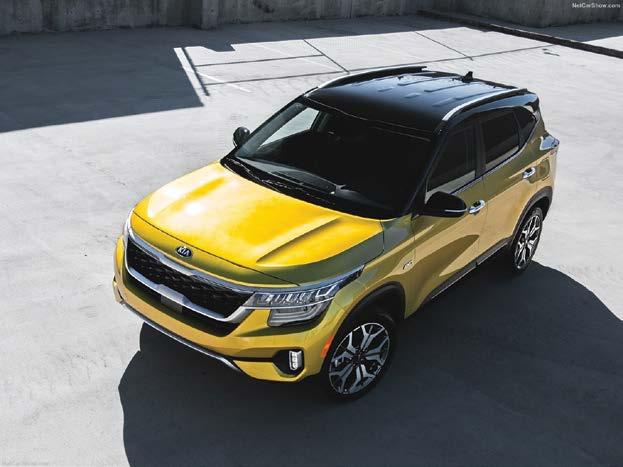


Olivier Baudoux, Mitchell senior vice president for global product strategy and AI, framed his company’s AI-powered capabilities under four “intelligent” categories of the collision estimate process: photo capture, triage, estimating and review.
Both CCC and Mitchell report their AI
shortens the estimate process.
Fincher said his platform can finish 80% of a claim estimating process within two minutes. The full estimate process normally takes about 15-30 minutes, he said.
Baudoux said Mitchell’s estimate creation function pre-populates 70% of the lines of an estimate, on average, significantly reducing the roughly 30 minutes it normally takes to write an estimate.
Trueclaim founder and CEO Elie Lloyd said his platform’s AI assists in triaging crashed cars into three categories: fixable with cosmetic damage, fixable with deeper damage and total loss.
Being able to identify a total loss upfront is particularly useful for insurance companies and consumers, Lloyd noted, as it saves money on towing and storage expenses, and avoids unnecessarily occupying shops’ real estate with rattletraps instead of repairable cars.
Optimizing the estimate process isn’t AI’s only value proposition in collision repair.
As multi-shop operators continue to onboard new appraisers, they want to ensure the new hires are learning best








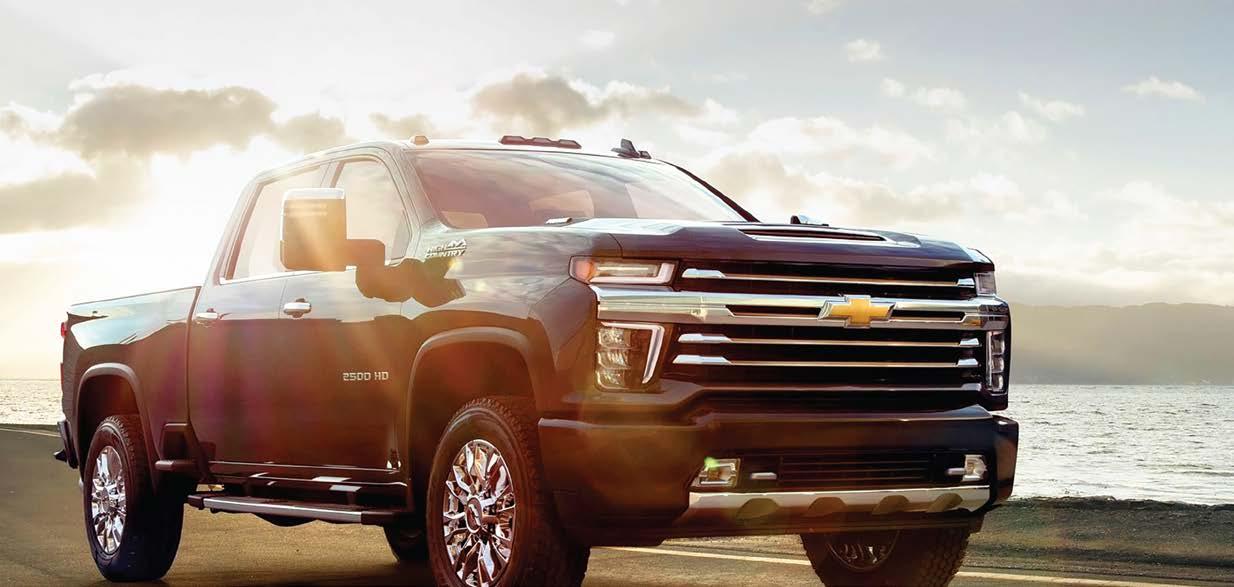









practices, and may use Mitchell’s review solution, for instance, to coach new hires on critical skills, Baudoux said.
“It’s not necessarily about just capturing cost-saving or other opportunities like that,” he said. “It’s just about making sure as well that the proper and safe repairs are being enforced, and that they’re working with what they consider to be the right discipline and philosophy.”
Fincher noted AI also holds promise both in completing mundane, time-consuming tasks as well as determining optimal workflows based on technicians’ skills.
“There are tons of opportunities to help us as humans combine [natural language processing] with machine learning or large learning models to help that blue-collar technician that is not going to use AI to have a robotic hand come over them and start repairing the car,” he said. “But instead of searching through 20, 30, 40 pages of repair procedures to find the thing they want, maybe they can get to it really quick with a natural language query into repair procedures.”
AI may soon be able to discern the speed that shops swamped with cars can complete repairs if certain damages are assigned to specific technicians who excel in the specific car being repaired, Fincher said. AI may soon help shops determine whether
they should “reshuffle” staff as needed to “get everything out 0.4 days faster, or all cars out 1.2 days faster,” he added.
In addition to training, another AIfocused company involved in the collision repair sphere is customer review automation platform Propel.
The company uses AI to harness collision repair shop customers’ reviews from platforms like Google, CarWise, Yelp, the Better Business Bureau, Facebook and other platforms, Propel Chief Product Officer Gaurav “Rav” Mendiratta told Autobody News.
From there, the service allows body shops to provide one-click, AIautomated responses to customer reviews on Google, Yelp, etc., tailored to the specific review.
The company has also integrated with CCC ONE, Mendiratta said. As soon as a car logged in the CCC ONE system is picked up, Propel gets notified, at which point Propel automatically texts or emails the customer, via the repair shop, to remind them to review the business on a specified online rating platform.
“We just provide them the link and 30 to 40% end up leaving a review,” Mendiratta said. “Verbally, if you ask a customer [to review], the conversion rate is less than 4%. So, if you ask 100 customers, even though all 100 are happy, four or five will
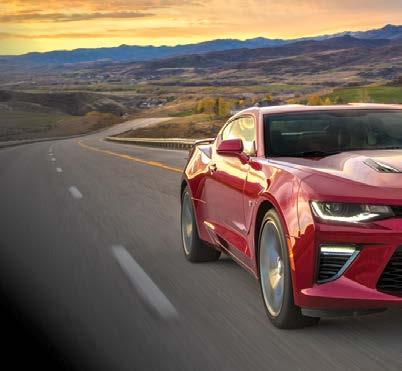
actually end up writing a review. With our software, because of the automation and the reminders, 25 to 35 end up leaving a review.”
Another industry application for AI is assisting in subrogation claims.
Tractable announced a partnership with PartsTrader in October 2023, which integrated the latter’s historical parts price data into Tractable’s reviewer software.
Tractable said the partnership has enabled insurers to swiftly and accurately review subrogation claims, referring to the adjudication of amounts owed between insurance companies after an accident depending on which party was found liable.
There are typically 13 to 15 automotive parts per repair estimate that need to be checked for price, and it could take two to five minutes per part, Tractable CEO Venkat Sathyamurthy told Autobody News.
“What this means is the time it takes to process the subrogation claim gets longer, and then the claim remains open in the back end,” he said. “When a subrogation claim comes in, we automatically look at the parts that are there and we connect with PartsTrader, and then we improve the speed and efficiency.”
Tractable has trained its AI on more than 500 million images to accurately
assess damage, Sathyamurthy said. The company continuously trains its AI on damage identification, in part, by having people tag and label images of damaged cars, and then upload those files into Tractable’s system, he said.
From there, Tractable’s AI continues learning based on the data provided by appraisers and service providers, according to Anderson.
That process is particularly important as new car makes and models roll out, which introduces fresh variables to the damage assessment process.
Data on automotive part types and prices form the backbone of AI’s examinations and recommendations around repair estimates and insurance claims.
Collision repair technology providers glean their data from a variety of sources, sometimes partnering with other companies and other times sourcing from their own repositories.
CCC uses a motor database including all OEM parts, but shops can use the company’s AI to tailor those part selections, drawing from embedded code tables, Fincher said.
Mitchell has compiled OEM and aftermarket part prices and product numbers for nearly 75 years, which provided a sturdy foundation for the l CONTINUED ON PAGE 44















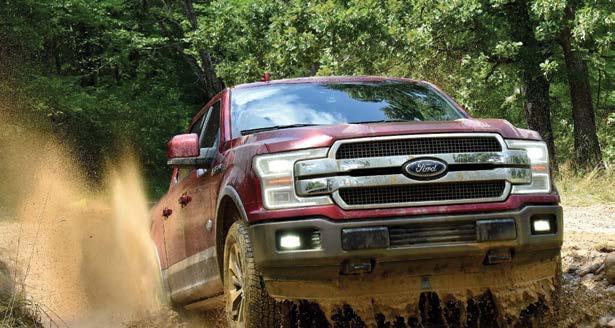



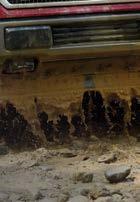




















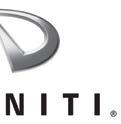








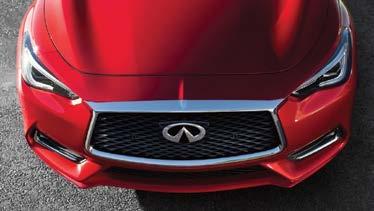
by Abby Andrews Autobody News
John Yoswick is a longtime writer for Autobody News and editor of the weekly CRASH Network newsletter, which conducts regular surveys of collision repair shops to find out how their business — and relationships with insurers in particular — are faring. He recently helped kick off “Insurance Talk: Navigating Insurance and Repairs,” the latest series on The Collision Vision podcast, hosted by Cole Strandberg and driven by Autobody News, by giving an overview of the current state of insurance in collision repair, as well as emerging trends.
DRPs: An Evolving Relationship
Yoswick said when he started covering the collision repair industry in the late 1980s, only a couple insurance companies had direct repair programs (DRPs) established. The concept caught fire in the 1990s, reshaping shop and insurer relations.
The first DRPs were very different from what they look like today. “The pricing and other concessions that insurers initially asked for were pretty limited, and so it appealed to those who were tired of having to fight over
each claim and who were looking to speed up the process, while also getting a more steady supply of work,” Yoswick said.
Still, there were people in the collision repair industry who predicted DRP agreements “would likely become less of a partnership in the decades that followed,” Yoswick said. “And many shops do feel that the benefits of DRPs have become much more one-sided.
costs by insisting on more non-OEM parts or considering distribution partnerships to buy parts or paint directly.
“Shops really pushed back on those things,” he said. “I think that even those not around for some of those past times are seeing, even if they don’t realize it, how the relationship between shops and insurers has been shaped by those turning points 1,000%.”

“I think that’s part of what’s led to more friction between shops and insurers, and less interest on the part of some shops to continue in those relationships,” he added.
The rise of DRPs brought more points of contention, Yoswick said, as insurers tried to reduce their own
Advancing Vehicle Tech’s Effect on Insurer-Repairer Relationships
Yoswick said before he started covering the industry, manufacturers’ turn to unibody construction in the 1970s and ‘80s had a dramatic effect on repairs and, with it, how shops and insurers worked together – so much so, it led to the formation of I-CAR.
“Shops and insurers jointly recognized the importance of getting the industry trained to repair unibody vehicles correctly,” he said.
More recently, Advanced Driver Assistance Systems (ADAS) and the scans and calibrations necessary to repair them correctly have had a similar effect.
“The realization about the need for scanning a significant percentage of vehicles seemed to happen pretty rapidly, and that rapid change led to a lot of push back from insurers, and everybody scrambling to get their arms around what this technology required,” Yoswick said. “It adds to the repair process and repair costs.”
Since 2017, Yoswick said CRASH Network’s shop surveys have measured how long shops say they have to wait for a response from an insurer about supplement approvals.
“Back then, the bulk of those reviews were in-shop re-inspections,” Yoswick said. “And that has shifted, as everybody knows, most dramatically starting during the pandemic, to what we initially were calling desk reviews and are now more often called remote reviews.”
The wait times for these reviews have increased from two to three days in 2017 to almost five days on average – “a full workweek for a supplement review, and the wait times vary quite a bit from one insurer to another,” Yoswick said.
Three of the larger insurers reportedly are taking seven days or more to review supplement

















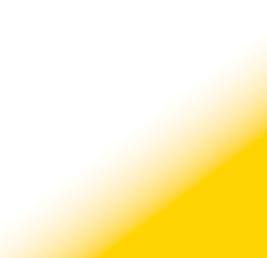

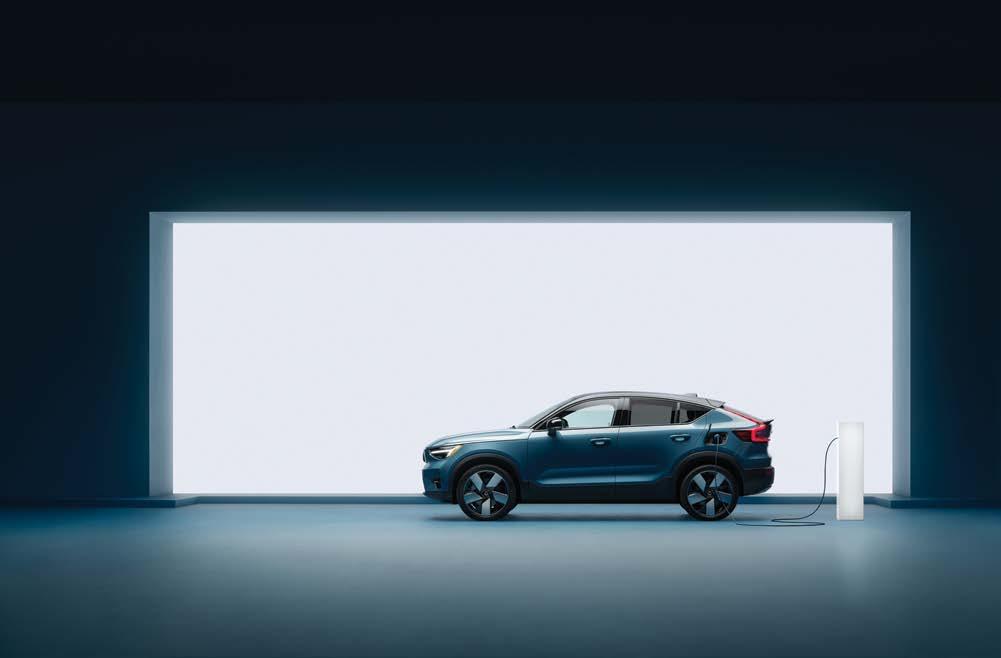


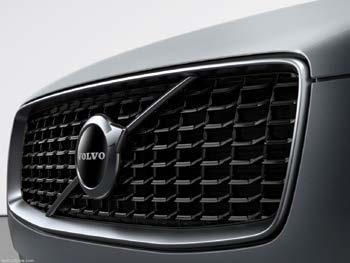
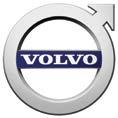
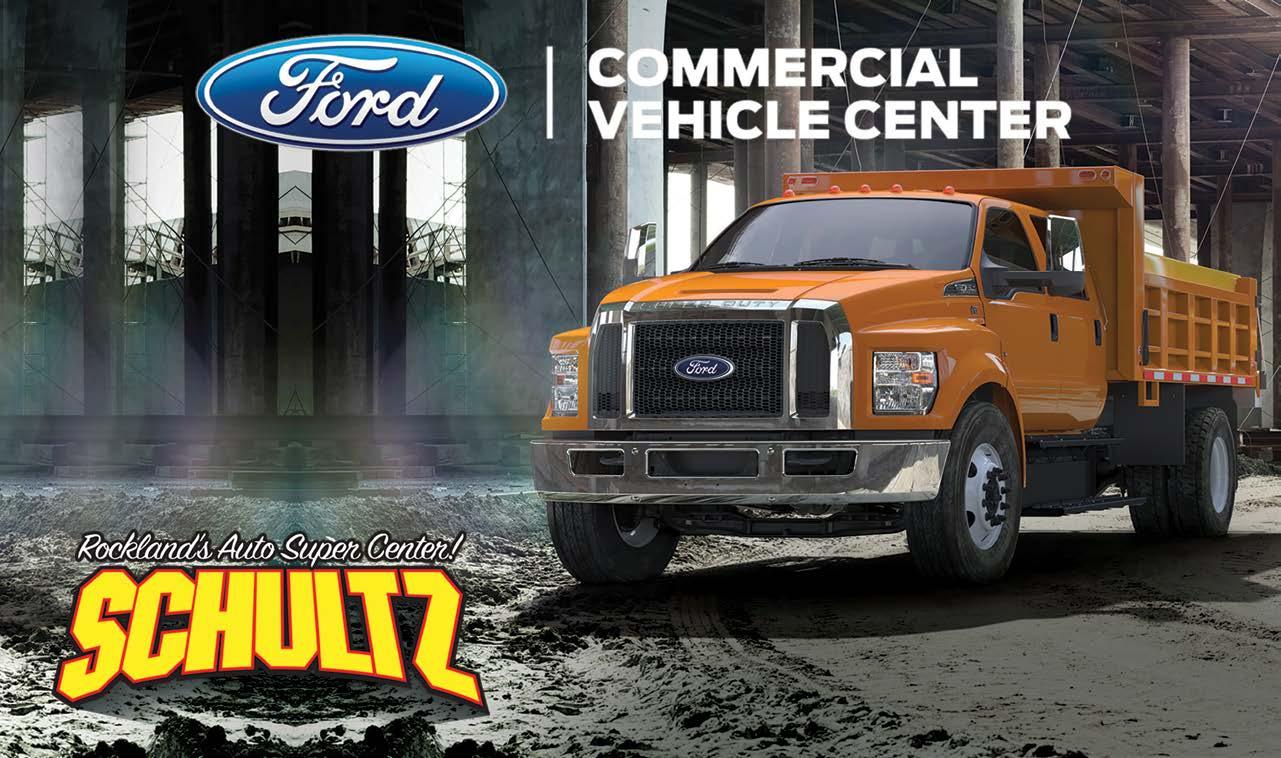
approvals, he said.
The wait time has a trickle-down effect on shops’ productivity and backlogs of work, as well as how long a customer has to rent a car while theirs is in the shop. That all has a negative effect on customer satisfaction and their loyalty to both shops and insurers.
“There’s just so much waste and cost related to this for both sides that I’m sort of baffled why there’s not more joint efforts by shops and insurers to combat it,” Yoswick said.
Strandberg asked how DRP agreements affect how a shop operates.
“So many ways,” Yoswick said –everything from the parts vendors and estimating software a shop uses, the makes of vehicles it can fix, how it markets itself and even how it pays its employees can be affected by a DRP.
However, Yoswick pointed out, what may be an untenable DRP for one shop might work very well for another.
One multi-shop owner told Yoswick he doesn’t work with a particular insurer because he found them too difficult, but he knows another multishop owner who has a location that does almost nothing but DRP work for that same insurer.
Insurers seem focused on trying to establish consistency in what procedures they will pay for related
to ADAS scans and calibrations right now, Yoswick said, as everyone in the industry recognizes the liability they face if they don’t follow OEM repair procedures.
“I’m hoping there’s not too many people listening right now who aren’t aware of the John Eagle case,” Yoswick said.
Post-collision OEM repair procedures can call for “pretty intrusive stuff,” Yoswick said, like measuring steering columns and replacing seat belts, but some shops are reporting significant pushback from insurers.
Insurers are trying to establish uniform wording on estimates and invoices to make data analysis easier.
“One of the keys to building that consistency is everybody calling things by the same name,” Yoswick said. “I think [insurers are] going to increasingly push back on generic invoices that just say something like ‘calibrate vehicle’ rather than giving specific detail, and I think they’re increasingly going to want more documentation on exactly what was done and what’s being charged for.”
Yoswick said he thinks the consistency could “come fairly quickly,” as some service providers and insurers are starting to work on agreements, but he didn’t want to speculate on how repair costs might
come down as it is established.
Labor rates are always another point of contention, Yoswick said, as his surveys find a steady rise in the number of shops charging customers beyond their deductible to cover costs the insurer won’t. “It can be pretty easy to explain to a customer, your insurer will only pay X dollars per labor hour and our labor rate is X plus two, so we need to charge you $2 for each of the 30 labor hours on this job,” he said.
When considering a DRP, shop owners should establish what percentage of their business they want to come from any one particular source. They should also consider the type of vehicles their shop tends to repair and their market demographics, as well as their staff’s skillsets. “Try to find the ones that have the best fit,” Yoswick said.
“We’ve definitely seen some indication of shops moving away from DRPs and focusing more on OEM certifications,” Yoswick said.
Of about 550 shops that responded to a CRASH Network survey in March, Yoswick said, about one-third said they had no DRPs for the past year or more, which was consistent with prior years’ surveys.
But of the 365 or so shops that did
have at least one DRP, about 22% reported having fewer DRPs than the year before.
“Combined, those 365 shops had just under 1,300 total DRPs, but that was 84 fewer DRPs than that same group of shops said they’d had a year earlier,” Yoswick said. “That’s a that’s a pretty big shift.
“We also track how much backlog of work shops have, how their total sales and car counts are changing over time and across the board,” Yoswick said. “Those things were high and rising in 2021, 2022 and most of 2023. So if you’ve got more work than you can get to, it’s pretty much a no brainer that maybe you don’t need all that discounted DRP work.”
Yoswick said he thinks, right now at least, shops see more potential benefits going after OEM certifications instead.
“I think what will be interesting to watch, as we see shops’ backlogs and work in process and claims counts starting to get back closer to pre-pandemic normal, is whether that trend of moving away from DRPs stabilizes or even reverses itself, and I’m not sure I have a prediction on that. I think it’s too early in that trend,” he said.
Insurers have offered rate increases to shops to keep them in l CONTINUED ON PAGE 46



ARTIOLI CHRYSLER DODGE
525 Enfield Street Enfield, CT 06082 (888) 436-6727
MARYLAND
CRISWELL CHRYSLER
JEEP DODGE RAM
84 Bureau Drive Gaithersburg, MD 20878 (301) 212-4453
OURISMAN CHRYSLER
DODGE JEEP RAM 12430 Auto Drive Clarksville, MD 21029 (410) 988-9570 Fax: (410) 988-9591
OURISMAN CHRYSLER
DODGE JEEP RAM 2406 Crain Hwy. Bowie, MD 20716 (240) 245-1966
WALDORF DODGE
2450 Crain Highway
Waldorf, MD 20601 (866) 843-1905 (301) 843-1905
KELLY JEEP CHRYSLER
353 Broadway – Route 1 North Lynnfield, MA 01940 (800) 278-8558
Fax: (781) 581-2490 kjcparts@kellyauto.com
FRANKLIN SUSSEX AUTO MALL
315 Route 23 Sussex, NJ 07461
Order Hot Line: (855) 268-1207 Fax: (973) 875-9088
TURNERSVILLE CHRYSLER
JEEP DODGE RAM
3100 Black Horse Pike Turnersville, NJ 08012 (856) 875-2627

NEW YORK
CENTRAL AVENUE
CHRYSLER JEEP DODGE WHOLESALE DIVISION
1839 Central Park Avenue
Yonkers, NY 10710 (800) 967-5298
Fax: (914) 961-4313
EASTCHESTER CHRYSLER JEEP DODGE
4007 Boston Road Bronx, NY 10466 (914) 597-7018
NEMER CHRYSLER JEEP
DODGE RAM OF SARATOGA
617 Maple Avenue Saratoga Springs, NY 12866 (518) 584-0058
ROCKLAND CHRYSLER JEEP DODGE
60 Route 304
Nanuet, NY 10954 (845) 623-1367
Fax: (845) 623-0903
By Abby Andrews Autobody News
Porsche Cars North America, Inc. is celebrating the 25th anniversary of the Porsche Technology Apprenticeship Program (PTAP). Since 1999, the program has provided high-quality training and education to men and women interested in becoming a Porsche technician. By the end of this year, more than 1,000 students will have graduated from the program.
“Our technicians are the backbone of Porsche’s legacy of innovation and precision,” said Timo Resch, president and CEO of Porsche Cars North America. “We are incredibly proud to be celebrating 25 years of this unique and impactful apprentice program.”
Universal Technical Institute (UTI) offers PTAP training at Porsche’s training centers in Atlanta, GA — where it originated — as well as Easton, PA, and Eastvale, CA. The classes are limited to 12 students with one instructor. Porsche directly supports, equips and invests in the UTI PTAP program, allowing students to receive training on all of its vehicles,
tools and technologies, including the 911, Boxster, Panamera, Cayman and Cayenne.
The 23-week course covers everything from essential maintenance to advanced diagnostics. After graduation, PTAP helps technicians
also worked under the shop foreman as an apprentice while he was a student.
Fuller said he applied to PTAP because his dad had owned a couple Porsches, and he wanted to work on them. He also liked the exclusivity of the program.

find full-time jobs at one of the 200plus Porsche Centers in the U.S. Most graduates are able to secure a wellpaying and stable start to their career in an industry with high demand.
Jarred Fuller has worked as a full-time technician at Porsche Service Center South Atlanta since he graduated from PTAP in 2021. He

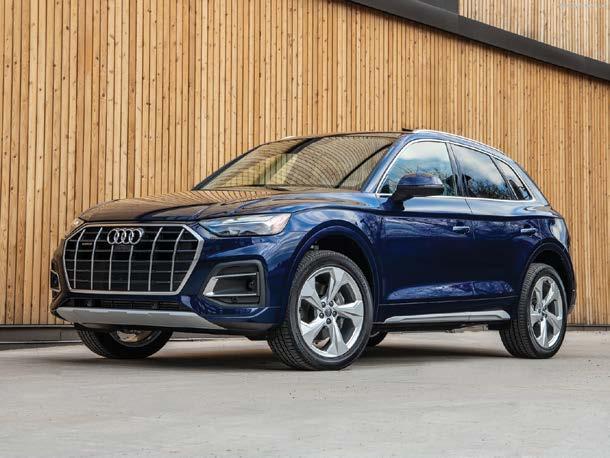

“I was interested in doing the most difficult thing,” Fuller said.
The training was mostly handson, other than some classroom instruction most mornings to learn about what they would be working on for the rest of the day.
“It builds understanding of cars in general and specifics with the Porsches a lot faster,” Fuller said. “It was a lot easier to grasp things at an accelerated pace than classroombased.”
PTAP graduates are eligible for bronze certification within a year of working full time — they only need
more shop experience and to pass a test.
“Classes offered to [technicians pursuing bronze certification] aren’t every week; they may only be every three or six months or once a year, so it can take an extended amount of time to bring somebody up to speed,” explained Daniel Joffe, service director at Porsche Service Center South Atlanta. “Going to PTAP is accelerated. They’re getting every course Porsche would require to get bronze level.”
“I gained a three- to four-year advantage by going through PTAP compared to other dealer technicians who didn’t,” Fuller said. “I took the same amount of courses, but that jump has allowed me to progress through certifications at a higher rate.”
Joffe said several technicians working there are PTAP graduates. In fact, he prefers them.
“If I were given five applications and one was a PTAP student, I would give that one a higher priority because they have manufacturer-specific training,” Joffe said. “These are not easy cars to work on and everything is very expensive.”



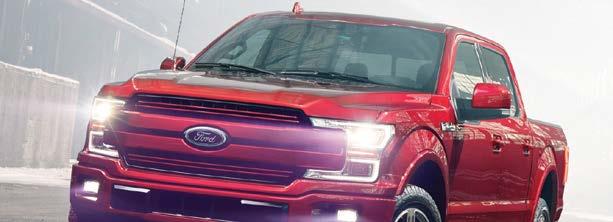





Mercedes-Benz of Wilmington Wilmington 302-995-5030
302-995-5033 Fax
M-F 7:30am - 5pm Sat 8am - 2pm parts@mbofwilmington.com www.mbofwilmington.com
Mercedes-Benz of Burlington Burlington 833-768-5924
617-275-2182 Direct 781-229-1600 Main
M-F 7am-6pm Sat 8am-5pm parts@mbob.com www.mbob.com
Mercedes-Benz of Hanover Hanover 781-924-4210
M-F 7:30am-5pm Sat 8am-4pm mbhanoverparts@gp1auto.com
Smith Motor Sales of Haverhill, Inc Haverhill 877-764-8462 Direct
877-SMITH MB 978-702-5020 Fax M-F 8am-5pm
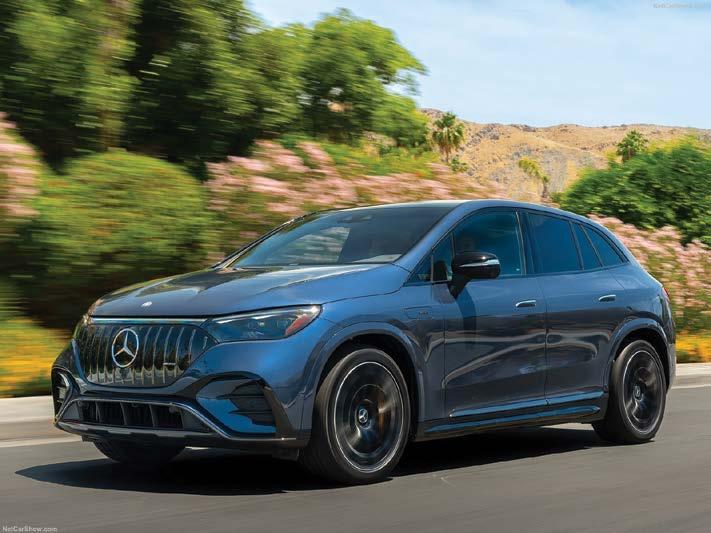
Mercedes-Benz of Goldens Bridge Goldens Bridge 914-232-8146
914-232-4770 Fax
M-F 8am - 5:30pm Sat 8am - 2pm achristiano@mercedesbenzgb.com www.mercedesbenzgb.com
Mercedes-Benz of Smithtown St. James 631-265-5339
631-265-8146 Fax
M-F 8am - 5pm Sat 8am - 4:30pm mlevantino@mbofsmithtown.com www.mbofsmithtown.com
Mercedes-Benz Atlantic City Pleasantville 609-645-9310
609-272-1535 Fax
M-F 8am - 6pm Sat 8am - 4pm bmorey@mbofatlanticcity.com
Mercedes-Benz of Newton Newton 800-842-0557
888-302-2369
973-383-1284 Fax
M-F 8am - 5pm realmercedesparts@mbofnewton.com
Mercedes-Benz of Fort Washington Fort Washington 267-419-1414
201-765-9760 Fax
M-F 7:30am - 6pm Sat 7:30am - 5pm mbpartswholesale@yourmercedes.com
Mercedes-Benz of West Chester West Chester 484-313-1110
484-313-1002 Fax M-F 7:30am - 6pm Sat 7:30am - 5pm parts@mbofwestchester.com
Viti Mercedes-Benz Tiverton
800-544-5580
401-624-6181
401-624-4817 Fax
M-F 7:30am - 5:30pm Sat 9am - 5pm eric@viti.com www.viti.com
company’s AI development, Mitchell Senior Vice President for Repair Sales Jack Rozint told Autobody News.
The company’s database can also distinguish whether used parts are recycled or aftermarket, and Mitchell develops its own labor times, Rozint said.
Though Tractable uses PartsTrader data for parts availability and pricing information in subrogation disputes, Sathyamurthy emphasized his platform itself is, at its core, an open integration platform.
Tractable’s specialization is using AI to provide more accurate damage assessments, working with firms like parts recyclers to understand granular details about parts grading, including whether a part is reusable, he said.
Recyclers may use Tractable to enhance their vehicle purchasing, where Tractable’s AI is combined with in-house vehicle assessment and customer purchasing logic, Anderson said.
Tractable Head of Automotive Jimmy Spears said his company’s AI excels at distinguishing car parts from one another and discerning if they are damaged. If parts prices need to be brought in, that can happen through an open process with Tractable’s customers, he said.
After determining whether damage exists, “we can refer to a database and pull in the parking tax,” Spears said. “If you want to know the parts price, get your database, and we’ll tell it to you. But what you want to know is, ‘Is that a car?’ ‘Yes.’ ‘Is that car damaged?’ ‘Yes.’ ‘Do you have to repair or replace that part?’”
Skeptical workforce attitudes toward AI are a well-publicized hurdle to development of the technology in the collision repair sphere.
But other challenges facing AI companies in the industry include data privacy and a lack of clear policymaking, executives told Autobody News.
When snapping photos of crashed cars, customers’ personally identifiable information (PII) such as license plate numbers would be uploaded into the system unless there was a built-in protection mechanism, said Trueclaim’s Lloyd.
Further, customers’ names, addresses and phone numbers are naturally part of insurance claims. As a third party in the collision repair process, Trueclaim must be mindful of this when insurance companies or repair shops send claims information to the company, Lloyd said.
License plate numbers are blurred out as soon as they’re uploaded, for example, he said.

Another major challenge in AI development and adoption in the collision sphere is a lack of policymaking.
Propel’s Mendiratta would like to see the federal government craft thoughtful AI policy, noting if the task is left to state governments, it could generate winners and losers.
For example, the California Consumer Privacy Act only covers companies of a certain size that do business in the state, he said. Other regional policies like the European General Data Protection Regulation govern all entities that process PII and that also do business anywhere in the EU territory, Mendiratta added.
Lloyd agreed there is a current lack of policies guiding AI usage. But he added that regulation should treat all AI-focused companies fairly and noted AI’s great potential.
Lloyd compared the current stage of AI development writ large to the internet’s regulation-scarce infancy phase.
“It’s kind of in a baby stage, and nobody really knows how this can be done, how it can be used,” he said. For “everybody that is using AI — can you guarantee this fairness? That’s really the idea of making policy. Otherwise, if this is not guaranteed, then we’re breaking ourselves.”
Autel has released Guided ADAS, an application that enables Autel Calibration system owners to use their frame, targets and expedited setup, with OE software accessed in-house or via the Autel Remote Expert platform to calibrate vehicles not yet covered by Autel tablet ADAS calibration software.
Autel depends on automakers to make the latest model diagnostic, servicing and calibration software and specifications available. This creates a lag time for the newest vehicle coverage to reach Autel tablets. To address this and provide technicians with a comprehensive, all-in-one solution, Autel developed Guided ADAS.
Guided ADAS, which is compatible with all of the Autel calibration systems: the Standard, MA600, IA800, IA900 or the new IA700 frames, allows shops to use their own OE subscriptions and tools or contract with a Remote Expert with OE software subscriptions for the setup specifications and to initiate ADAS calibration on new vehicles.








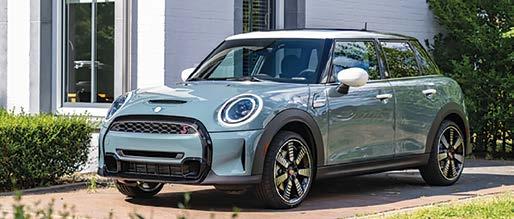
518-785-4197 Parts (518) 785-4710 Fax M-F 7:30-6; Sat 8-4 miniparts@keeler.com keelerMINI.com
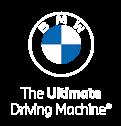

Connecticut
BMW of Darien Darien
203-328-1325
203-978-0043 Fax
M-F 8am-5pm wholesale@bmwdarien.com
BMW of Ridgefield Ridgefield
203-438-0413
203-894-8956 Fax
M-F 7:30am-5pm parts@bmwofridgefield.com
BMW of Waterbury Waterbury
844-895-6839
860-274-5471
860-274-0617 Fax
M-F 7:30am-5:30pm Sat 7:30am-4pm John.musco@hoffmanauto.com
BMW of Catonsville Catonsville
855-996-2906
410-818-2600 Fax
M-F 8am-5pm www.bmwofcatonsville.com
BMW of Silver Spring Silver Spring
301-890-3015
800-288-6982
301-890-3748 Fax
M-F 7:30am-5pm wholesaless@mileone.com www.bmwofsilverspring.com
Hampshire
BMW of Stratham Stratham 800-989-5200 vfollansbee@group1auto.com www.bmwofstratham.com
New Jersey
BMW of Bloomfield Bloomfield 888-261-6471
973-748-8373
M-F 8am-5pm Sat 8am-4:30pm psantos@dchusa.com
BMW of Morristown Morristown
973-796-3145
973-796-3146 Fax
M-F 8am-6pm wholesaleparts.bmw@openroad.com www.bmwofmorristown.com
BMW of Newton Newton
973-579-6020
973-579-6702 Fax M-F 8am-5:30pm www.bmwnewton.com
Circle BMW Eatontown 732-440-1238
732-440-1239 Fax M-F 7:30am-5pm Sat 8am-3pm Wholesale@circlebmw.com www.circlebmw.com
Park Ave. BMW South Hackensack 888-349-5168
201-291-2376 Fax
M-F 8am-5pm Sat 8am-4pm al@parkavebmw.com www.parkavebmw.com
New York
BMW of Bayside Bayside
516-304-3733
516-570-4268 Fax M-Sat 8am-5pm bmwparts@bmwbayside.com www.bmwbayside.com
Competition BMW St. James 631-724-3322 631-265-0501 Fax
M-F 8am-5pm Sat 8am-4:30pm asolla@competitionbmw.com www.competitionbmw.com
Habberstad BMW Huntington Station
631-271-7488
631-271-7931 Fax
M-F 8am-5pm Sat 8am-4pm parts@habberstadbmw.com
Keeler BMW Latham 877-553-3909
518-785-4197
518-785-4710 Fax
M-F 7:30am-6pm Sat 8am-4pm bmwparts@keeler.com www.keelerbmw.com
Pennsylvania
BMW of York York
717-849-6597
717-843-2948 Fax M-F 7am-6pm Sat 8am-12pm bmwpartsmanagers@cioccaauto.com www.bmwofyork.com
Rhode Island
BMW of Newport Middletown 401-847-9600
401-841-0680 Fax M-F 7:30am-5:30pm gromani@metromotorgroup.com wwwbmwofnewport.com
their DRPs, Yoswick said, which he had never seen before. Insurers are also more willing now to negotiate some elements of the agreements.
Yoswick said some large MSOs have already shifted to performance-based agreements with some insurers.
“They say, ‘Our average severity for this coming period will be X number of dollars.’ And then money changes hands between the two at the end of that period, depending on whether severity ended up higher or lower than what was agreed to,” Yoswick said.
As consolidation leads to more MSOs reaching that growth level, Yoswick said he expects to see those types of agreements increase.
He also thinks shops and insurers will use technology to speed up the claims process.
“I don’t know what that will look like, but there’s just too much inefficiency in the current processes for the status quo to continue,” Yoswick said. He said AI will probably play into that, by using historical data to get enough of an idea of what kind of damage a vehicle sustained in a
particular type of collision to write an initial estimate.
“Get outside the four walls of your shop,” Yoswick said. “You’ve likely got great people within your shop. They’re seeing things from within those same four walls just as you are. You need outside input from other shop owners, for example.
“Find a consultant who understands your business model and has a proven track record of helping others succeed, or get active in an association or join a 20 Group. Get outside input from podcasts like this and publications like Autobody News.
“Attend industry conferences and events to gather input, not just from the speakers and the presentations, but from interacting with the other attendees.
“Because, frankly, the most successful people I know in this industry, no matter how you choose to measure success, are people who can and do point to a multitude of ways that they’ve learned from others and then put that to use in their business,” Yoswick concluded. “I think that’s true about navigating the insurance industry landscape or almost any other aspect about managing a collision repair business.”

U.S. Navy veteran Sharone Fuller received a fully refurbished 2016 Subaru Legacy, thanks to the National Auto Body Council (NABC) Recycled Rides program, car donor Allstate and repair partner CARSTAR New Country Collision.
Fuller, who served six years in the U.S. Navy and attained the rank of E-5, is now the program manager for the HERO program of Mental Health America of Dutchess County in New York. The organization, which nominated her for the NABC Recycled Rides program, helps veterans find affordable housing and provides advocacy support.
For a long time, Fuller had to rely on friends and coworkers for transportation. With the donation of the Subaru Legacy, she and her husband can now get to their jobs and appointments for their three children.
“I am overwhelmed with joy,” Fuller said after the presentation. “This car is going to provide the
ability to make sure my kids are at appointments or the playground. It will allow me to visit veterans and help them with their needs.”
The NABC Recycled Rides program has a long-standing tradition of supporting individuals and families in need. Since its inception in 2007, the program has donated more than 3,300 vehicles, valued at approximately $47 million.
“I am very pleased to donate this car to a veteran,” said Bob Aaron, owner of CARSTAR New Country Collision. “Veterans do a lot for our country. It’s something I hold dear and I’m very happy we could do something like this.”
Additional partners in the presentation included Cars for Charity, Advanced Remarketing Services, Copart, Rapid Rim Repair, The Fob Father, Poughkeepsie Auto Imports, Emiliano’s Pizza and Albert Kemperle Auto Paint, Body and Equipment.
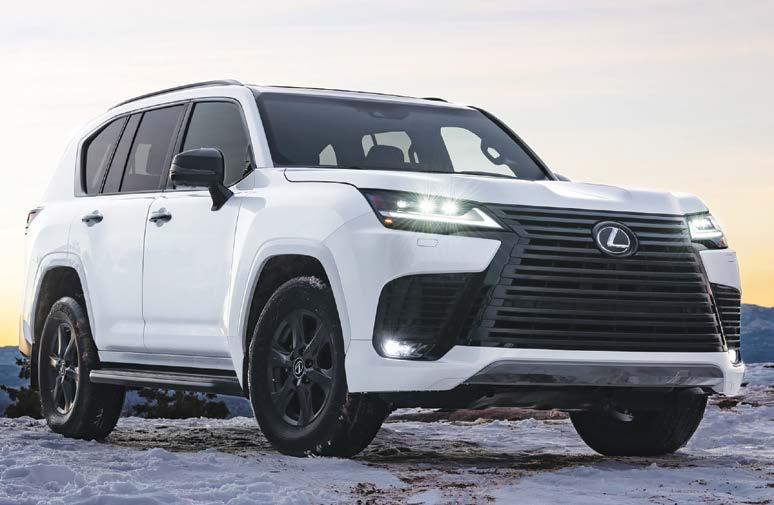











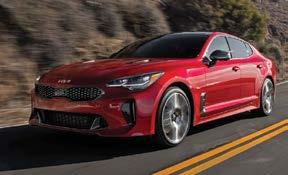







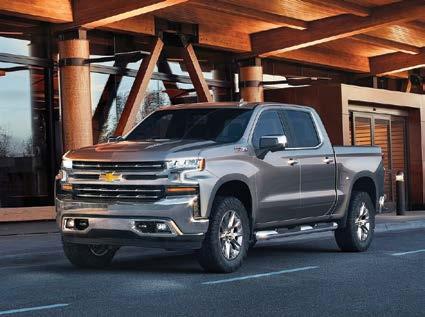



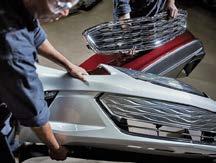














The National Auto Body Council (NABC) Recycled Rides program, in collaboration with Allstate and RJ Sell’s Body Shop in Lebanon, PA, presented U.S. Army veteran Darlene Wilson of Harrisburg, PA, with a completely refurbished 2019 Hyundai Tucson.

The gesture is a lifeline to Wilson, who has faced substantial challenges, including PTSD from her military service and difficulties stemming from a lack of transportation.
“Oh, it’s wonderful,” Wilson said of the honor. “It was very humbling and just a really great experience that there’s people out there to help out like this. I’ve been without a car for a little while, and it was a struggle getting back and forth to work.”
It was Wilson’s boss at Veterans

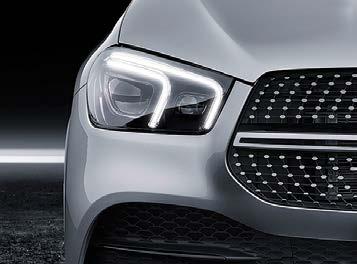
Outreach of Pennsylvania in Harrisburg who nominated her for an NABC Recycled Ride.
“It made me feel really good that he thought of me,” Wilson said. “He was like, ‘Hey, this was something that was brought to my attention and I think that this would be a really good thing for you.”
Wilson served 18 years in the Army, achieving the rank of staff sergeant and deploying overseas in Iraq and Kosovo. Her work at Veterans Outreach of Pennsylvania (VOP) is vital to their mission to combat veteran homelessness.
Wilson suffers from various medical issues including PTSD, which means she connects with other veterans in the program dealing with physical and mental issues. The peer-topeer work that she does at VOP is much more valuable because of the experiences she brings to group and individual counseling sessions.
Wilson lacked transportation to get to work, making her dependent on others. This donation will change that.
“It’s a big life changer,” Wilson said. “Just to be able to know that I’m able to do things for my mother,
who’s not always able to do for herself. I also have a granddaughter and with not having a vehicle, it kept me away from her and that’s not a good thing. So it makes it so much easier now that I’m able to just get up and go and get her when she needs me and just different things like that. It’s just real nice.”
“It was very humbling and just a really great experience that there’s people out there to help out like this. I’ve been without a car for a little while, and it was a struggle getting back and forth to work.” DARLENE
Wilson’s life has been about dedication, whether to her family, the Army or the homeless veterans she works with on a daily basis. In that true spirt of dedication, Wilson didn’t waste any time after she got the keys to her new ride.
“I went right to work,” she said.






“Work is very important to me. This program that I work at is for homeless veterans. I’m a veteran myself. I remember a time in my life when I got out of the military it was very difficult and I started spiraling a little bit, but I had a lot of people to help me, who gave me a little hand and would say, ‘You’ve got this, you can do this.’ [Working with homeless veterans] is kind of me giving back to them, to let them know, ‘Look, I understand, but I’m your light at the end of the tunnel.’”
NABC Recycled Rides is a unique program in which businesses representing all facets of the collision repair industry team up to repair and donate vehicles to individuals and families in need of reliable transportation. Since the inception of the program in 2007, members of the NABC have donated more than 3,300 vehicles valued at some $47 million.
Additional partners in the presentation included Advanced Remarketing Services, Cars for Charity, RJ Sell’s Towing, Bennet Hyundai, LKQ, Fred Beans, Continental Auto Parts, Chuck’s Auto Glass, 1-800 Radiator and Wampler’s Buff & Wax Auto Detailing.


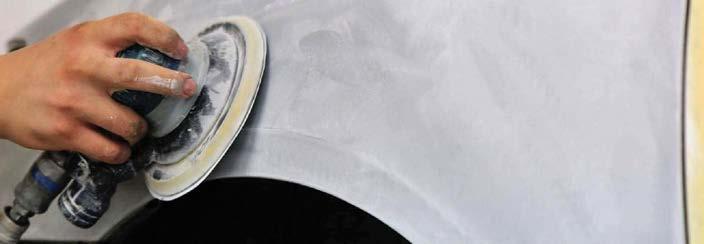
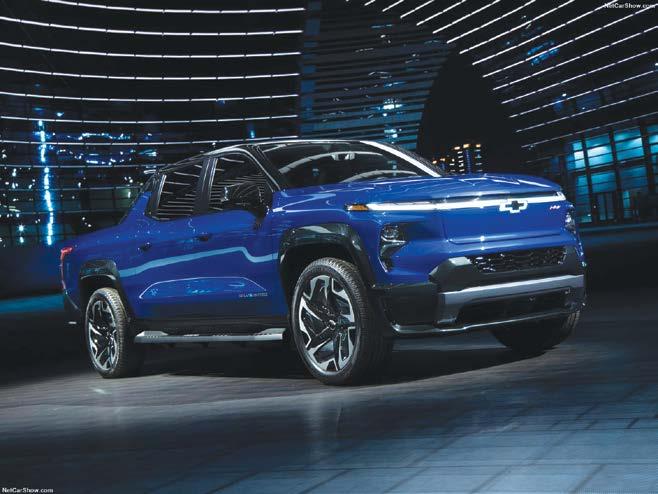
Maryland
Ourisman Chevrolet
MARLOW HEIGHTS
800-358-7788
301-899-6990 Direct
301-899-9375 Fax
M-F 7:30 am - 6 pm Sat 8 am - 4 pm wholesale@ourisman.com www.ourismanchevrolet.com
Ourisman Chevrolet of Rockville
ROCKVILLE
800-345-4640
301-424-5332 Local
301-294-6381 Fax
M-F 7 - 5:30
Massachusetts
Balise Chevrolet Buick GMC Business Elite
SPRINGFIELD
413-233-2185
413-733-8617 Fax
M-F 8 - 5 lvazquez@baliseauto.com
Nucar Chevrolet of Norwood NORWOOD
800-559-9210
781-762-9210
800-991-1009 Fax
M-F 7:30 - 5 rlindner@nucar.com
Long Cadillac SOUTHBOROUGH
508-820-9322
800-982-2258
508-879-1212 Fax
M-F 7:30 - 5 tschube@longauto.com
Marty’s Buick GMC
KINGSTON
800-870-7573
781-585-7570
781-585-2966 Fax
M-F 7:30 - 5:30; Sat 8 - 4 brucem@martysbuickgmc.com
Massachusetts
Mastria Buick Cadillac GMC RAYNHAM
888-572-1045
508-822-4074 Fax
M-Th 7:30 - 7:30; F 7:30 - 6 Sat 7:30 - 5 wholesale@mastria.com
New Jersey
Barlow Chevrolet DELRAN
800-220-1452
856-461-8417
856-764-1498 Fax
M-F 7 - 6; Sat 8 - 4 pseay@barlowautogroup.com
Cadillac of Mahwah MAHWAH
201-579-6497
201-579-6506 Fax
M-F 7 - 5
Malouf Buick GMC
NORTH BRUNSWICK
800-669-6256
732-821-5410
732-821-7549 Fax
M-F 8 - 4:30; Sat 8 - 12 kreimann@malouf.com
Malouf Chevrolet Cadillac
NORTH BRUNSWICK
800-769-6256
732-821-1517 Fax
M-F 7:30 - 5 kdiperi@malouf.com
Nielsen Chevrolet DOVER
973-366-1730
973-366-5867 Fax
M-F 7 - 4:30; Sat 8 - 4:30 parts@nielsenchevy.com
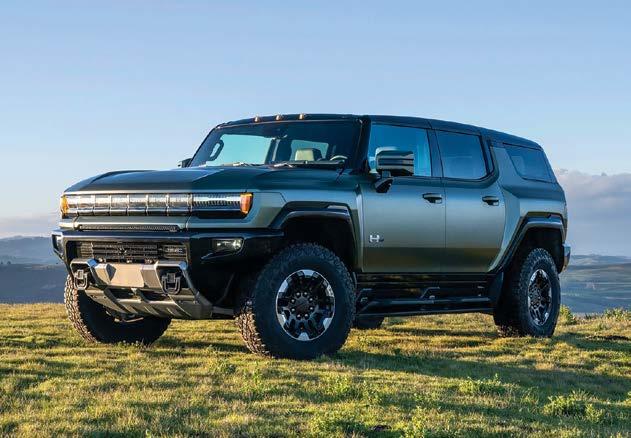
Open Road Cadillac FLORHAM PARK
973-845-3014
973-538-6978 Fax
M-F 7 - 5
Christopher.salgado@openroad.com
Open Road Chevrolet UNION 800-981-9451
908-686-2727
908-687-4267 Fax
M-F 8 - 5; Sat 8 - 4
Christopher.salgado@openroad.com
New York
DePaula Chevrolet ALBANY
800-727-8357
518-489-0184 Fax
M-F 7:30 - 6; Sat 8 - 5 parts@depaula.com
East Syracuse Chevy EAST SYRACUSE
315-437-5464
315-437-0878 Fax
M-F 7:30 - 5; Sat 8 - 3 partsdept@esyrchevy.com
West Herr Chevrolet ORCHARD PARK
716-662-7707
716-688-5519 Fax
M-F 7:30 - 5; Sat 8 - 4 sgraham@westherr.com
Pennsylvania
Greencastle Chevrolet
GREENCASTLE
717-597-2131
717-597-6932 Fax
M-F 8 - 5; Sat 8-3 jsnyder@greencastlechevy.com bmoats@greencastlechevy.com
Tom Hesser Chevrolet SCRANTON
800-435-9586
570-558-3677
570-342-8645 Fax
M-F 8 - 5; Sat 8 - 2 mhanson@tomhesser.com




Mitchell, an Enlyte company, has introduced its latest software solution: Mitchell ServiceLink powered by UpdatePromise. Using the solution, collision facilities can email or text policyholders automated vehicle repair status updates from within the Mitchell platform. They can also distribute postrepair satisfaction surveys based on customer communication preferences, receive instant alerts when the feedback is negative and generate configurable reports.
According to a recent J.D. Power study, policyholder satisfaction with the auto insurance claims process increased last year despite longer than average repair cycle times. One reason was the industry’s growing reliance on digital interactions.
Mitchell ServiceLink powered by UpdatePromise is currently in field testing in a limited number of locations with broader availability planned for the coming months.
Holman is commemorating a significant milestone this year — the 100th anniversary of its founding, a testament to a century’s legacy of growth and customer dedication in the automotive sector.

Holman was established Aug. 23, 1924, when Steward C. Holman opened the company’s first Ford dealership in New Jersey. From these modest beginnings, Holman has evolved into one of the world’s largest family-owned automotive services organizations, employing more than 9,000 staff across North America, the United Kingdom, and Germany.
“One hundred years ago, my grandfather laid the foundation for our company when he opened Rice & Holman Ford with an emphasis on both customer care and community involvement,” said Chair of the Board Mindy Holman “As I reflect on this milestone, I’m incredibly grateful to our people, who are responsible not only for our growth and success but also for creating an exceptional organizational culture. I know dad and granddad would be equally proud.”
Today, Holman, headquartered in Mount Laurel, NJ, provides an extensive range of automotive related services including industry-leading fleet management; commercial vehicle equipment manufacturing; powertrain distribution and logistics services; insurance and risk management services; and retail automotive sales as one of the largest privately owned
dealership groups in the U.S. with 59 dealerships across nine states.
“While the purpose of our company remains focused on providing a rewarding career and a better life for the employees that come to work at Holman, it is our relentless pursuit of creating an exceptional customer experience that drives our organization forward each day,” said Holman CEO Chris Conroy. “Mindy’s dad, Mr. Joe Holman, would often remind us to always focus on the customer that is right in front of you. If you provide the best experience you can for that customer, you earn the right to find another and do the same. While a simple reminder, it is this philosophy, and our deeply rooted values, that continue to guide us as we embark on our second century in business.”
Throughout 2024, Holman has celebrated 100 years of driving what’s right — the company’s corporate philosophy — with a series of events for employees and their families across the various regions in which the business operates.
Porsche Genuine Parts and Service, only at your local authorized Porsche dealer.

MARYLAND
Porsche Silver Spring Silver Spring, MD
800-288-6982
301-890-3748 Fax wholesales@mileone.com
MASSACHUSETTS
Porsche Norwell Norwell, MA
781-261-5230
781-261-5274 Fax porschenorwell.com
NEW JERSEY
Porsche Monmouth West Long Branch, NJ
732-483-8560
M-F 8-5; Sat 8-4:30 avacchiano@penskeautomotive.com
NEW YORK
Porsche Huntington Huntington Station, NY
631-424-1310
631-272-1805 Fax
M-F 8-5; Sat 8-4 parts@porschehuntington.com
Porsche Manhattan New York, NY
347-226-3913
212-208-0916 Fax parts@manhattanmotorcars.com
Porsche of Southampton Southampton, NY
631-204-2565
631-204-2559 Fax gspano@porscheofsouthampton.com
Porsche South Shore Freeport, NY
516-277-0542
516-277-0543
M-Sat 8-5:30 mtotaram@mcgovernauto.com
PENNSYLVANIA
Porsche Main Line
Newtown Square, PA
610-886-1010
610-886-1020 Fax
M-Sat 8-5 jprice@potml.com
©2024 Porsche Cars North America, Inc. Porsche recommends seatbelt usage and observance of traffic laws at all times.


Lia Volkswagen Enfield
860-698-6890
Fax: 860-265-7840
M-F 8am-5pm; Sat 8am-12pm aguimaraes@liacars.com
Ourisman VW of Rockville Rockville
855-417-4511
Fax: 240-499-2488
M-F 8am-5:30pm; Sat 8am-5pm rockvilleparts@ourismanautomotive.com www.rockvillevolkswagen.com
Nucar VW of Norwood Norwood
781-725-8505
Fax: 800-991-1009
M-F 7am-5pm Not-allusers@nucar.com www.nucar.com
Volkswagen of North Attleboro North Attleboro
508-695-7131
Fax: 508-695-0321
M-F 8am-5pm; Sat 8am-2pm kenr@driveavw.com www.driveavw.com
Open Road Volkswagen of Bridgewater Bridgewater
908-685-1068
Fax: 908-685-1547
M-F 7:30am-5pm; Sat 8am-3pm vwb.parts@openroad.com www.openroadvwparts.com
Paul Miller Volkswagen Bernardsville
908-360-1162
Fax: 908-766-6171
M-F 8am-5pm; Sat 8am-4pm aaitchison@paulmiller.com www.paulmillervw.com
Hudson Valley Volkswagen Wappingers Falls
845-298-2365
Fax: 845-224-3686
M-F 7:30am-5pm; Sat 8am-5pm billsantoro@thepremiercollection.com
Platinum Volkswagen Hicksville
516-822-4800
Fax: 516-822-4831
M-F 7:30am-5:30pm parts@platinumvw.com www.platinumvw.com
Ciocca Volkswagen Allentown
610-791-4177
Fax: 610-289-7016
M-F 8am-5pm; Sat 8am-4pm cioccavwparts@cioccadealerships.com
Piazza Volkswagen of Langhorne Langhorne 215-741-4100
Fax: 215-752-6621
M-F 7:30am-5pm; Sat 8am-5pm www.piazzavw.com langwholesale@piazzavw.com
Tesla secured approval to launch its first store in Western Massachusetts, at the same site as a service center it was already permitted to build.
According to Mass Live, the Springfield City Council and the East Springfield Neighborhood Council both endorsed Tesla’s plan to build a 35,700-squarefoot store and service center on a Caldwell Drive site, previously occupied by The American Career Institute.
The project, which includes a parking lot with capacity for approximately 360 vehicles, will meet several conditions set forth by the neighborhood council. Kathy Brown, president of the East Springfield Neighborhood Council, said the stipulations are designed to protect local residents’ quality of life.
“We appreciate the attention to detail and neighborhood council is in full support,” Brown said.
The conditions require Tesla
to minimize light pollution affecting surrounding areas and restrict the use of on-site charging stations to business purposes and customer use only. Additionally, Tesla must preserve an existing fence and mature trees on the property.
Grey Hannah, development officer for 6S Development, said the new site will include some demo vehicles, but most cars will be pre-ordered through Tesla’s online system. He also noted the project is expected to create around 30 jobs for Springfield residents.
The Caldwell Drive location has been vacant since The American Career Institute’s closure in 2013, which is now under investigation by the attorney general. The property has deteriorated in the years since.
Until the Springfield location opens, Tesla customers in Western Massachusetts will need to visit the nearest centers in Boston; Latham, NY; Uncasville and Milford, CT; or Providence, RI.
First responders from the Potsdam, NY, Fire Department and neighboring regions participated in a comprehensive training session on July 16 at the St. Lawrence County Fire Training Center in Potsdam.
The event, organized by the National Auto Body Council (NABC) First Responder Emergency Extrication (F.R.E.E.) program, USAA Insurance and HURST Jaws of Life, aimed to equip responders with the latest techniques in emergency vehicle extrication, enhancing their ability to rescue accident victims.
Today’s vehicles, designed with numerous airbags, advanced technology and innovative safety systems, pose unique challenges for emergency responders. The integration of electric and hybrid engines further complicates rescue operations, necessitating specialized training and tools.
The NABC F.R.E.E. program addresses these needs by providing education and live demonstrations on handling
high-strength steel, advanced restraint systems, and onboard technology, as well as ensuring safety around alternative fuel vehicles.
“It is exciting to have access to training on later model cars, especially in our rural area,” one of the first responders expressed after the event. “Thank you.”
Since its inception, the NABC F.R.E.E. program has educated more than 5,500 first responders.
USAA Insurance supplied the vehicles and HURST Jaws of Life provided classroom education and hands-on extrication demonstrations.
“I appreciate having access to the benefits provided by the NABC which made this event possible,” said Jesse Dunshie, the trainer from HURST Jaws of Life.
The training ensures Potsdam drivers receive the best-prepared response in the event of an accident, as first responders are now better equipped to handle the complexities of modern vehicles.



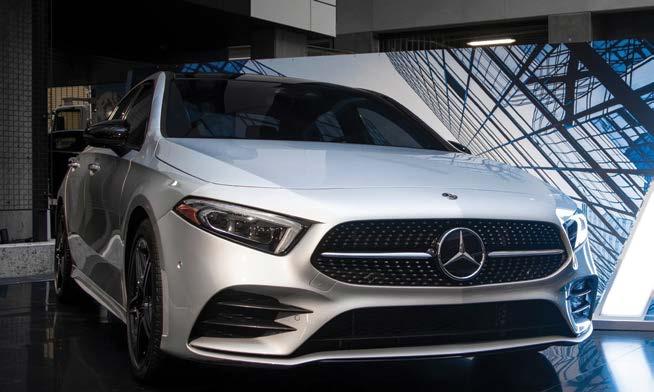



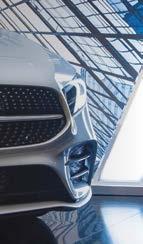














specifically
from original




Napoli Indoor Kia Milford
203-876-3331 (203) 876-3325 Fax
8am-6pm Mon-Fri paulc@napolimotors.com
Gary Rome Kia Enfield
860-253-5095 (860) 265-2674 Fax
8am-7pm Mon-Thu 8am-5pm Fri; 8am-4pm Sat parts@garyromekia.com
Kia of Attleboro South Attleboro
508-761-9300 (508) 761-0768 Fax
8am-8pm Mon, Wed; 8am-5pm Tue, Thu, Fri 8am-4pm Sat frank@courtesyma.com www.courtesyma.com
Lev Kia of Framingham Framingham 800-462-1014 (508) 626-1585 Fax 7:30am-6pm Mon-Fri parts@levkia.com
Bob Bell Kia Baltimore 800-638-4967 (410) 285-1376 Fax
7am-7pm Mon-Fri
7am-5pm Sat smelson@bobbell.com
Liberty Kia
Ramsey 201-818-8995 (201) 783-8848 Fax
8am-5pm Mon-Sat
joel@libertykiaofnj.com www.libertykiaofnj.com
Kia of Middletown New Hampton 845-374-6575 (845) 374-4718 Fax 8am-5pm Mon-Fri 8am-3pm Sat nissankiaofmiddletownparts@yahoo.com www.kiaofmiddletown.com
Northstar Kia
Long Island City (718) 683-5300 (718) 489-9889 Fax
M-F 7:30am-5pm; Sat 8am-2pm www.northstarkiany.com
Brown Daub Kia Easton 610-829-3020 (484) 546-0292 Fax 7am-5pm Mon-Fri 7am-3pm Sat parts@browndaubkia.com www.browndaubkia.com
Outten Kia Hamburg 610-562-4166 (610) 562-9436 Fax 7:30am-5pm Mon-Fri 8am-12pm Sat rwagner@outtencars.com www.outtenkia.com
Berlin City Kia Williston 800-684-5779 (303) 928-6905 Fax 6am-6pm Mon, Wed, Fri 6am-7pm Tue, Thu 7am-3pm Sat ableau@berlincity.com
*Kia Genuine replacement parts sold but not installed by an Authorized Kia Dealer are covered for 12 months from purchase date, regardless of mileage, for the part only, and any labor charge is the consumer’s responsibility.
Honda North, a staple of the Danvers, MA, automotive landscape, is celebrating its 50th anniversary, highlighting a half-century of commitment to customer service, community engagement and industry innovation.
Since its founding in 1974 by the Jespersen family, Honda North has grown from a small dealership into a leading automotive retailer in the region, known for its dedication to integrity and excellence.
The dealership, located on Newbury Street in Danvers, is the only employee-owned Honda dealership in Massachusetts.
In April, it was announced Honda North had won the coveted President’s Award from American Honda Motor Co., Inc. for the 16th time in 24 years. Honda’s highest dealership honor reflects excellence across all aspects of a dealership’s operations. Criteria include outstanding customer service and satisfaction, sales performance, training initiatives and facility standards.
“It is almost unfathomable that we have been around for 50 years, and we feel so fortunate to be here today to celebrate this milestone,” said Bryan Laskin , general manager of
“We are incredibly grateful to have reached this significant anniversary. This achievement reflects not only our dedication to providing exceptional customer experience but also the unwavering support of our community.”
BRYAN LASKIN GENERAL MANAGER OF HONDA NORTH
Honda North. “From where we began 50 years ago with the growth of our company, along with the decades of community partnerships, helping charities and families throughout the entire region makes this journey
even more special.
“Over the decades, we have grown into an award-winning automotive retailer in the region, maintaining our dedication to integrity, innovation and community involvement,” Laskin said. “We are incredibly grateful to have reached this significant anniversary. This achievement reflects not only our dedication to providing exceptional customer experience but also the unwavering support of our community.”
Laskin said the milestone is special to him as he has been with Honda North for almost 20 years.
“We look forward to continuing our tradition of excellence for many more years to come,” he added.
As Honda North looks to the future, it remains committed to evolving with the automotive industry while upholding the core values that have defined its success. With a focus on innovation, sustainability and customer satisfaction, Honda North is excited to continue serving the Danvers community and beyond.
CEO of Caliber Collision To Emcee MSO Symposium
David Simmons, CEO of Caliber Holdings LLC, will serve as the master of ceremonies at the 2024 MSO Symposium, taking place Nov. 4 in Las Vegas. Simmons has a diverse background leading large, multinational organizations in a number of industries and brings his wealth of experience to the 2024 event. This year’s MSO Symposium encompasses a very informative agenda and extensive networking opportunities.
The program will run 9 a.m.7 p.m. the Monday preceding the AAPEX/SEMA show, with sessions discussing the economy, consolidation trends, expanding AI influences, data concerns, an outlook on the industry’s future and more.
Caliber Collision has served the MSO Symposium for many years, with active participation on its advisory board. Current representative Shawn Hezar is chief client officer for Caliber. For additional information, visit msosymposium.com or call 281819-2332.

DARTMOUTH NISSAN
Dartmouth
BOB BELL NISSAN
Baltimore
800-638-4967 (410) 282-2432 (410) 285-1376 Fax
M-F 7-7, Sat. 8-5 smelson@bobbell.com
MASSACHUSETTS
NUCAR NISSAN OF NORWOOD Norwood 781-619-7270 (781) 619-7280 Fax
M-F 7-5, Sat. 7-4 rlindner@nucar.com
508-996-3200 (508) 994-1997 Fax
M-F 7:30-6, Sat. 7:30-4 parts@dartmouthnissan.com
NISSAN 24
Brockton
508-513-1816 (508) 513-1858 Fax
M-F 7:30-6, Sat. 7:30-4 parts@nissan24auto.com
ROUTE 9 NISSAN
West Westboro
508-389-4300 parts@route9nissanauto.com
NEW YORK
ROCKLAND NISSAN
Blauvelt 845-358-3670 (845) 358-6049 Fax
M-F 7:30-5:30, Sat. 8-4 ldesir@rocklandnissan.com www.rocklandnissan.com
RHODE ISLAND
STATELINE NISSAN
East Providence
401-572-3445
(401) 572-3665 Fax
M-F 7:30-6, Sat. 7:30-4 parts@statelinenissanauto.com
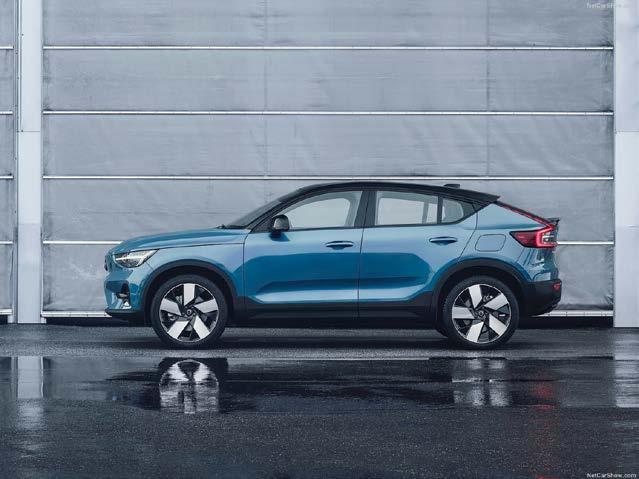

Volvo Cars Princeton LAWRENCEVILLE
609-882-5140 877-66-VOLVO
609-882-1515 Fax
Hours: M-F 8-5 gerlachd@volvocountry.com




Connecticut MERIDEN HYUNDAI
Meriden 318 South Broad St. 203-935-0896 203-935-0895
com
Toyota of Norwood NORWOOD 781-725-8505 800-991-1009 Fax M-F 7am-5pm Not-allusers@nucar com www nucar com
Fax M-Th 7:30am-7pm; F 7:30am-6pm Sat 7:30am-5pm toyotaparts@griecocars�com www griecotoyota com



Norwood 391 Providence Hwy. 800-559-9210
781-762-9210
800-991-1009 Fax Mon-Fri 7:30am - 5pm rlindner@nucar.com
203-440-9969 Fax Mon-Fri 7:30am - 5pm Sat 8am - 4pm parts@meridenhyundai.com Massachusetts NUCAR HYUNDAI OF NORWOOD









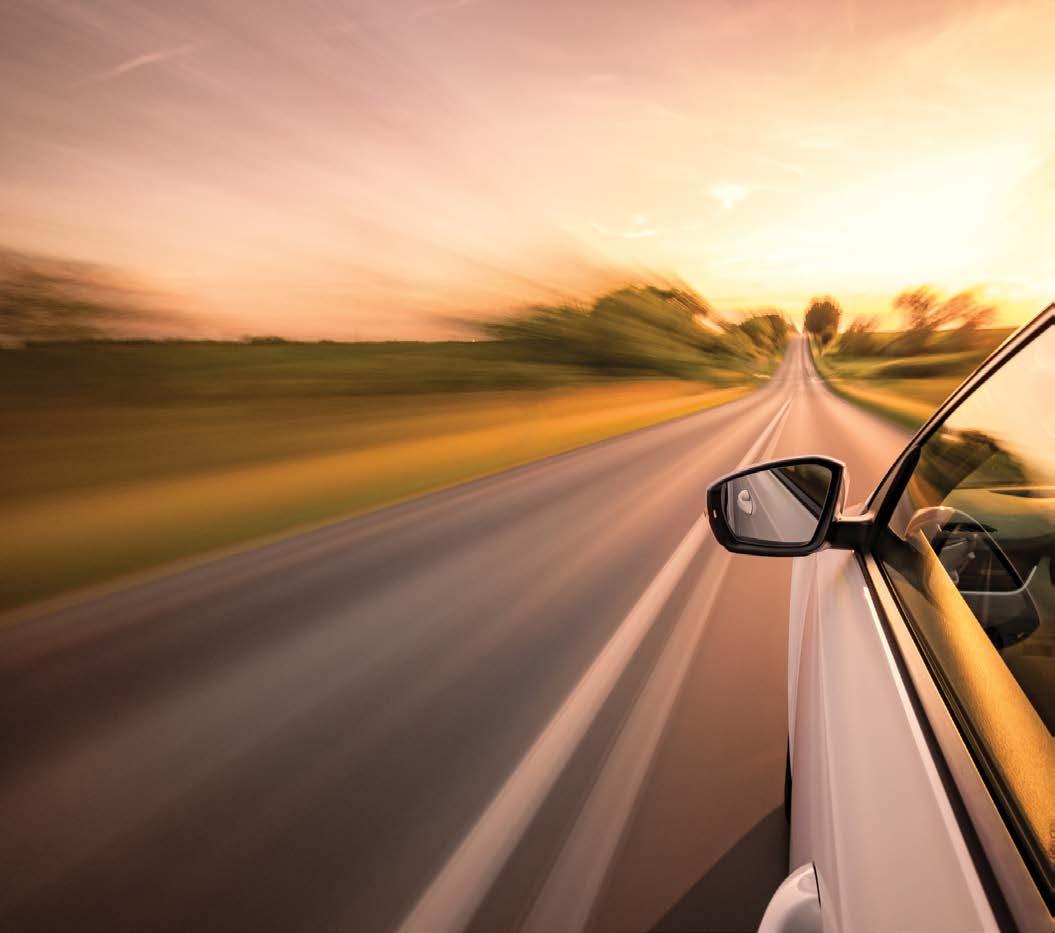
www.capacertified.org
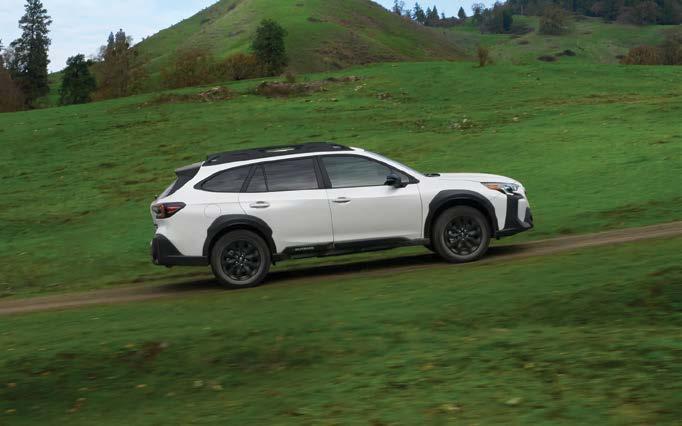
The following dealerships are eager to serve your needs. Call your local Subaru collision parts specialist today!


Cityside Subaru
Belmont
(617) 826-5013 (617) 489-0733 Fax Mon.-Fri. 7:30-5:30 parts@citysidesubaru.com
Long Automotive Group
Framingham (800) 982-2298 (508) 879-1212 Fax Mon.-Fri. 7:30-5 tschube@longauto.com
Metrowest Subaru LLC
Natick (888) 456-2200 (508) 745-2004 (508) 647-1539 Fax Mon.-Sat. 7-9 parts@metrowestsubaru.com

Liberty Subaru Emerson (888) 782-9493 (201) 261-3261 Fax Mon.-Fri. 7:30-6 parts@libertysubaru.com www.libertysubaru.com
Ciocca Subaru of Allentown Allentown (844) 210-1314 (610) 395-6530 (610) 398-2066 Fax Mon.-Fri. 7:30-5 subaruparts@cioccadealerships.com



Belknap Subaru Tilton (800) 358-4029 (603) 729-1300 (603) 729-1301 Fax Mon., Wed., Fri. 7:30-5 Tue., Thu. 7:30-7; Sat. 9-3 awright@belknapsubaru.com

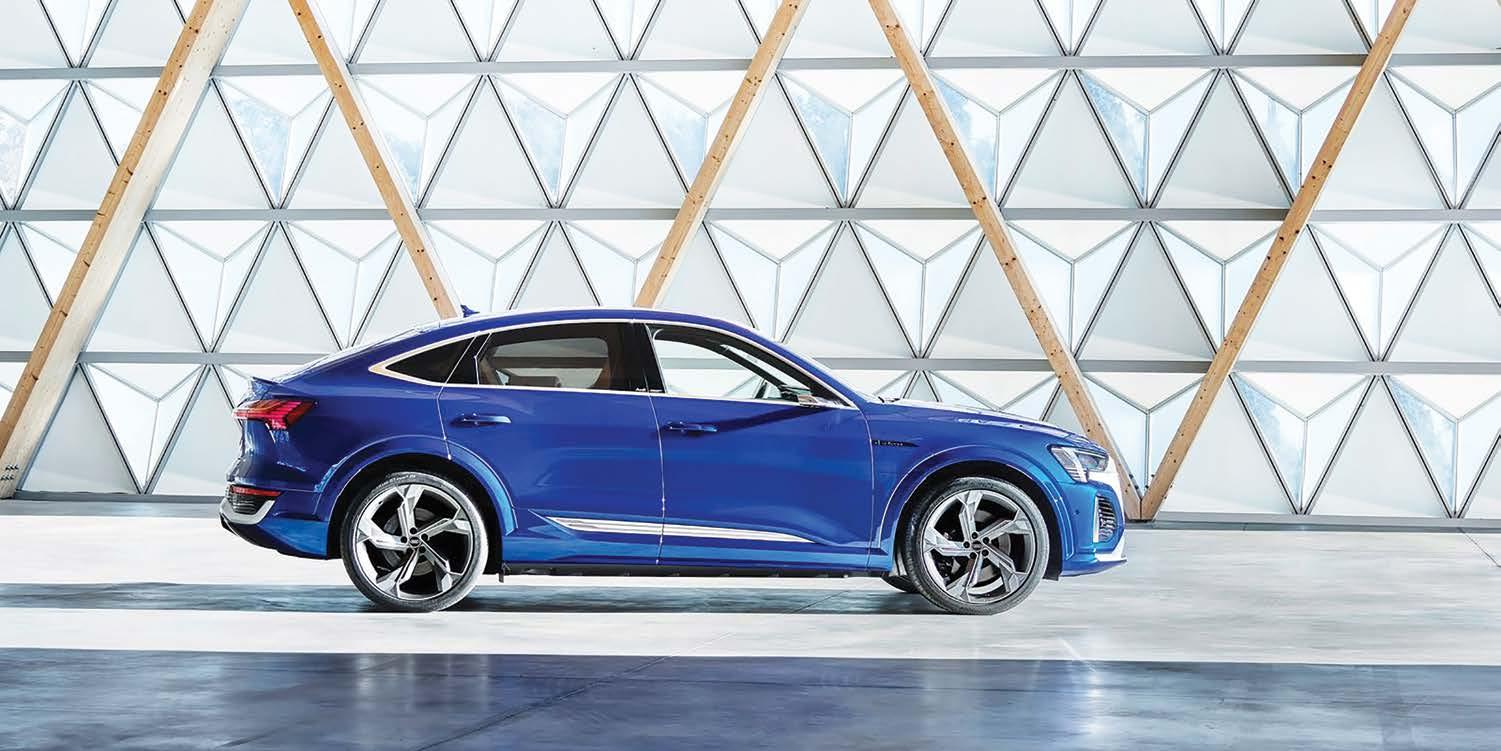
Audi Part Professionals are exper ts on collision par ts, replacement components and mechanical items.
Order Audi Genuine Parts from these select dealers.
Audi Silver Spring Silver Spring
301.890.3015
800.288.6982
301.890.3748 Fax
M-F 7:30am-5pm wholesaless@mileone.com www.audisilverspring.com
Audi Shrewsbury Shrewsbury
888.751.7214
508.581.5880
508.845.1642 Fax
M-F 7:30am-5pm audiwholesaleparts@mcgovernauto.com
Bell Audi
Edison
732.396.9630
732.396.9090 Fax
M-F 8am-5pm Sat 8am-4pm dmcsorley@bellaudi.com
Paul Miller Audi Parsippany
862.277.0009
973.575.5911 Fax
M-F 8am-6pm Sat 8am-5pm www.paulmilleraudi.com Audiparts@paulmiller.com
NEW YORK
Audi Southampton Southampton
631.204.2565
Tue-Sat 8am-5pm parts@audisouthampton.com www.audisouthampton.com
Biener Audi Great Neck
516.487.0127
516.829.4821 Fax M-F 8am-4:30pm Sat 8am-4pm www.bieneraudi.com alutchman@biener.com rfeyjoo@biener.com parts@biener.com
Audi Devon Devon
610.263.7026
610.263.7027
610.688.1742 Fax M-F 7:30am-6pm Sat 9am-4pm www.audidevon.com bnawn@audidevon.com wmohler@audidevon.com
Regardless of the age of your customer’s Audi, Audi dealers have access to over 200,000 part numbers and are supported by a nationwide network of distribution centers to help ensure non-stocked parts are delivered the next day.

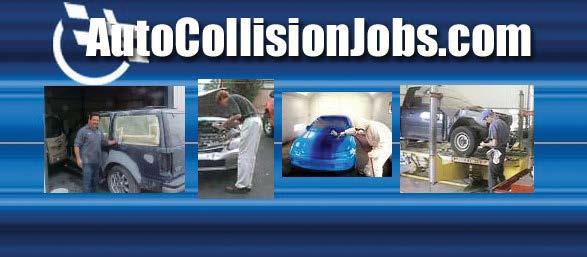



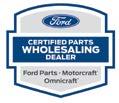

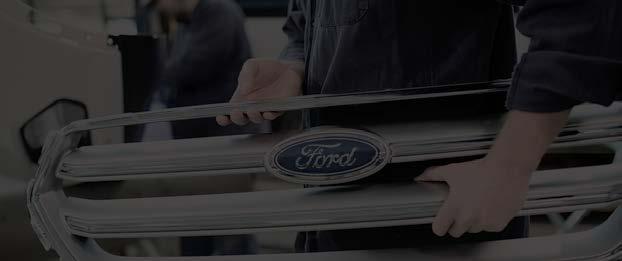
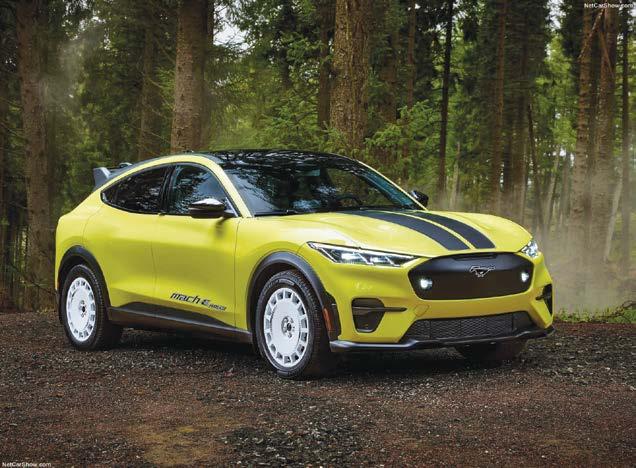


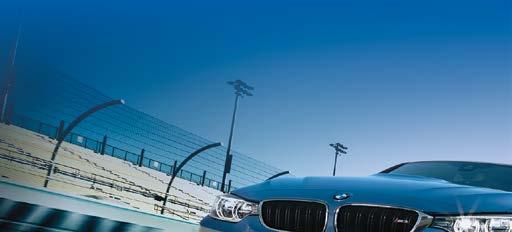


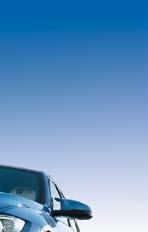





7:30am-6pm Sat 8am-4pm rhealy@prestigelexus com www�prestigelexus�com






CCC Intelligent Solutions Inc. announced CCC Payroll, a payroll management tool tailored specifically for collision repair shops. This new solution is integrated into the CCC ONE platform, providing a comprehensive system that melds labor tracking, payroll and production management into a singular, streamlined process.
CCC Payroll redefines how repair shop technicians engage with their compensation data. By integrating payroll functionalities into the CCC ONE platform, shops can reduce errors associated with standalone systems and export data seamlessly. Technicians now have realtime access to Repair Order (RO) level pay and hour data through the CCC ONE Mobile App, empowering them with immediate insights into how their efforts translate into earnings.
For further details, visit cccis.com/payroll.















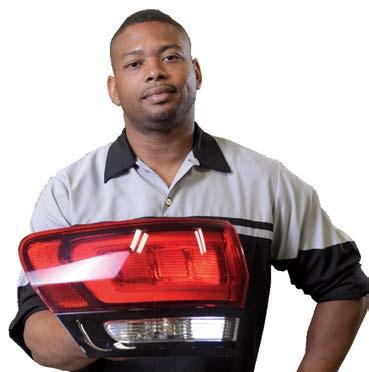



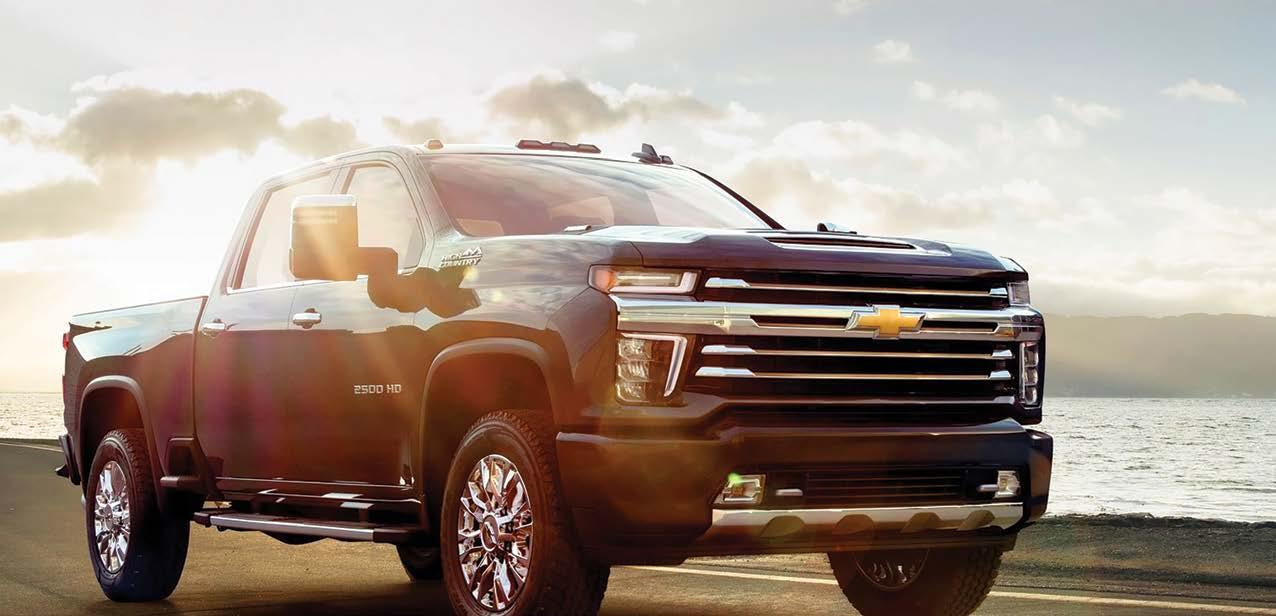





















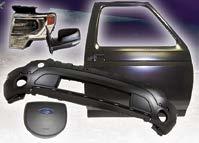


Co-President & Publisher
Nathan Gregory
Co-President & Publisher
Paul Stepanek
Editor Abby Andrews
Contributing Writers
Mike Anderson,Stacey Phillips, John Yoswick, Cole Strandberg
Advertising Sales
Joe Momber, Norman Morano, Steve Sklenar
Office & Media Manager
Kelly Cashman
Director of Digital
Bryan Malinski
Design Director
Vicki Sitarz
Art Director
Rodolfo Garcia
Accounting & HR Manager
Heather Priddy
Content Manager
Randi Scholtes
Serving Illinois, Iowa, Indiana, Kansas, Kentucky, Michigan, Minnesota, Missouri, Nebraska, North Dakota, Ohio, South Dakota, Wisconsin and adjacent metro areas. Autobody News is a monthly publication for the autobody industry. Permission to reproduce in any form the material published in Autobody News must be obtained in writing from the publisher.
©2024 Autobody News, LLC.
Autobody News P.O. Box 1516 Carlsbad, CA 92018 (800) 699-8251 (760) 603-3229 Fax www.autobodynews.com editor@autobodynews.com
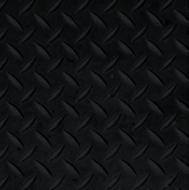



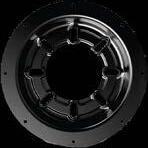
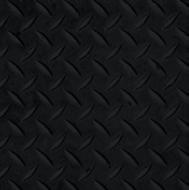
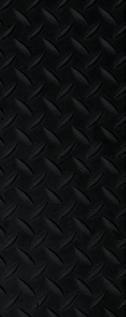




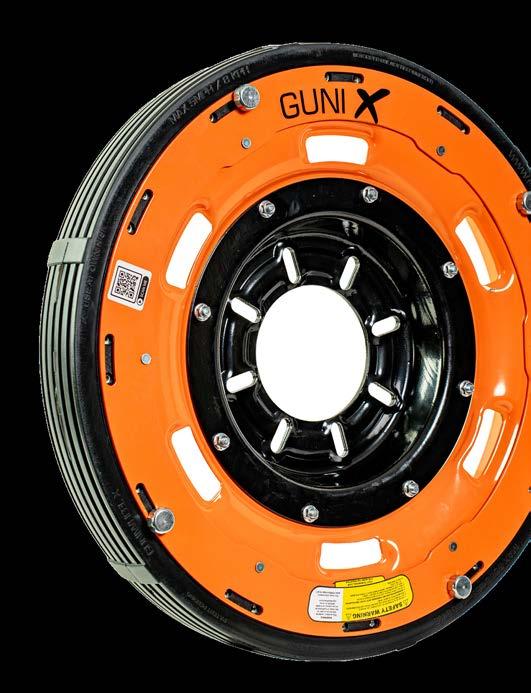
By Abby Andrews Autobody News
Subletting out certain steps in the repair process can hurt a shop’s operational flow and its bottom line.
Steve Dawson, Washington, D.C., regional manager for Hunter Engineering, stopped by The Collision Vision podcast, driven by Autobody News and hosted by Cole Strandberg, for the second episode in its “Operational Excellence: Shop Strategies for Success” series to talk about those profit centers some shops might be missing out on.
Pre-Scans
Pre-scanning a vehicle identifies all of the modules and systems on the vehicle that will need to be recalibrated based on the needed repairs. “The sooner we identify that it’s an issue and we build a repair plan around it, the quicker we get the car done and out the door for the customer,” Dawson said.
Strandberg asked how performing pre-scans can contribute to a shop’s bottom line.
Dawson said No. 1, shops will be able to bill insurance companies for the step. “We’re going to have all the appropriate printouts and things
required for documentation,” he said. “We’re going to not be doing this for free.
All three major estimating systems — CCC, Mitchell and Audatex — have a function to automatically add line items identified by the pre-scan to estimates, Dawson said.
“It’s a very common practice to be getting paid for those pre-scans,” Dawson said. “As long as you’re providing the documentation for that pre-scan, you’re able to put that line item on the estimate and make sure that you’re getting compensated for doing that.”
Pre-scanning allows shops to order any needed electronic components, just as they order other needed parts like fenders and the hood, before starting the repair, which gets the repair finished faster and the vehicle out the door, Dawson said.
Strandberg pointed out that meant even shops who can’t get the insurance company to pay for pre-scanning will see a profit gain in terms of cycle time.
Pre-scanning also identifies ADAS components that may have not been directly involved in the collision, but were impacted by ones that were.
“Something that is minor, maybe a camera or an ultrasonic sensor in
the bumper, that’s damaged may have an impact on three or four other systems. By identifying that early on, it really saves you a lot in the end of the repair,” Dawson said.
Strandberg said alignments are “uniquely polarizing” among collision repairers, as some people say there’s no money in doing it in-house, while others say it increases profitability. Dawson said the latter viewpoint is a misconception, as repairers think the equipment takes up too much space and insurers would prefer they sublet it anyway.
“It’s that education process,” Dawson said. “Collision alignments are different in a lot of cases. Very few [shops] actually take the time to pull the repair procedure for an alignment, and specifically a collision alignment.”
Many OEMs have published repair procedures for alignments, with several more steps than one done for maintenance, Dawson said.
“I’m sure at some point, if you’ve been subletting your alignments out to a dealership or a local tire shop down the street, you’ve probably gotten the car back and they say, ‘Hey, something’s bent and we don’t know what’s wrong with it,’ and you gotta figure it out,” Dawson said. In that case, the shop won’t have the data it needs from the suspension to figure out the problem.
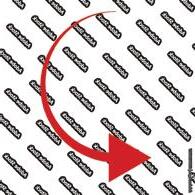



But if the shop did its own alignments, it would measure all suspension components and be able to identify which ones were damaged. That would allow the shop to document it for insurance billing and order the parts before beginning the repair.
“We’re making our cleanest first sheet right off the bat, and that’s really what the goal is,” Dawson said.
It also removes potential liability issues with relying on a third party for alignments. “I’ve had horror stories of shops that have invested in alignment equipment mainly because the shop that they had been taking their cars to wasn’t living up to the quality that they felt was needed for their customers,” Dawson said.
Putting a vehicle on an alignment system before writing an estimate or repair plan takes about five to 10 minutes and provides all of the measurements to determine which components are damaged, Dawson said.
“We’re able to build that right into that repair plan right off the bat,” Dawson said.
It also tends to find hidden damage on the opposite side of the impact.
ADAS has proven to reduce both frequency and severity of collisions, but it requires cameras and sensors that often must all be calibrated and working correctly for any of them to function properly, Dawson said.
Subletting out that work means it might not be done properly, which would affect the function of the vehicle once it’s returned to the customer, and, if it malfunctions, potentially set up the shop for a lawsuit.
“This is not a whole lot different than if we replace three brake pads instead of doing all four. We’re responsible,” Dawson said. “When we follow those OEM procedures, we don’t have to worry. We know that we did it right. It’s critical to have a tool that gives you the documentation, if it’s through photos or actual readings of where those targets were placed.
“It’s critical to have that documentation to ensure that what you’re providing to your customer is spot on. And if, God forbid, you got pulled into a lawsuit with it, you’d have documents to say, ‘This is why we know what we’ve done is correct.’”
Space requirements for proper static calibration can vary between OEMs, Dawson said, but all calibrations require indoor lighting and level floors.
It can also be expensive and timeconsuming, Dawson said. He cited a “Who Pays for What?” survey that found shops reported the average calibration costs $235. A vehicle that requires calibration of, for instance, five different systems could need 10 hours to do so.
“A car that’s got a front-end hit’s probably going to have at least two, could have four or five, six, seven of them,” Dawson said. “The equipment [on the vehicles] has gotten so much more sensitive that it’s requiring a lot of these extra steps.”
Do pre-alignment checks to identify concerns early. It reduces cycle time by providing the cleanest first sheet. Perform pre-scans, alignments and ADAS calibration in-house to keep the repair in your control, which also contributes to reduced cycle times, as well as increased customer satisfaction.
The alignment and calibration bay may be your most lucrative bay in the shop.


